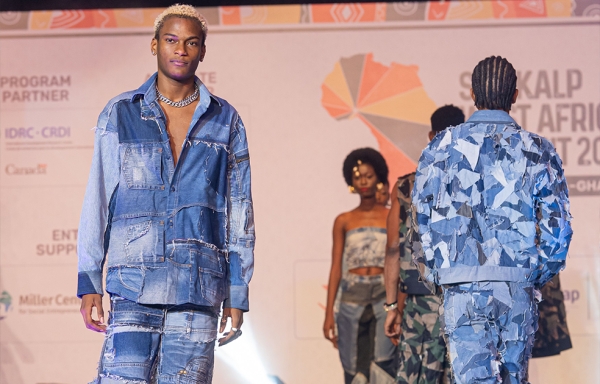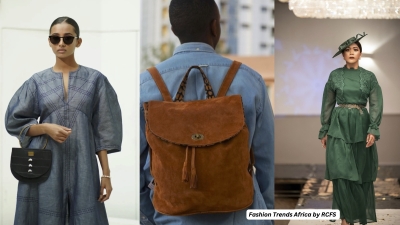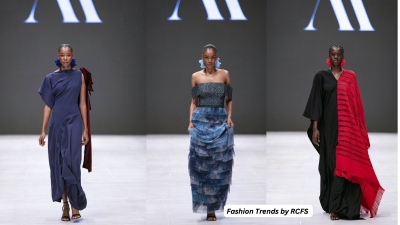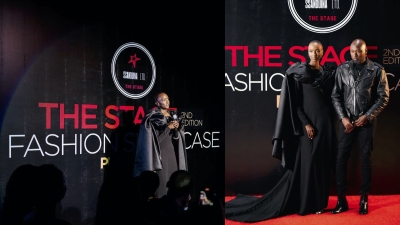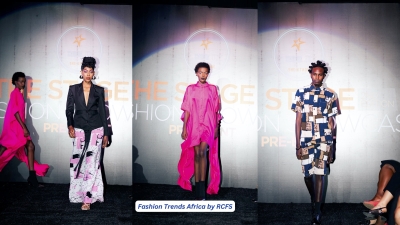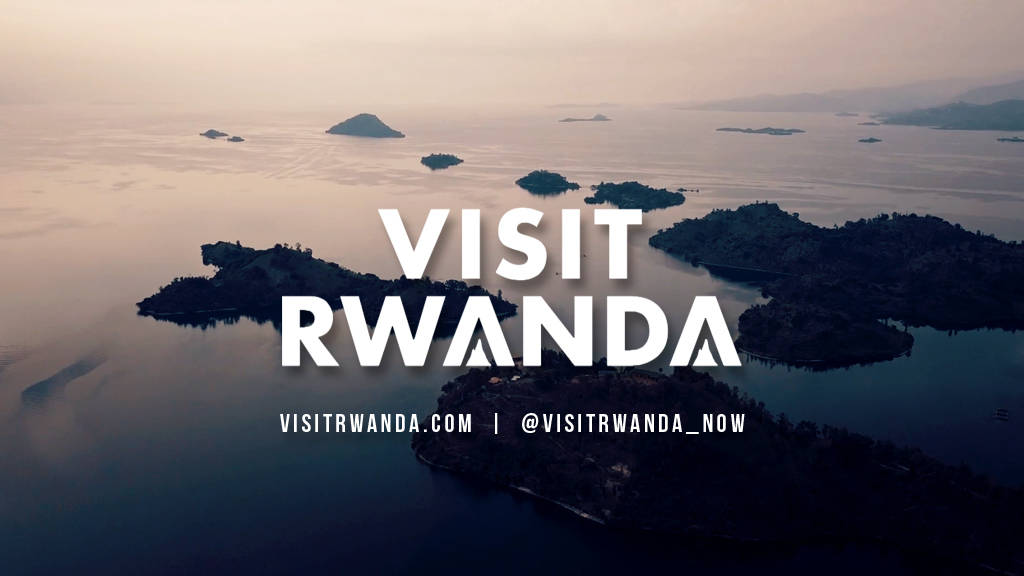
RCFS
The Vivo Fashion Group journey began 12 years ago and has grown to 27 stores worldwide, the latest of which we opened today in Atlanta, Georgia. It was founded by Wandia Gichuru and Anne Marie Burugu in 2011. Within 12 years, the Vivo is East Africa’s largest ladies' fashion brand, designing and manufacturing 100% on the African continent. More importantly, we aim to inspire a whole generation of African fashion entrepreneurs.
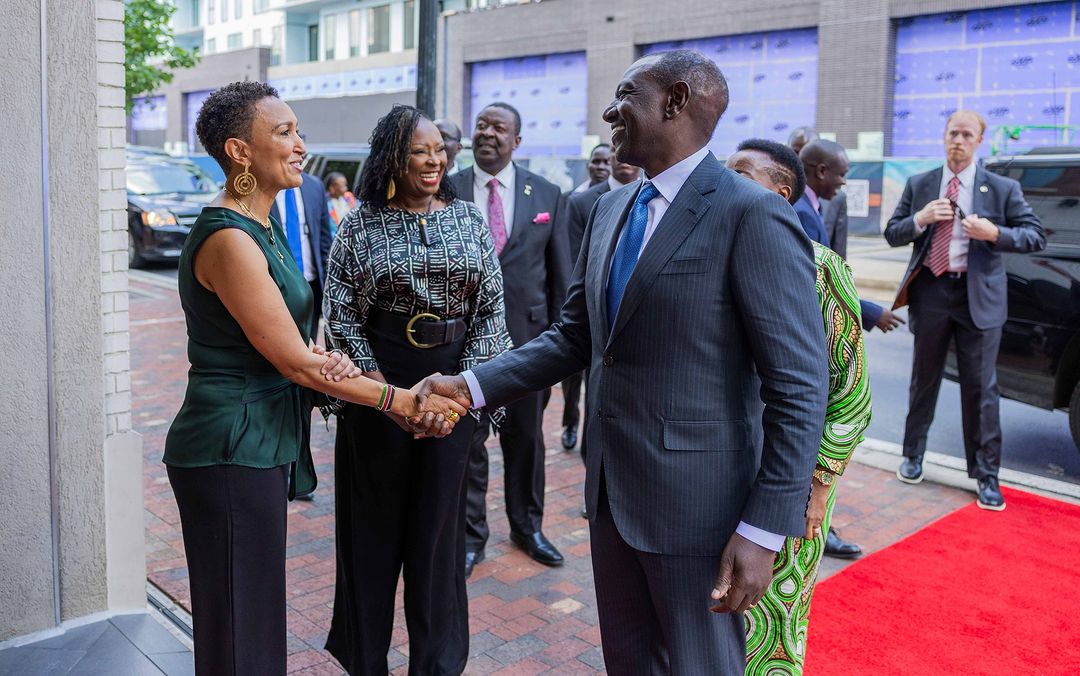 Wandia Gichuru CEO and Co-founder of Vivo shaking hands with the President of the Republic of Kenya William Ruto after officially opening the shop in the USA [PHOTO IG]
Wandia Gichuru CEO and Co-founder of Vivo shaking hands with the President of the Republic of Kenya William Ruto after officially opening the shop in the USA [PHOTO IG]

According to Kenya's first lady, Mama Rachel Ruto EGH the founders have done good for Kenya and promoted made in Kenya in fashion worldwide.
" Wandia Gichuru embodies our true entrepreneurial spirit and the power of dreaming big. She has continued to partner with other complementary Kenyan brands, demonstrating that together we can achieve more. The internationalization of our home-grown brands like Vivo supports our manufacturing and export agenda as a nation, creating jobs and foreign exchange. Congratulations Vivo Fashion Group"
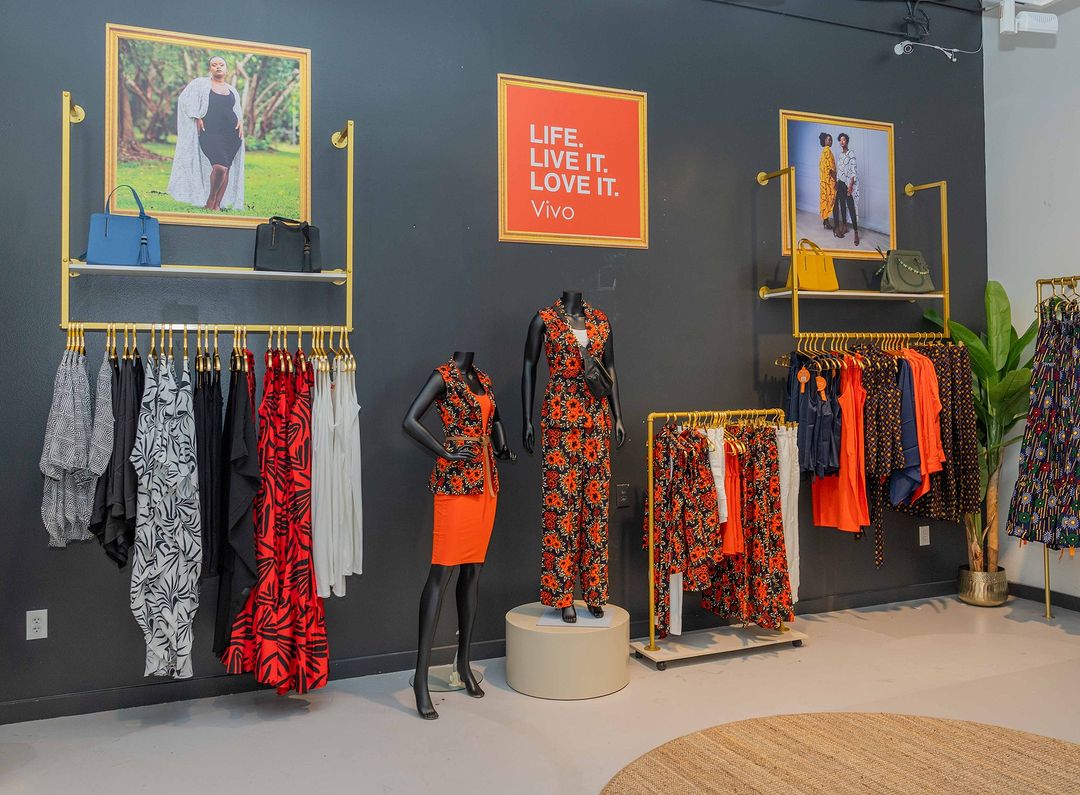 Inside the Vivo shop in the USA PHOTO IG]
Inside the Vivo shop in the USA PHOTO IG]
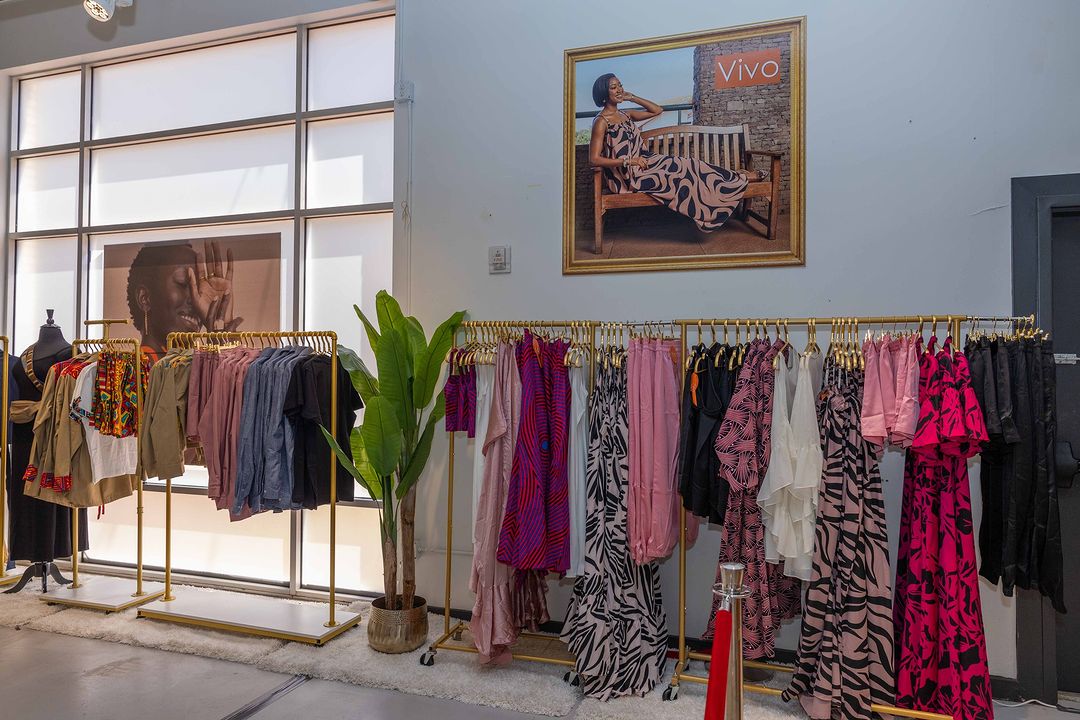 Inside the Vivo shop in the USA PHOTO IG]
Inside the Vivo shop in the USA PHOTO IG]
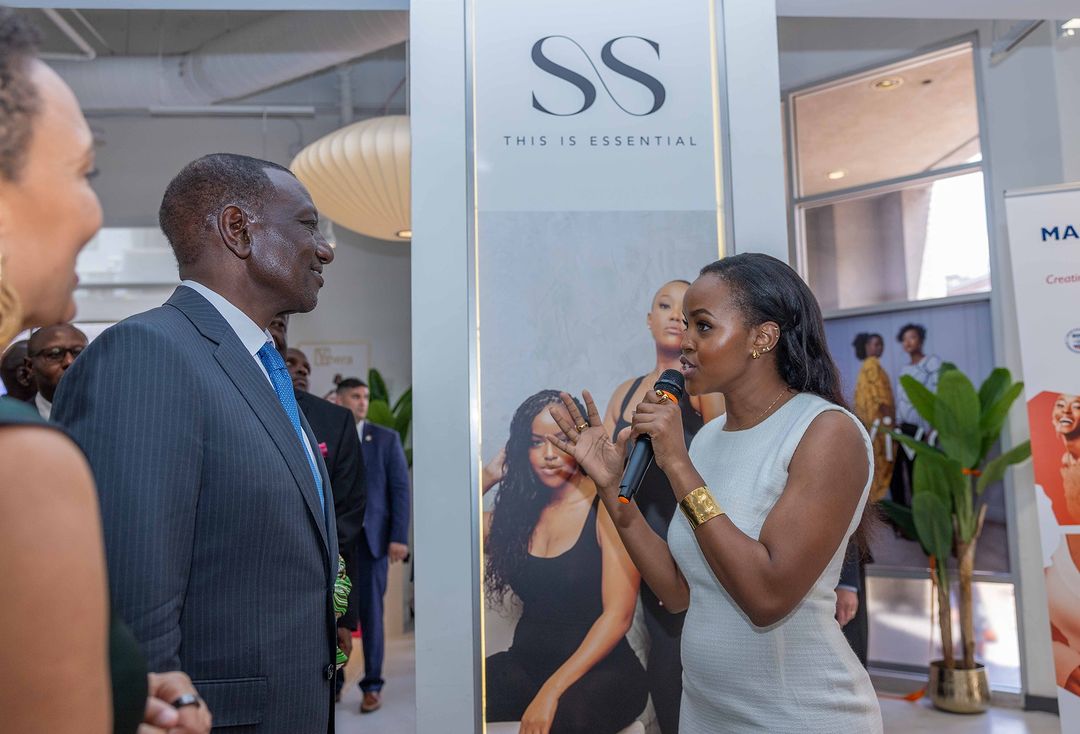 Kenyan fashion designer explaining to the Kenya President their work and products [PHOTO IG]
Kenyan fashion designer explaining to the Kenya President their work and products [PHOTO IG]
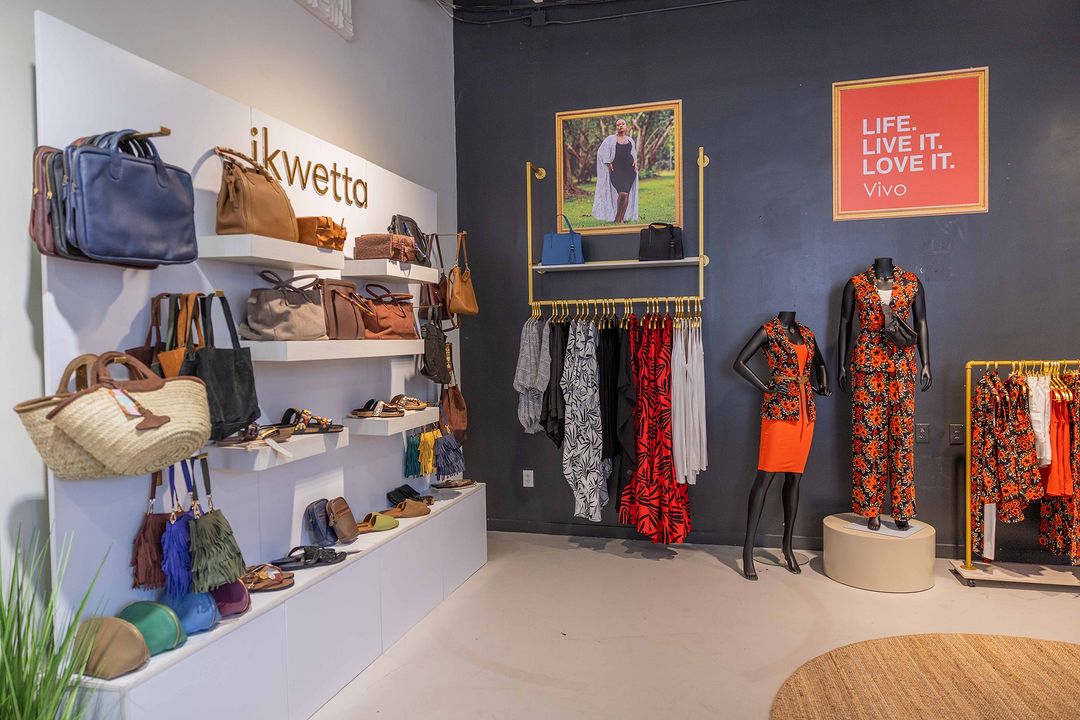 Inside the Vivo shop in the USA PHOTO IG]
Inside the Vivo shop in the USA PHOTO IG]
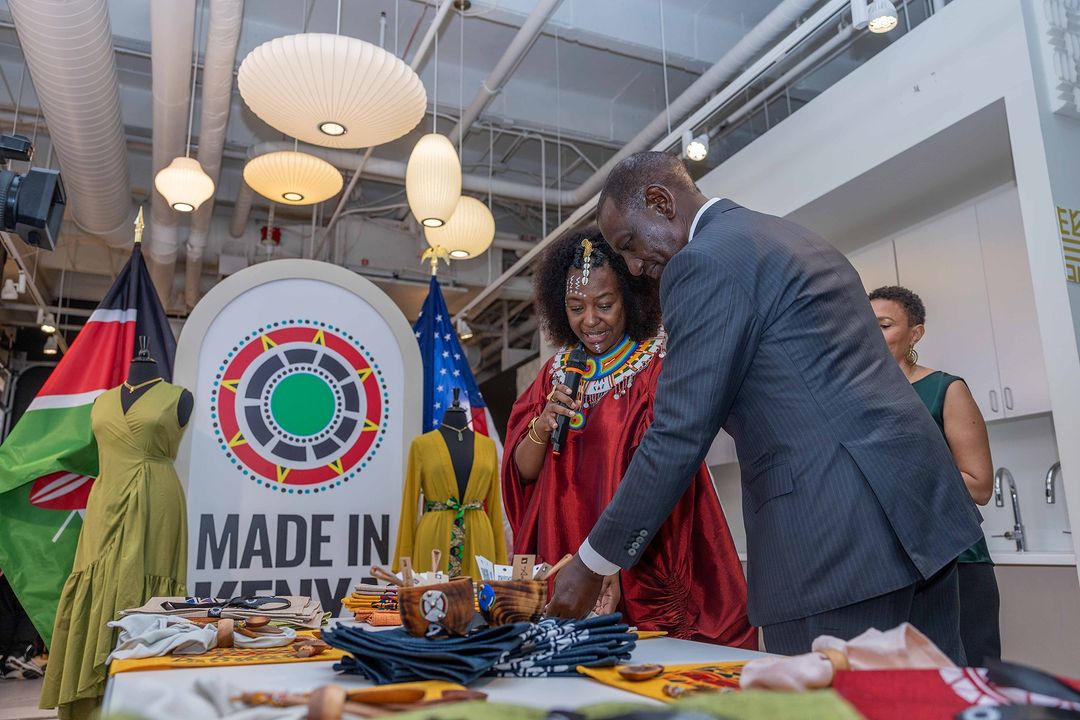
President William Ruto visits different stands [PHOTO IG]
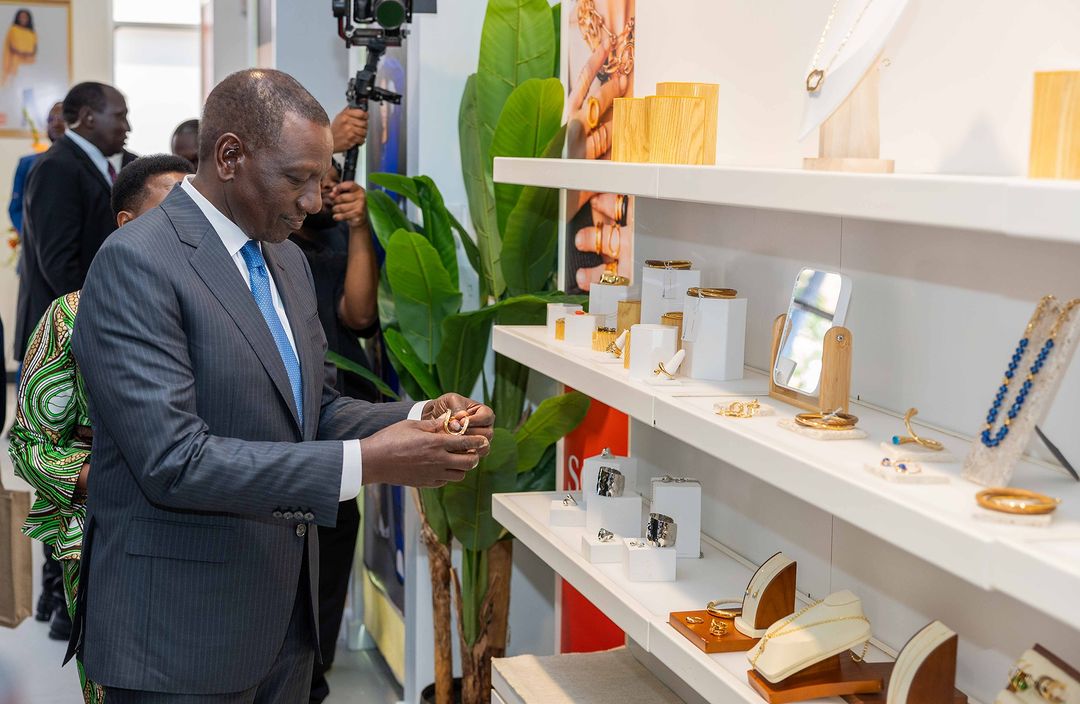 President William Ruto visits different stands [PHOTO IG]
President William Ruto visits different stands [PHOTO IG]
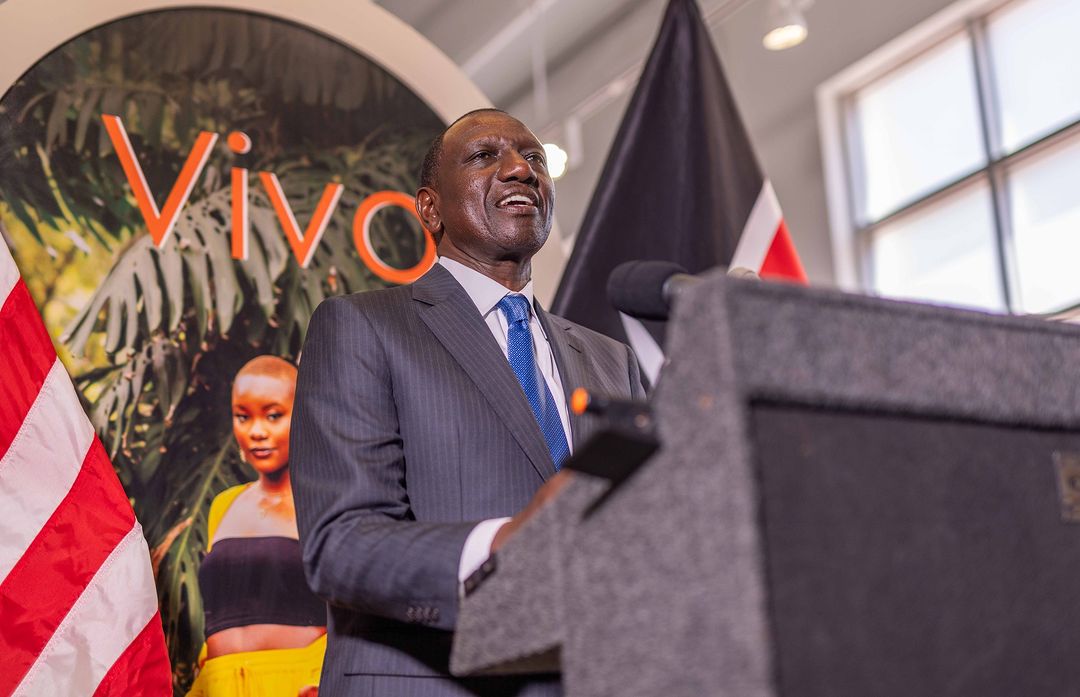 President William Ruto visited different stands and delivered remarks on how the Kenya government will continue to support local fashion designers and the creative industry in general [PHOTO IG]
President William Ruto visited different stands and delivered remarks on how the Kenya government will continue to support local fashion designers and the creative industry in general [PHOTO IG]
Kenya has a rich cultural heritage with diverse traditional attires and textiles that have influenced modern fashion trends. The colorful prints, beadwork, and intricate designs from various Kenyan communities have served as inspiration for contemporary fashion designers. In the past two decades, there has been a surge of talented Kenyan fashion designers who have gained popularity both locally and internationally.
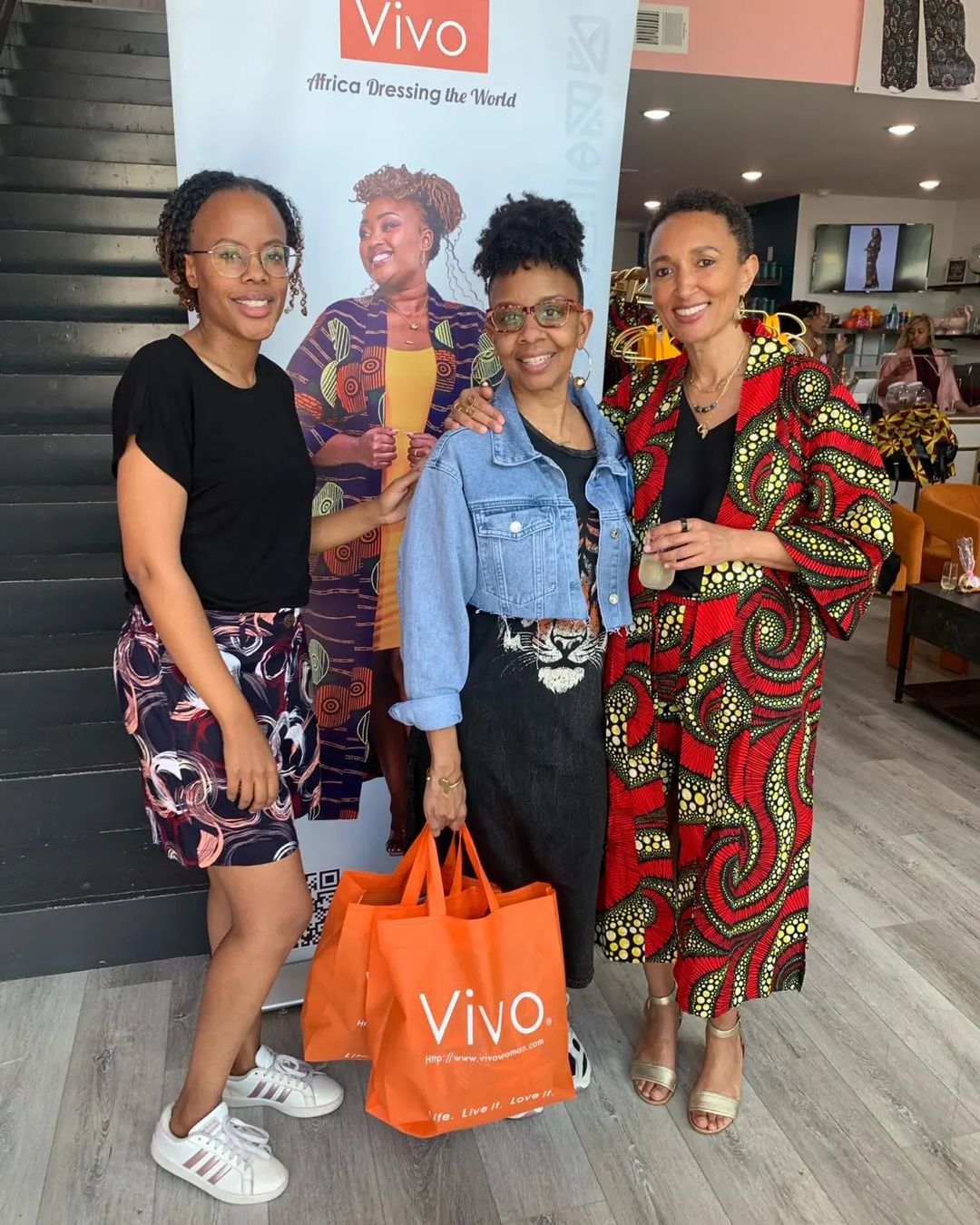 Team Vivo [PHOTO IG]
Team Vivo [PHOTO IG]
Furthermore, Kenya has a growing textile and apparel manufacturing industry, which has contributed to the development of the fashion sector. Several textile mills and garment factories operate in the country, providing employment opportunities and supporting local fashion brands. There are fashion and design institutions in Kenya, such as the University of Nairobi's Department of Design and the Kenyatta University's Department of Fashion Design and Marketing, that have played a crucial role in nurturing and training aspiring fashion designers and professionals.

"WE ARE OPEN? We’re thrilled to announce the grand opening of our new @vivo_woman store bringing you the finest #madeinafrica fashion✨ Step into our fashion paradise where every piece tells a story of elegance and discover the latest trends" says the Vivo sales team on their Instagram account
OTHER PHOTOS DURING THE OPENING CEREMONY OF THE VIVO FASHION GROUP USA


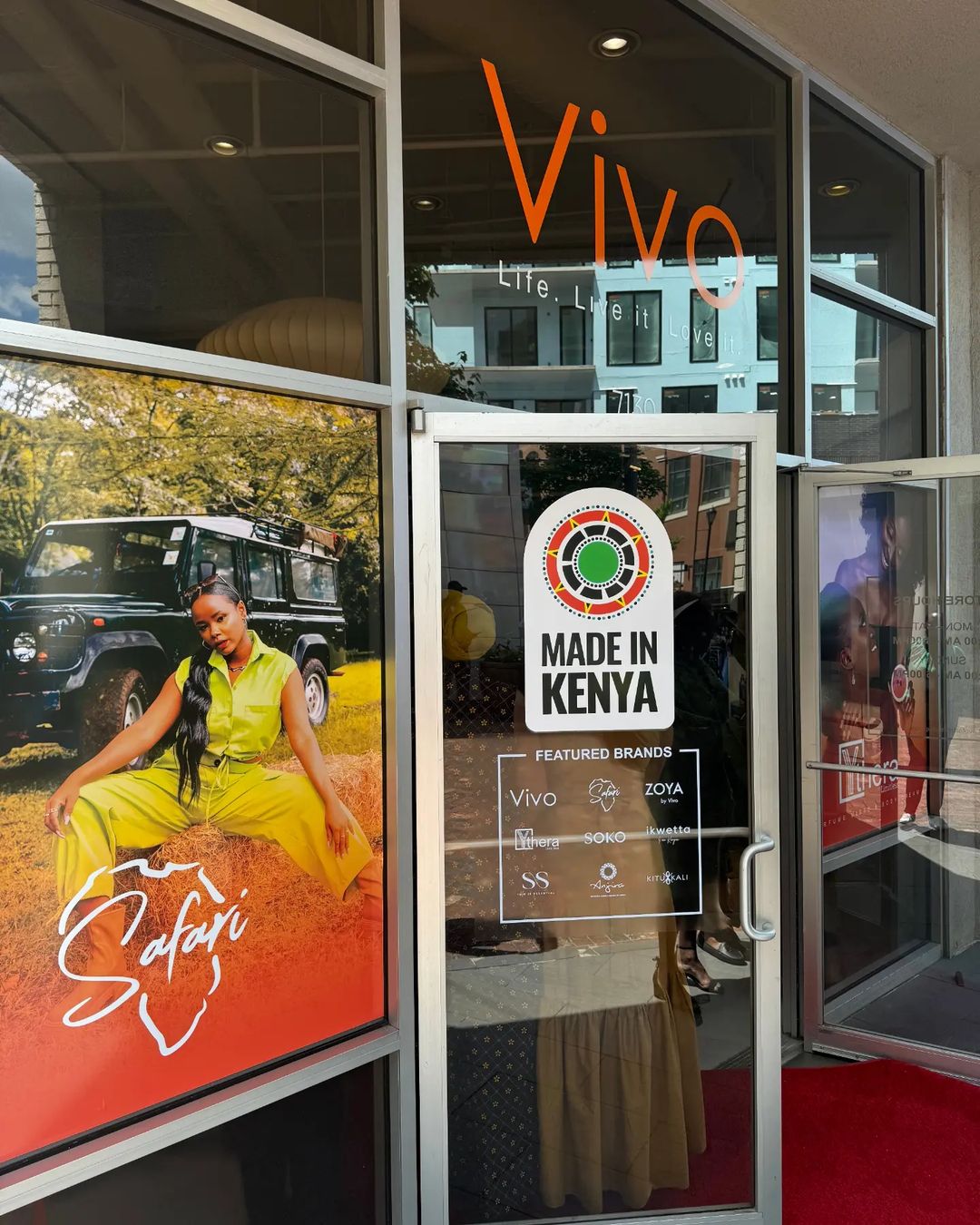
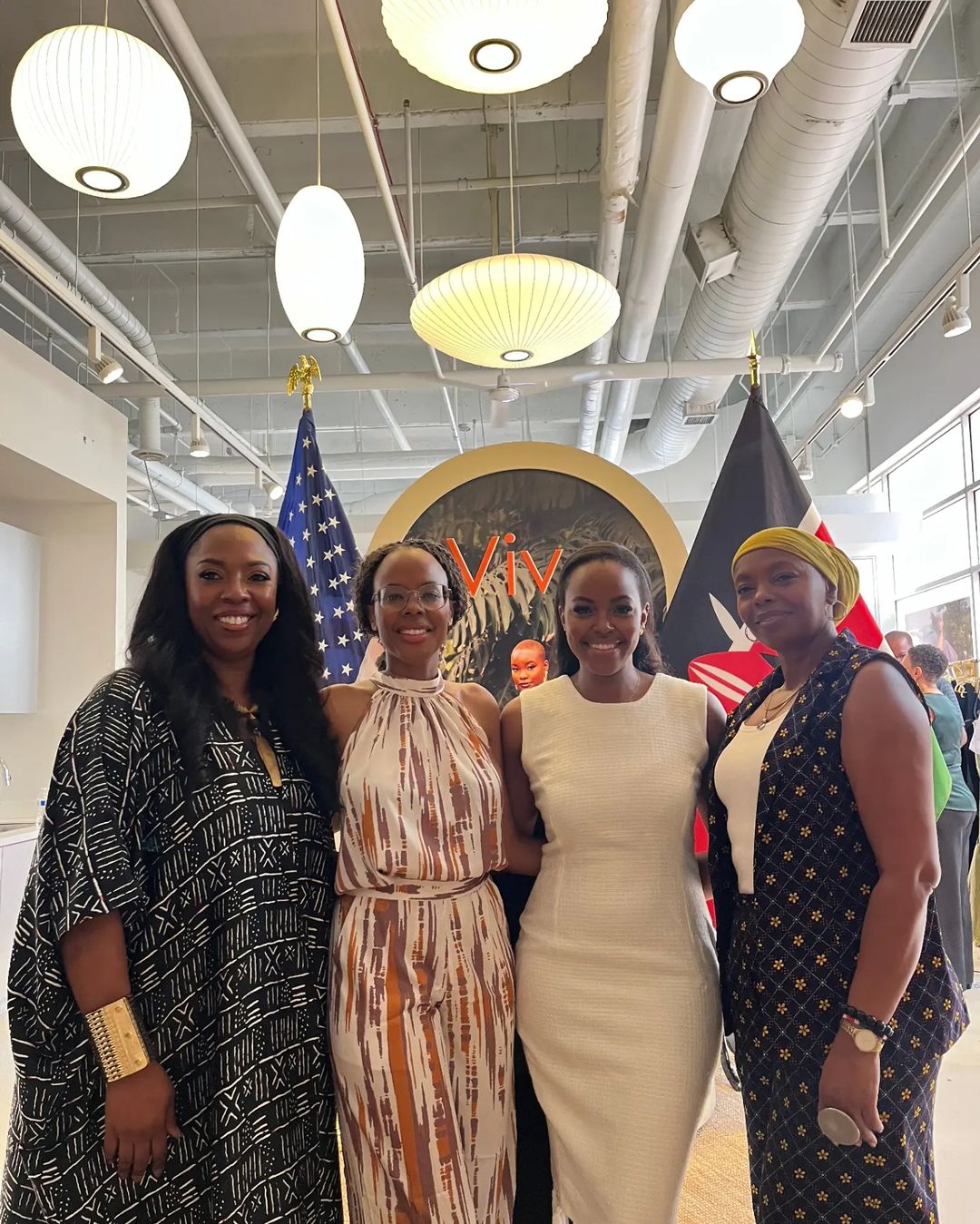
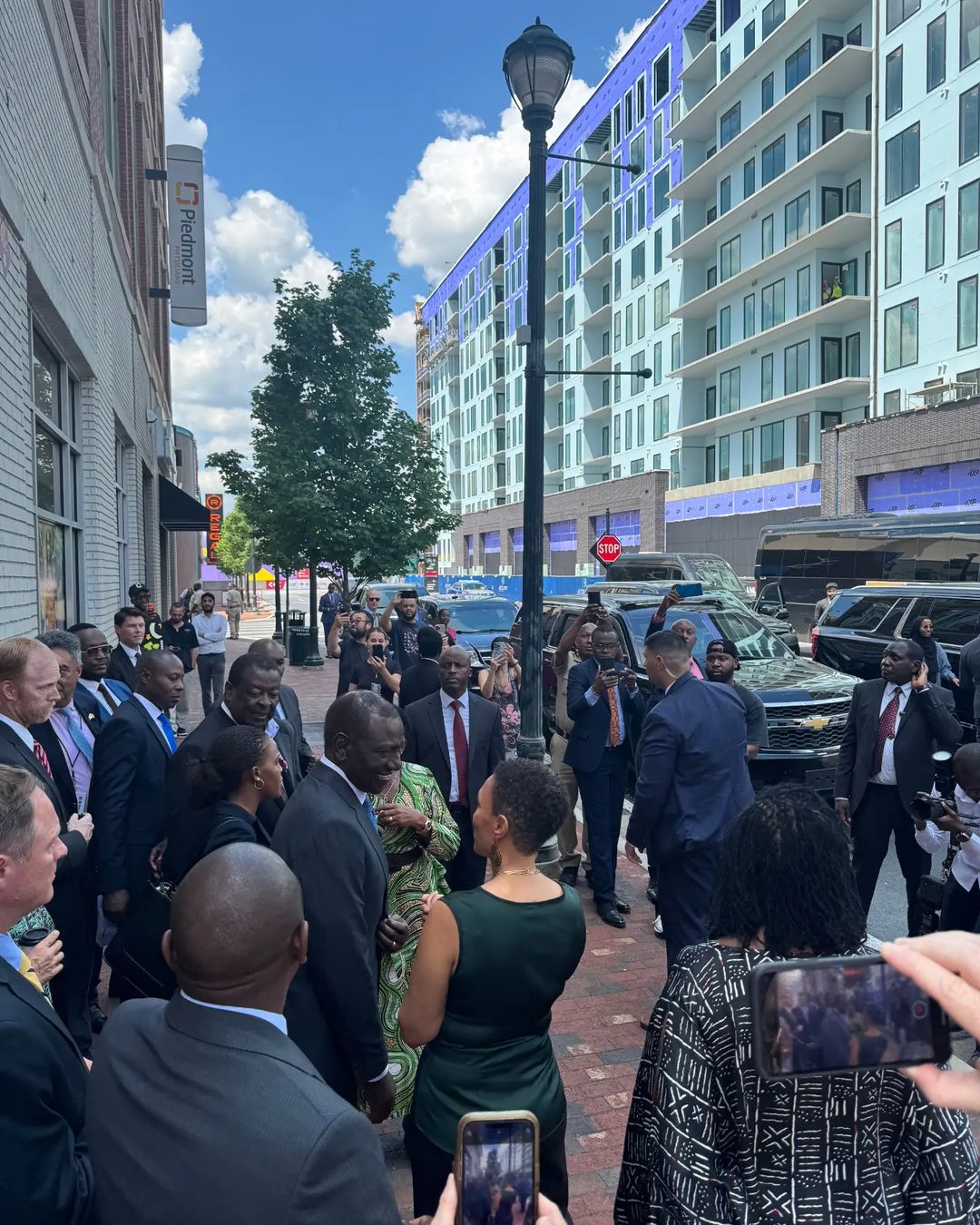
The SoCreative Summit, initiated by the British Council is dedicated to supporting creatives and social entrepreneurs. This year's theme"EMERGENCE" explores various aspects of creative growth and identity across Africa, from new work and ideas to technology and cultural narratives.
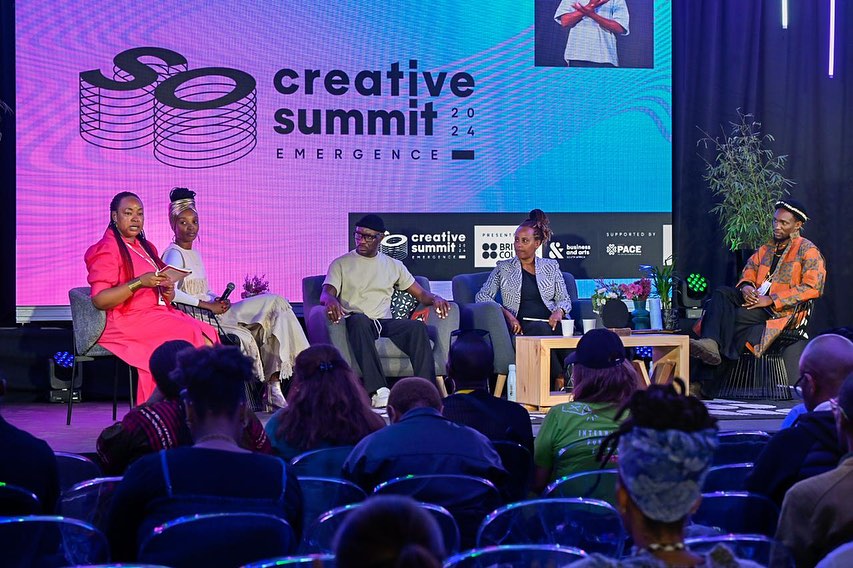 Panel discussions on Day 1 of the SoCreative Summit in Johannesburg [PHOTO EAA]
Panel discussions on Day 1 of the SoCreative Summit in Johannesburg [PHOTO EAA]
According to the summit is a platform for Knowledge sharing " Summits allow for the exchange of ideas, best practices, and learnings across creatives and entrepreneurs from different African countries. This cross-pollination can spark new collaborations and projects. Large gatherings enable attendees to build connections with peers from other nations, which could lead to future partnerships, investments, or joint ventures" says event organizers

Day 1 of the SoCreative Summit in Johannesburg [PHOTO EAA]
By exploring themes like new technologies and cultural narratives, participants gain exposure to cutting-edge developments shaping the creative economy across Africa. Fashion designers from the Creative DNA Africa program were selected to showcase during this continental event from Zimbabwe. Uganda, Kenya, and Nigeria.
 Chido Kaseke, the Creative Director and founder of PatCh Maokoe [PHOTO EAA]
Chido Kaseke, the Creative Director and founder of PatCh Maokoe [PHOTO EAA]
Chido Kaseke, the Creative Director and Founder of PatCh Maokoe Zimbabwe leads a team of skilled women artisans in crafting high-end bags from the hessian fibre in Harare. Each bag is meticulously handmade, reflecting the brand's commitment to quality and sustainability. Chido's leadership ensures that every stitch is carefully placed, emphasizing the brand's dedication to eco-conscious practices. Combining hessian with locally sourced leather creates durable and biodegradable accessories, including their Zero-Waste Range, which utilizes remnants from production.
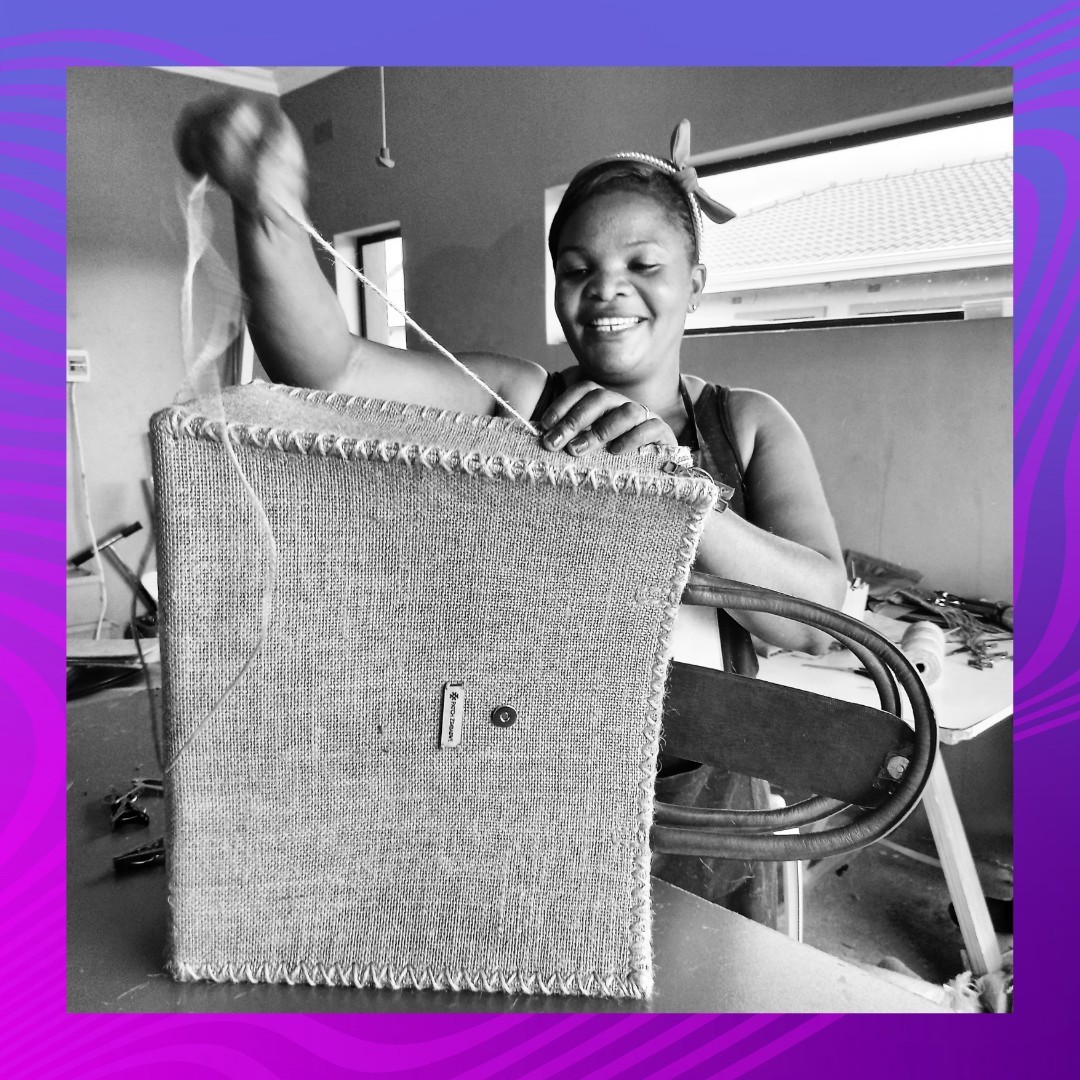 Made by PatCh Maokoe [PHOTO EAA]
Made by PatCh Maokoe [PHOTO EAA]
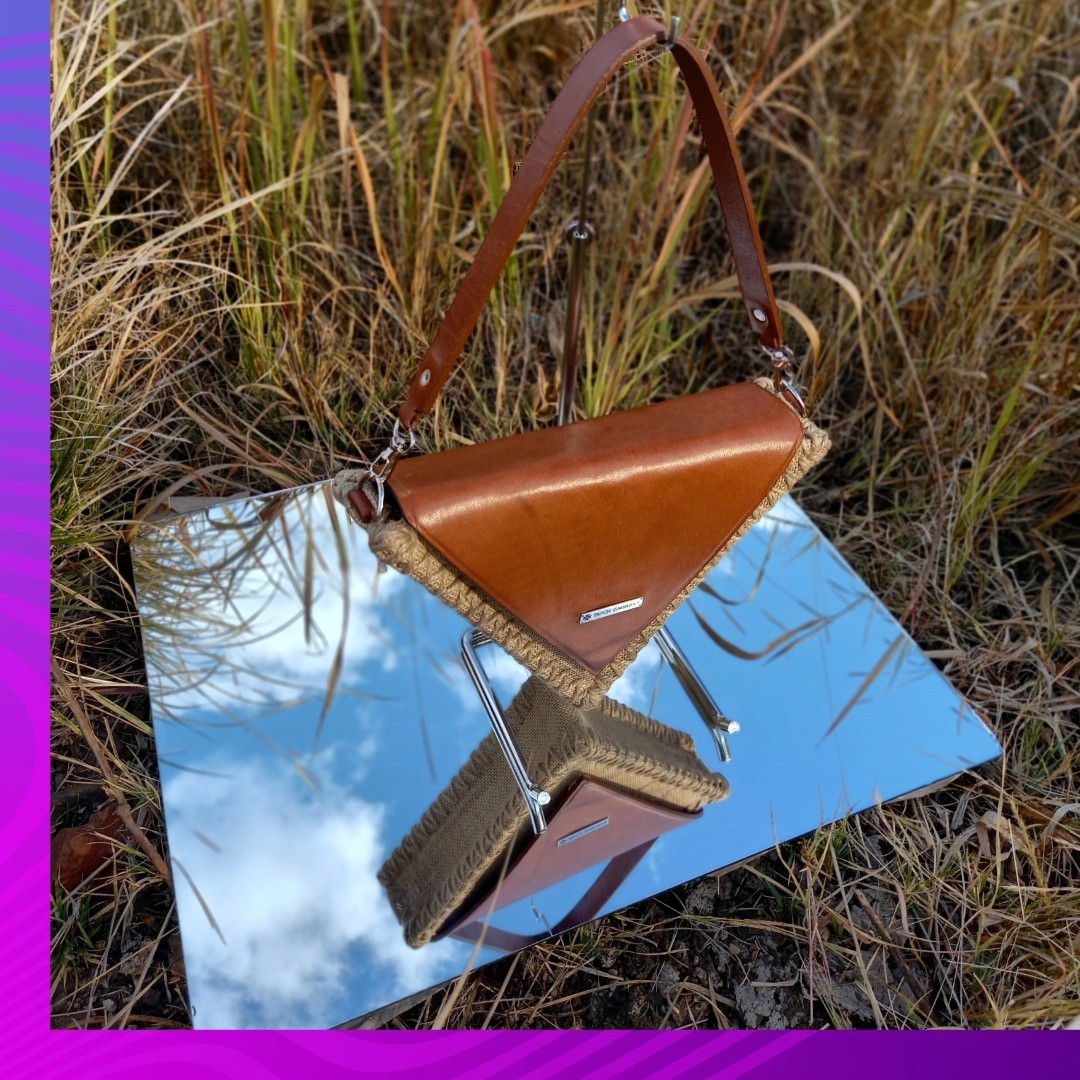 Made by PatCh Maokoe [PHOTO EAA]
Made by PatCh Maokoe [PHOTO EAA]
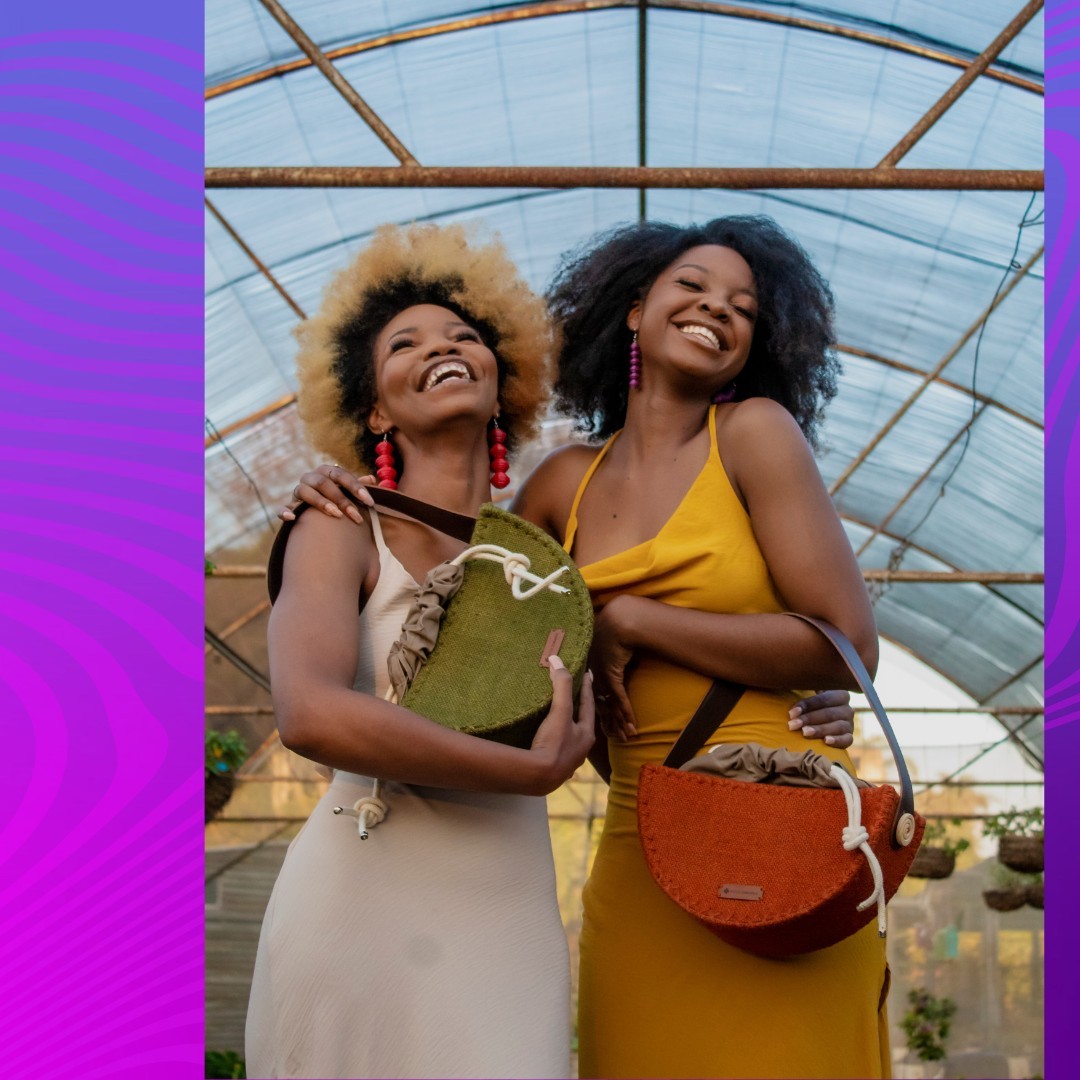 Made by PatCh Maokoe [PHOTO EAA]
Made by PatCh Maokoe [PHOTO EAA]
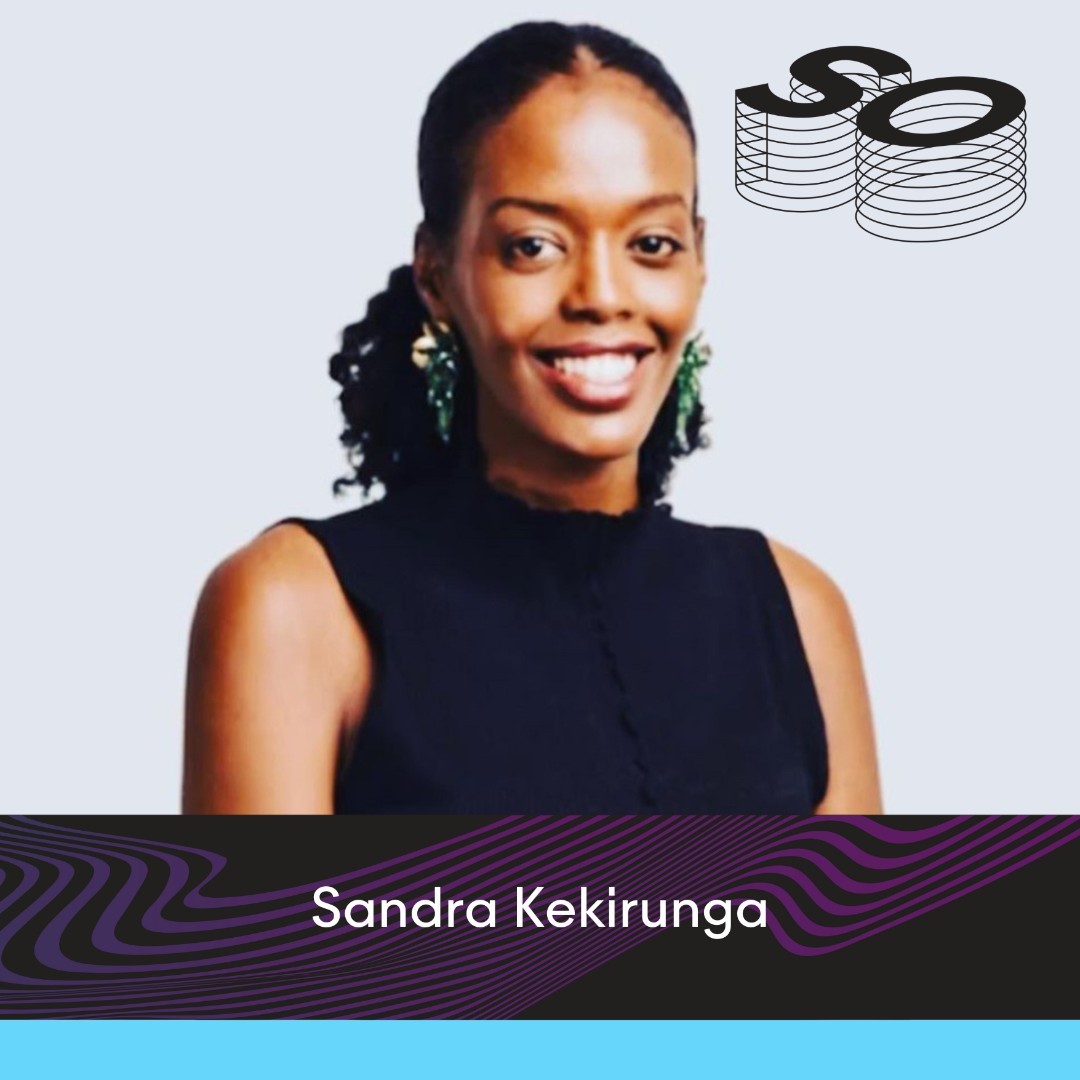 Sandra, the founder of Ihato [PHOTO EAA]
Sandra, the founder of Ihato [PHOTO EAA]
Sandra, the founder of Ihato Designs, a jewellery and accessories business leads a contemporary brand that stands as a beacon of sustainability and craftsmanship. Inspired by the Ruhororo language of western Uganda, Ihato embodies resilience and determination in its commitment to reclaiming brass and repurposing cow horns to create exquisite jewellery and accessories. In a world consumed by fast fashion, Ihato offers a refuge for those who prioritise quality and sustainability. Each piece crafted by Ihato tells a story of heritage and conscious choice, inviting customers to embrace mindful consumption. More than mere adornments, Ihato pieces symbolise empowerment, authenticity, and the enduring allure of conscious luxury.
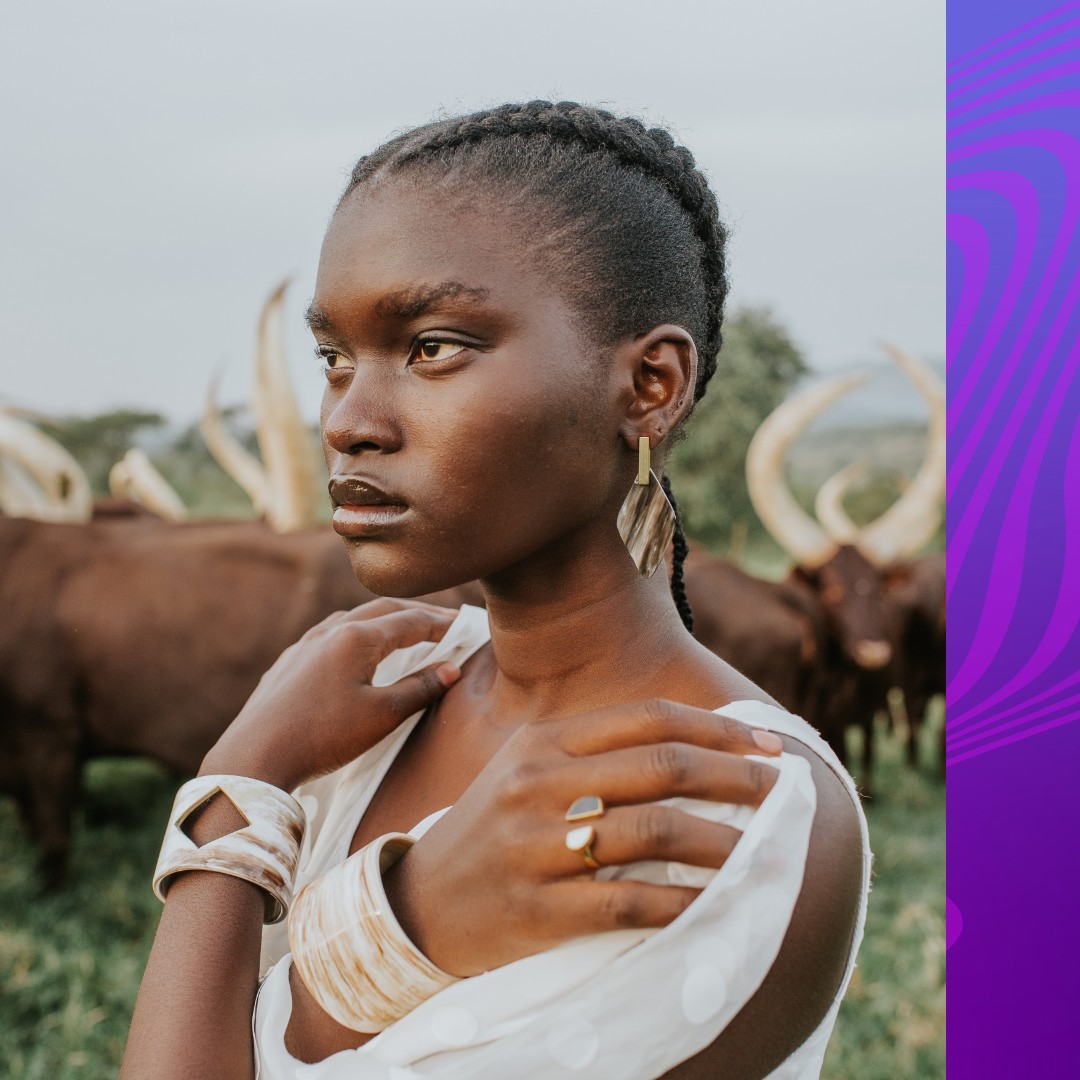
Made by Ihato Designs [PHOTO EAA]
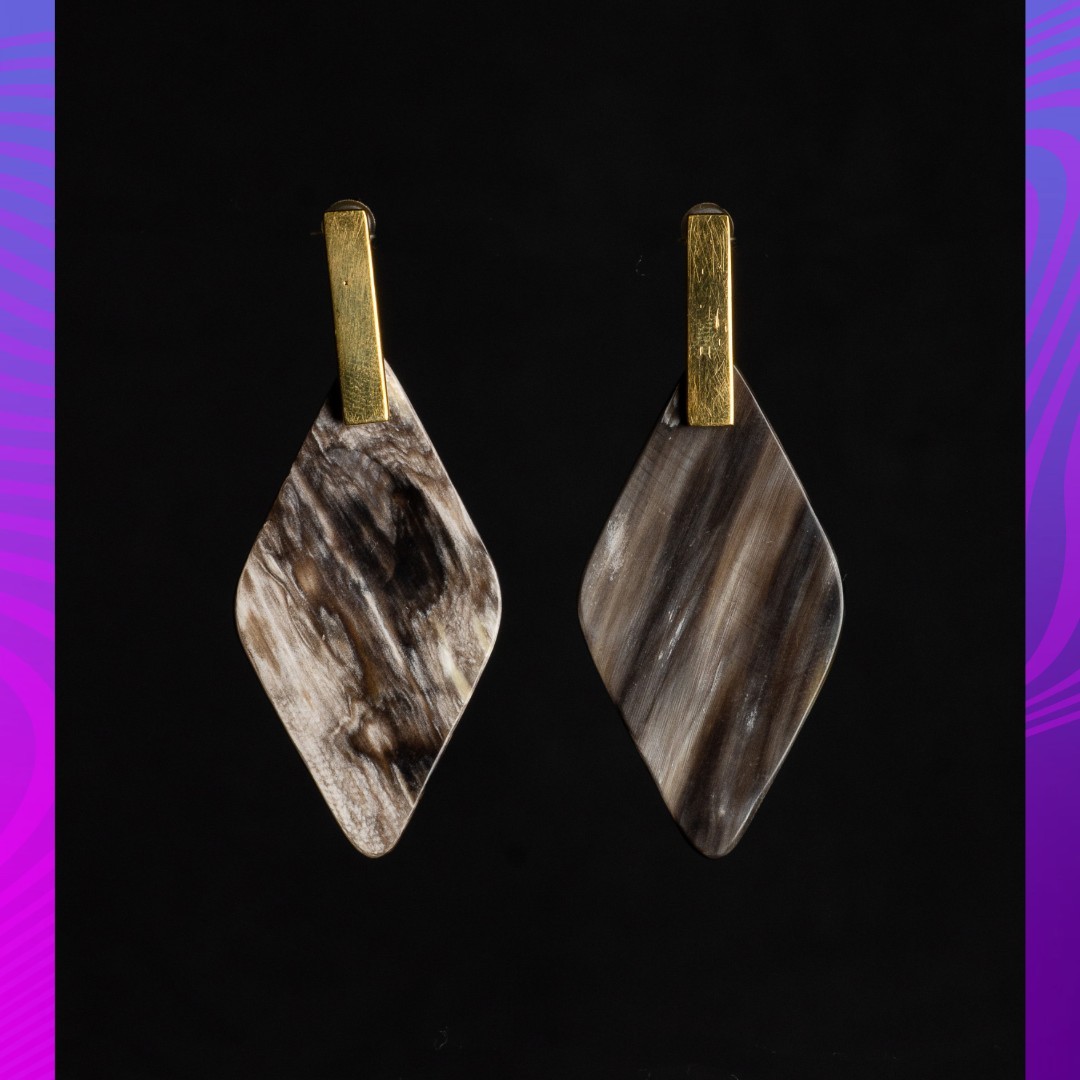 Made by Ihato Designs [PHOTO EAA]
Made by Ihato Designs [PHOTO EAA]
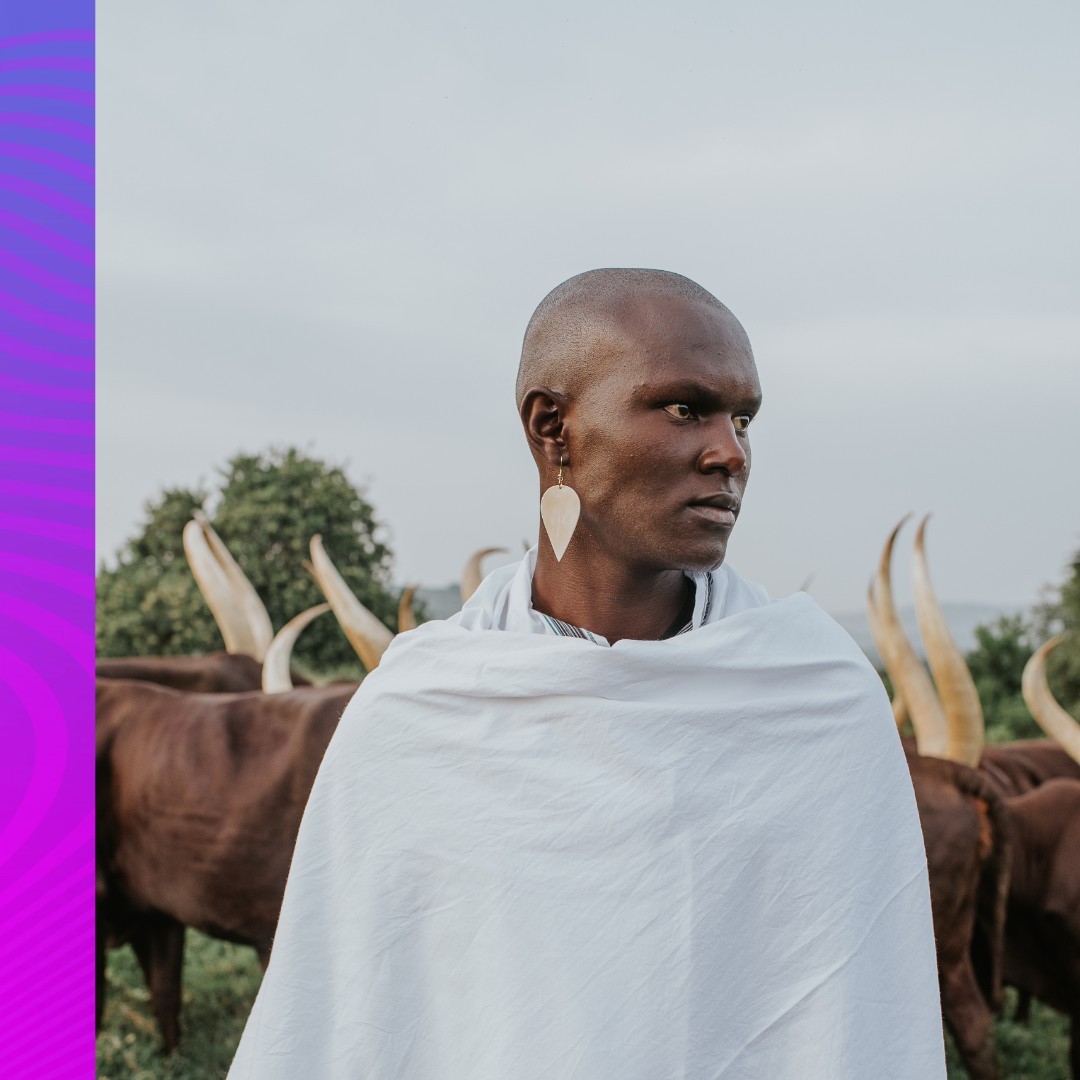 Made by Ihato Designs [PHOTO EAA]
Made by Ihato Designs [PHOTO EAA]
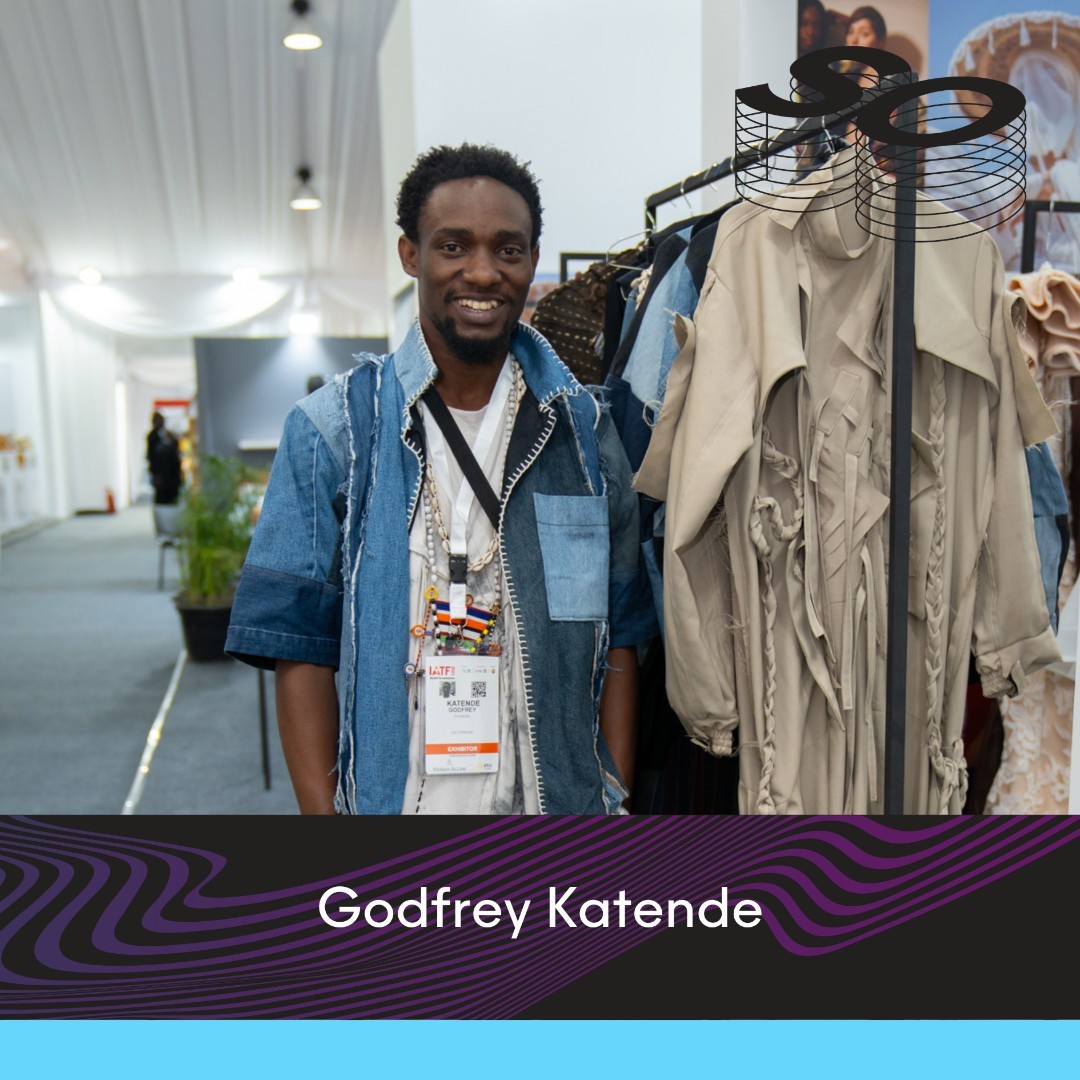 Godfrey Katende founder and creative director IGC Fashion [PHOTO EAA]
Godfrey Katende founder and creative director IGC Fashion [PHOTO EAA]
Godfrey's fashion brand, IGC Fashion is a Ugandan streetwear label inspired by African tradition, heritage, and culture, paired with a forward-thinking and unique design aesthetic. We look at a garment as a moving, breathing piece of sculptural art that can be used as a vehicle for communicating and questioning ideas about our culture; we use natural and indigenous materials such as Nsimbi (cowrie shells), Lubugo (barkcloth), second-hand garments as fabric combined with experimental shapes and patterns to make clothing. IGC Fashion uses fashion as a tool for positive social change.
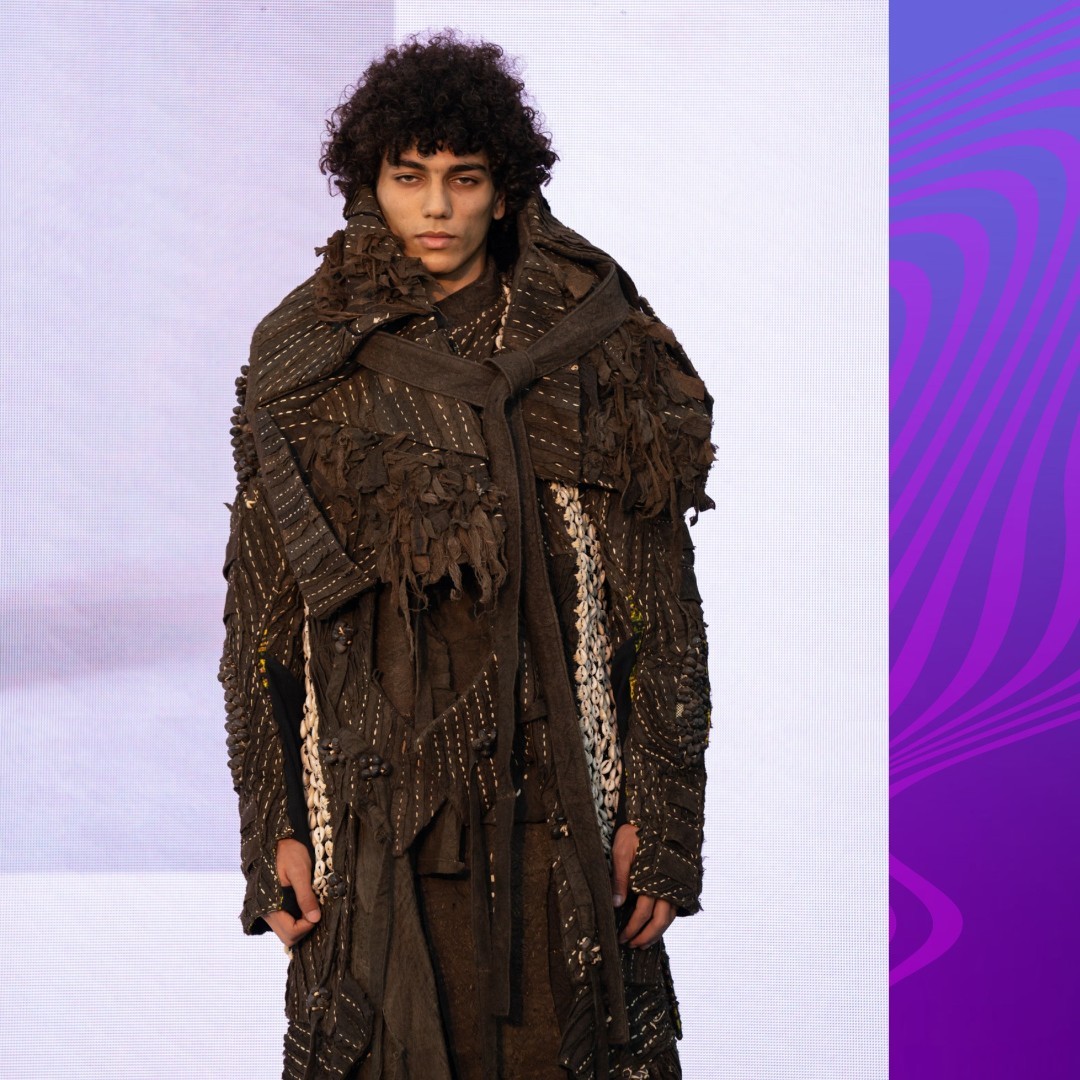 Made by IGC Fashion [PHOTO EAA]
Made by IGC Fashion [PHOTO EAA]
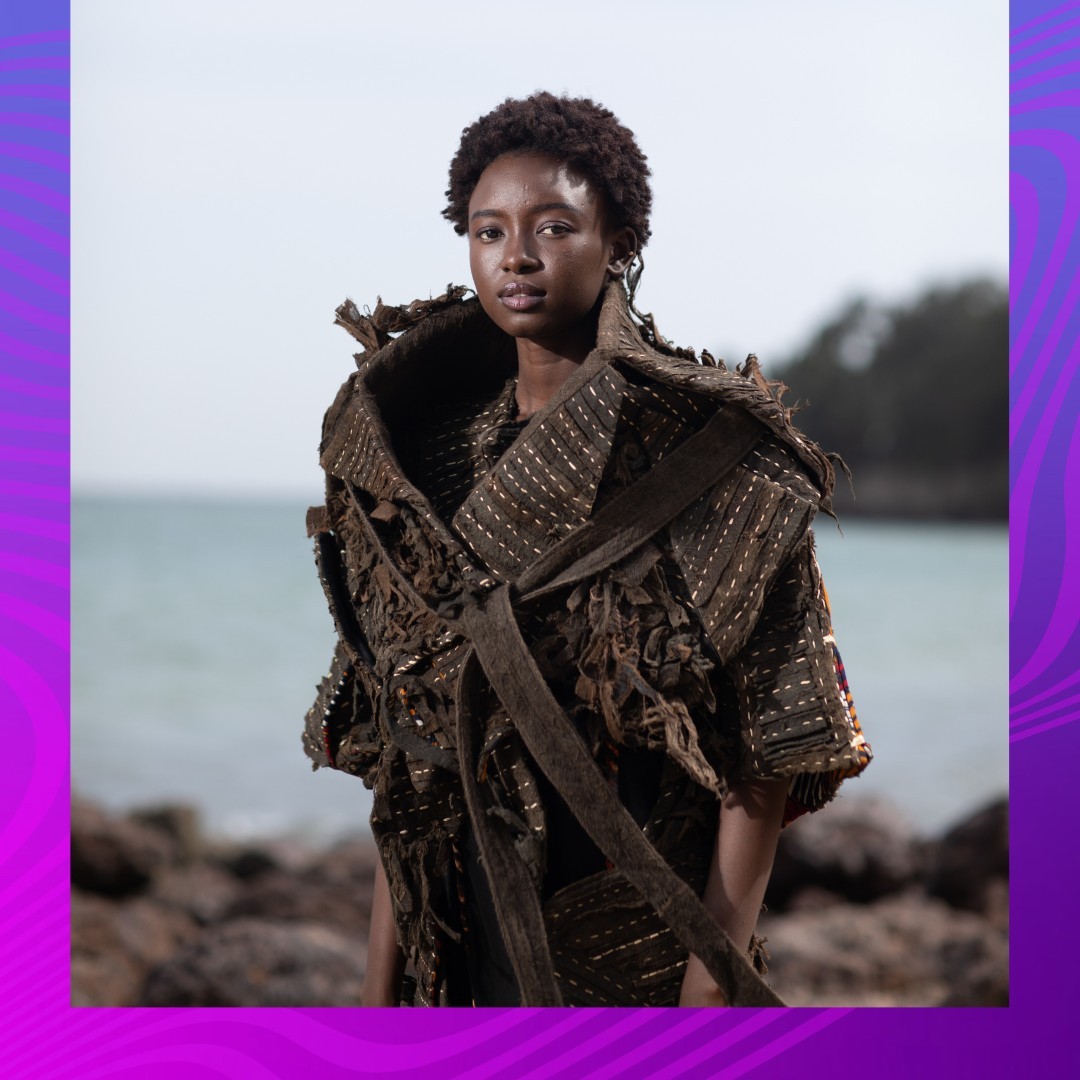 Made by IGC Fashion [PHOTO EAA]
Made by IGC Fashion [PHOTO EAA]
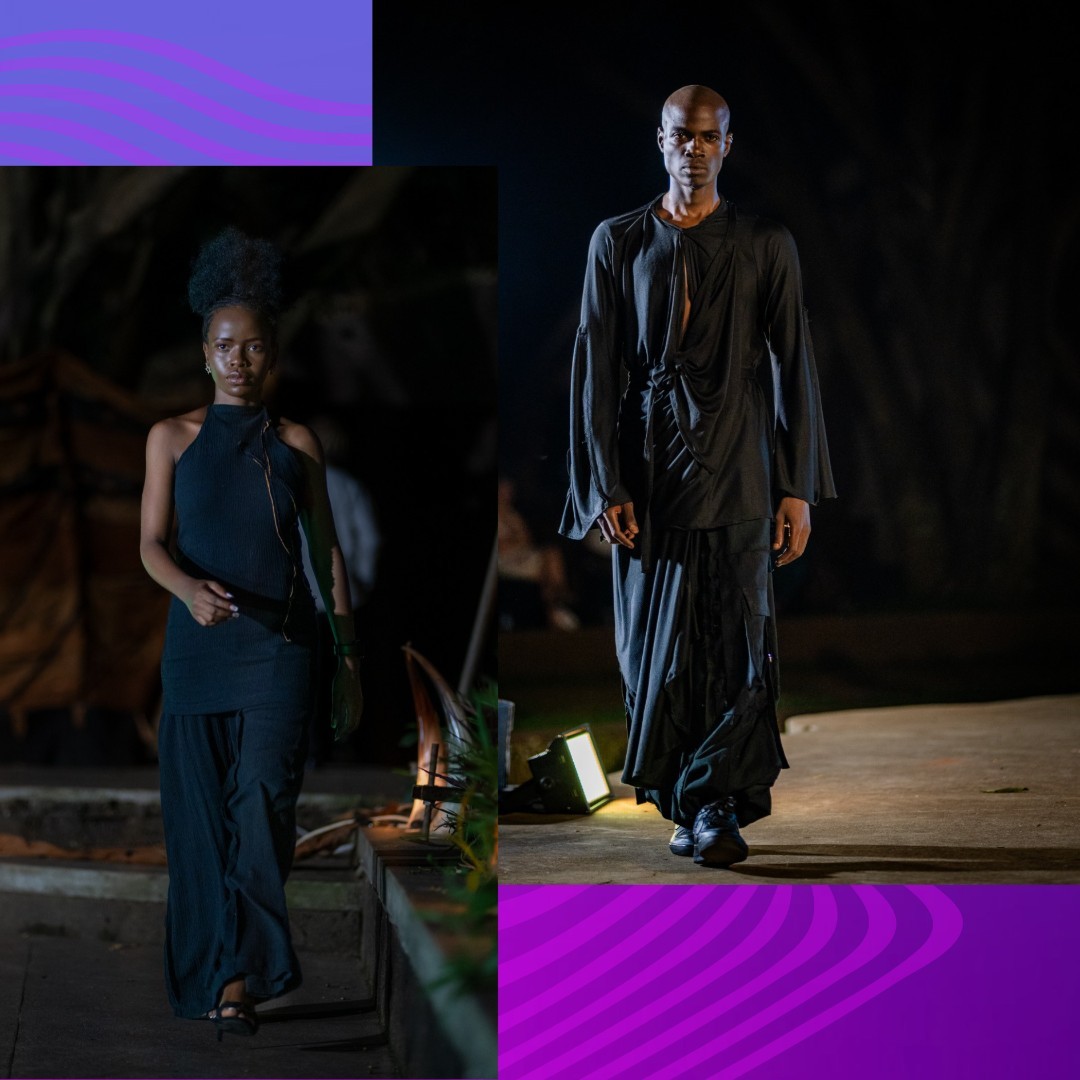 Made by IGC Fashion [PHOTO EAA]
Made by IGC Fashion [PHOTO EAA]
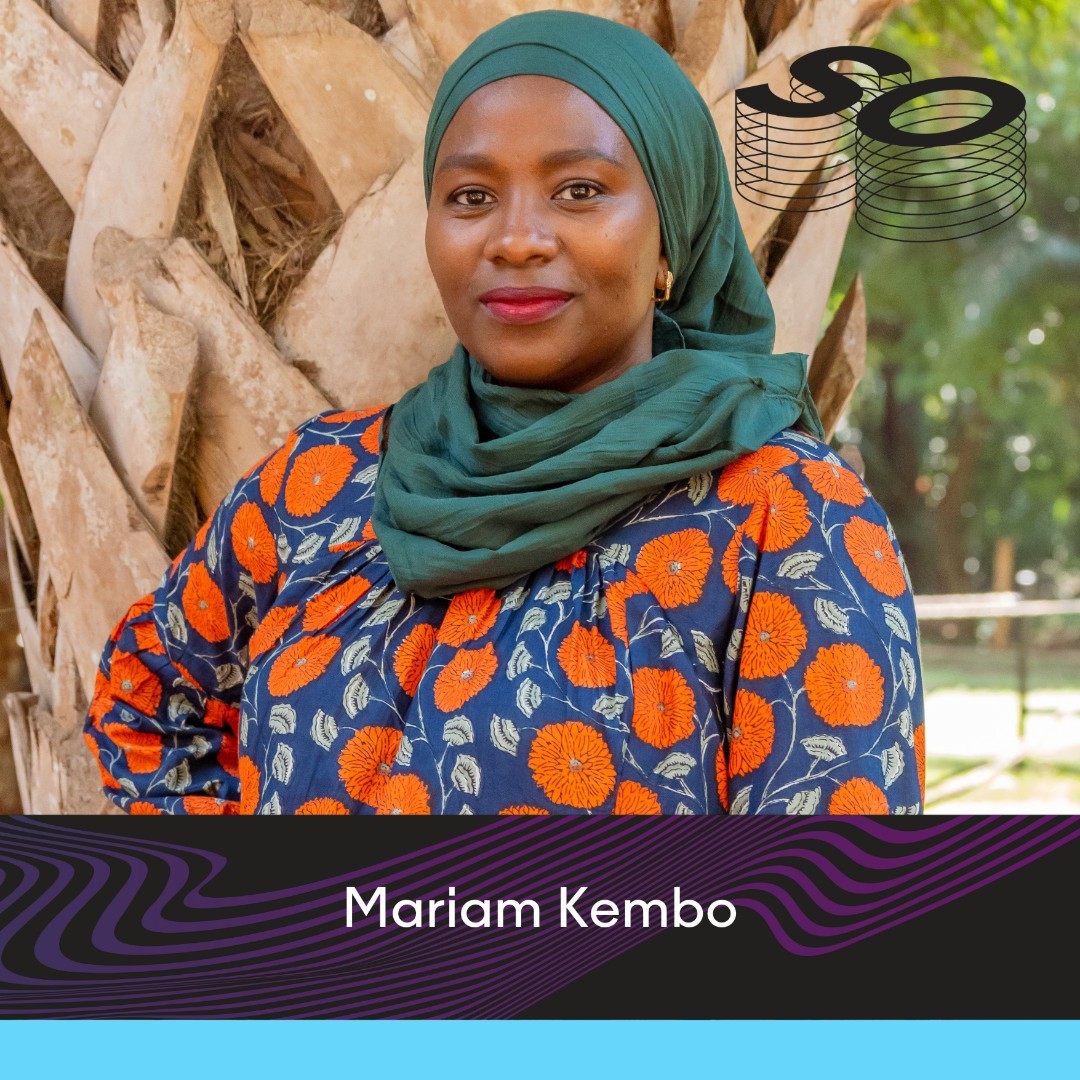 Mariam Kembo Founder and Creative Director of Mariam Couture [PHOTO EAA]
Mariam Kembo Founder and Creative Director of Mariam Couture [PHOTO EAA]
Mariam Couture, an environmentally conscious fashion brand based in Kenya, embodies luxury and comfort while promoting sustainable fashion. Using high-quality, eco-friendly fabrics, they prioritize zero waste design production, minimizing the environmental impact. Their 'patch' collections offer unique, limited-edition styles while supporting local artisans.
 Made by Mariam Couture [PHOTO EAA]
Made by Mariam Couture [PHOTO EAA]
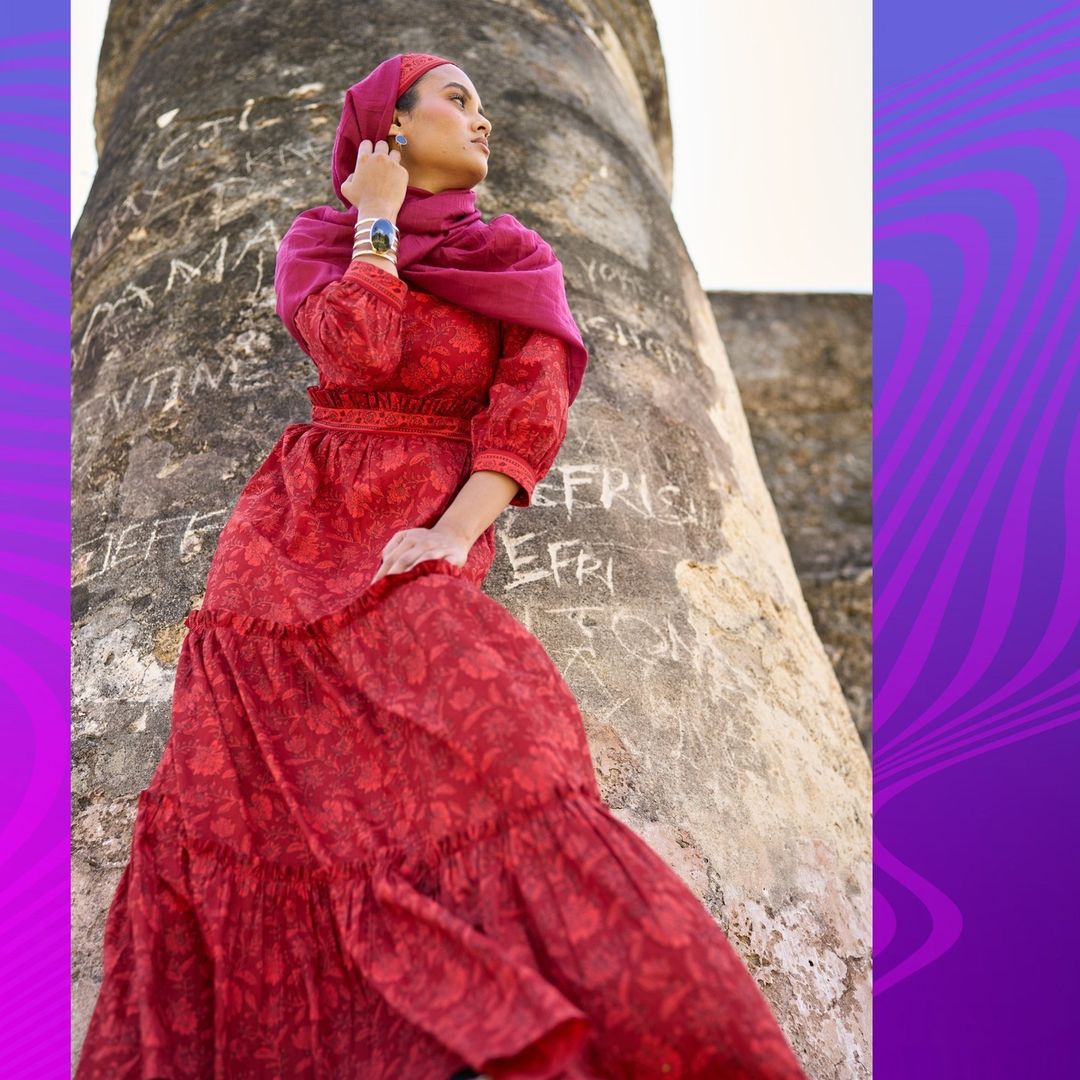 Made by Mariam Couture [PHOTO EAA]
Made by Mariam Couture [PHOTO EAA]
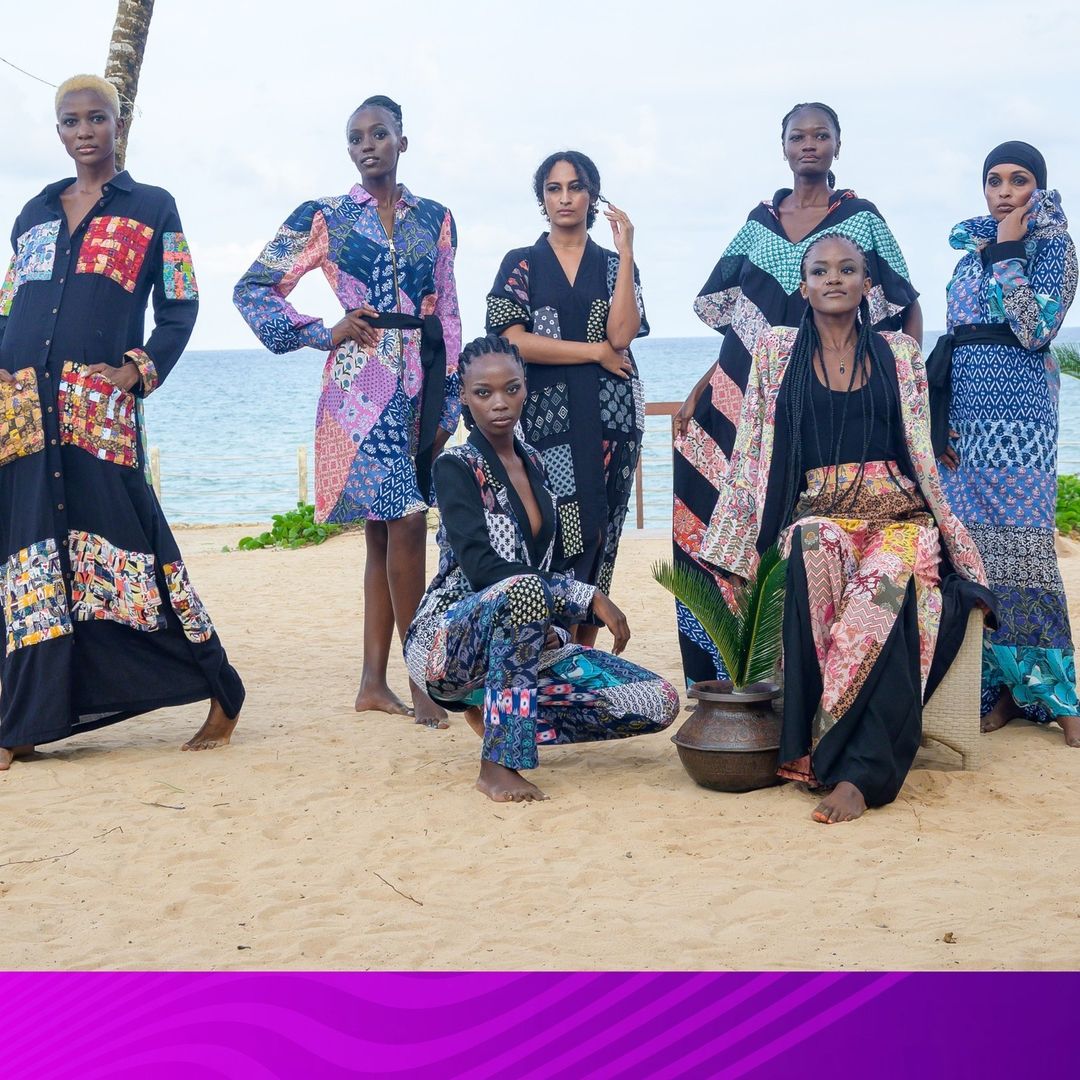 Made by Mariam Couture [PHOTO EAA]
Made by Mariam Couture [PHOTO EAA]
 Oyinda Ahmed-Salawudeen Founder and Creative Director NYA [PHOTO EAA]
Oyinda Ahmed-Salawudeen Founder and Creative Director NYA [PHOTO EAA]
NYA, a Lagos-based women's wear clothing brand, is a testament to the fusion of African heritage and contemporary flair. Founded by Oyinda, a visionary embroidery designer with a fervour for French and African artisanal techniques, NYA intricately weaves cultural narratives into every stitch. Beyond fashion, NYA is a beacon of community empowerment, exemplified through its pioneering training programme. By imparting the art of tambour beading to unemployed and unskilled women, NYA offers employment opportunities in addition to fostering a sense of dignity and purpose within the community.
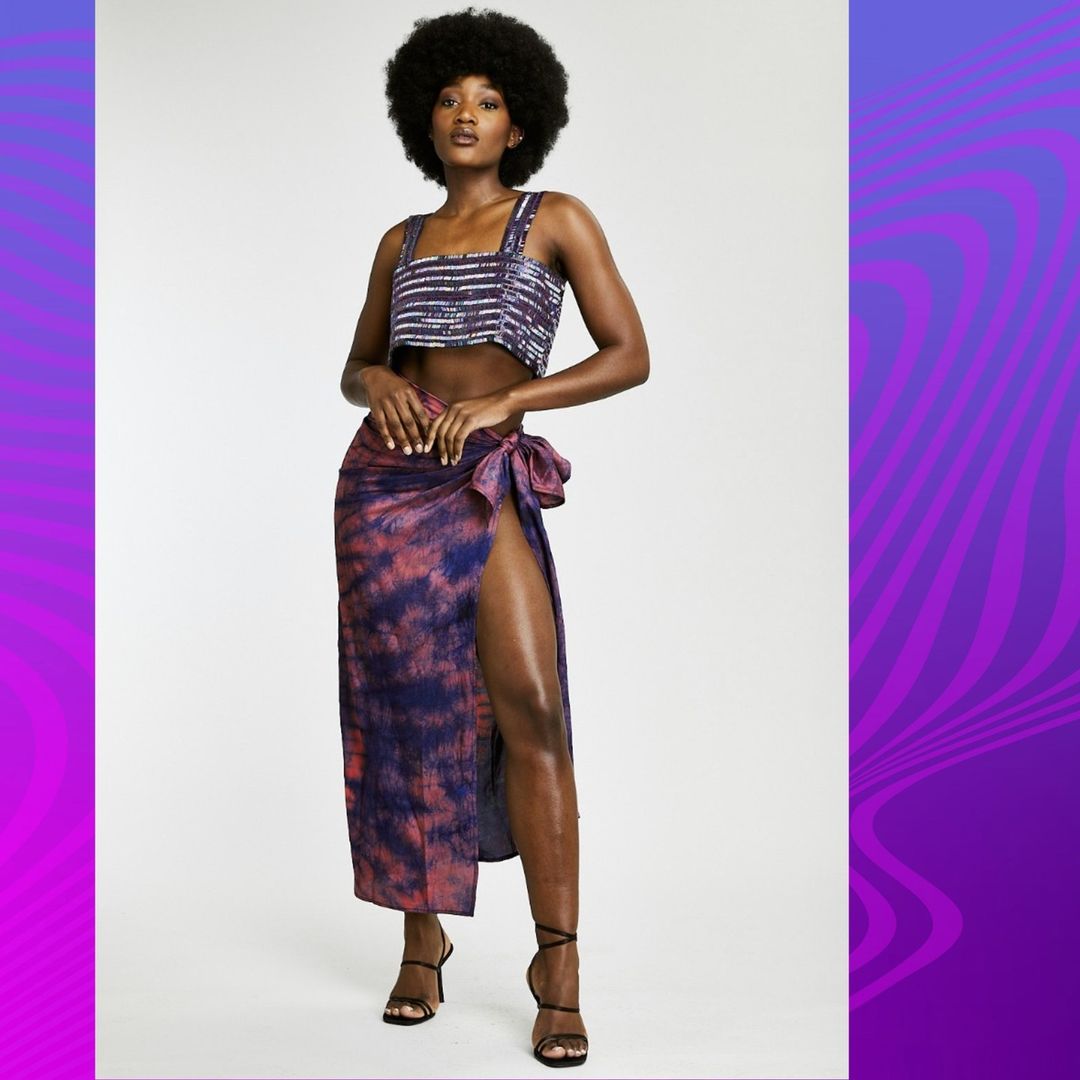 Made by NYA [PHOTO EAA]
Made by NYA [PHOTO EAA]
 Made by NYA [PHOTO EAA]
Made by NYA [PHOTO EAA]
 Made by NYA [PHOTO EAA]
Made by NYA [PHOTO EAA]
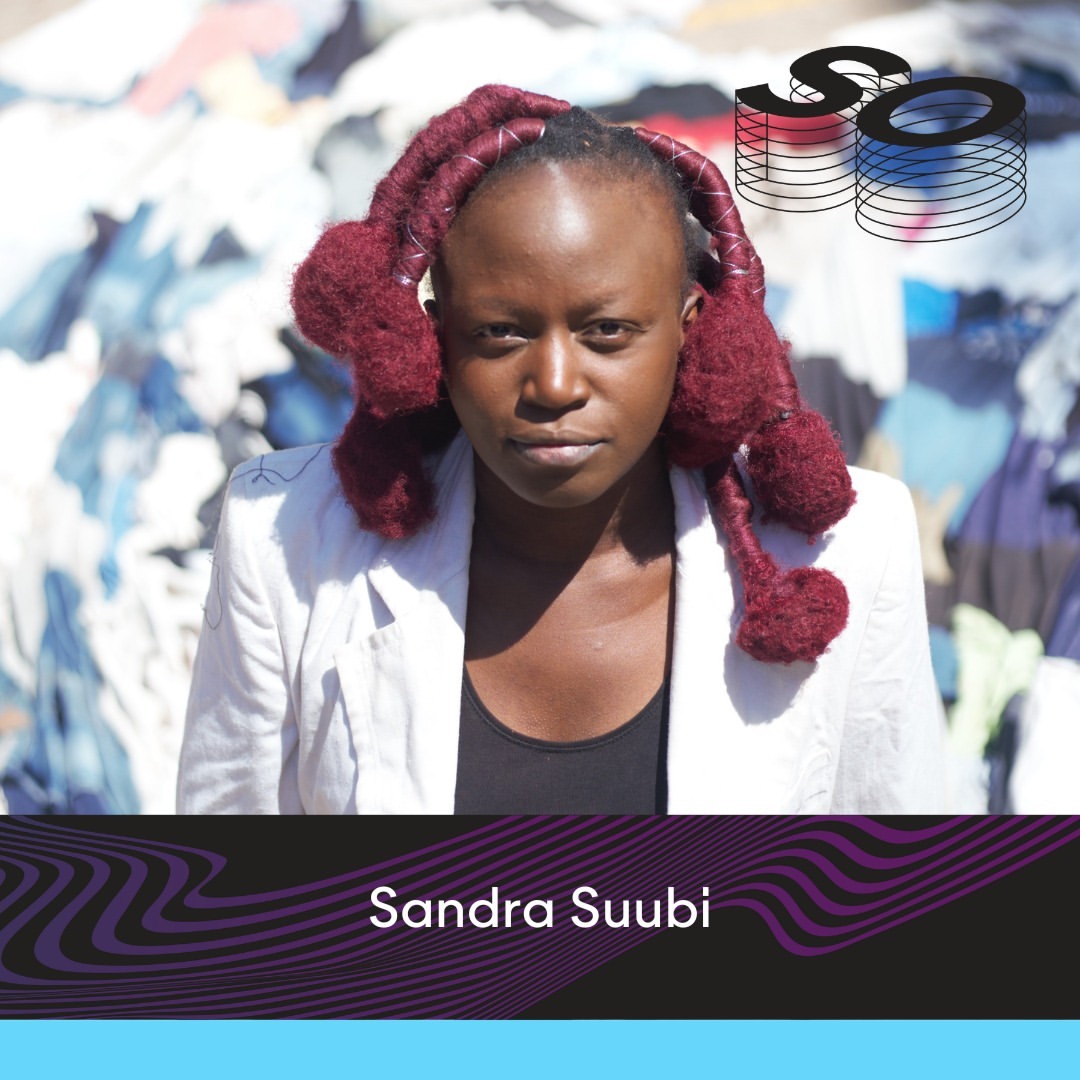 Sandra Suubi founder and Creative Director of Sandra Suubi [PHOTO EAA]
Sandra Suubi founder and Creative Director of Sandra Suubi [PHOTO EAA]
Sandra Suubi was born in 1990, in Kampala, Uganda. She is a socially conscious visual activist, whose multimedia physical and sonic sculptural works are a response to her observation/ study/ experience of popular visual culture and social practices, especially in her country Uganda. From her early sculptures, constructed from an assorted range of found objects – used plastic, tyres, metal, discarded boats, etc ¬- to the most recent wearable performance installations ( Samba Gown, 2022, Kiragala 2021) made of 2nd hand clothes, plastic pipes, used jeans, used cables, and such, Suubi broaches issues thatdeal as much with industrialization, single-use plastic, climate change, commodity, and exploitation, as with the transformative effects of the accumulation of mass-produced goods, material culture and women’s lived experiences.
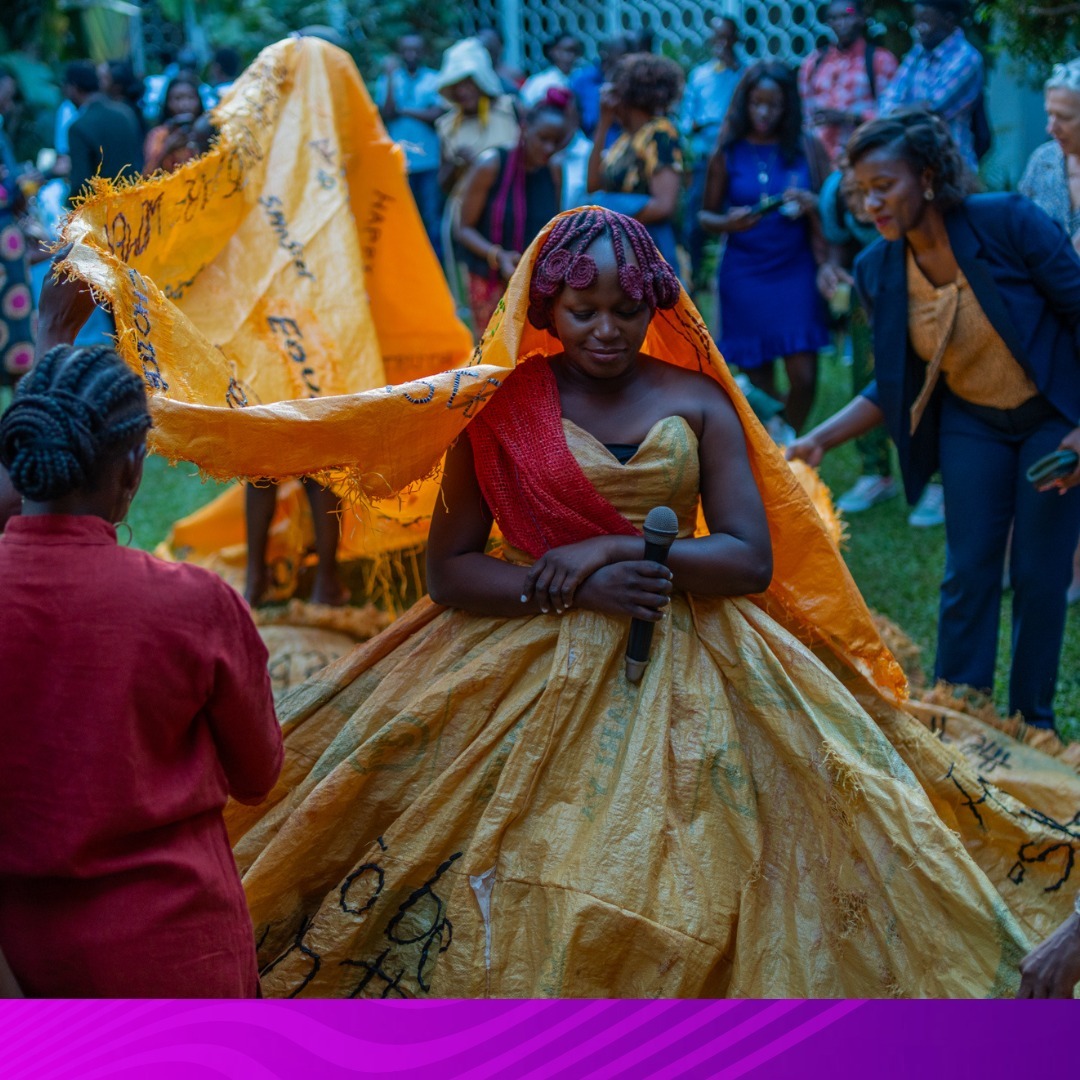 Made by Sandra Suubi [PHOTO EAA]
Made by Sandra Suubi [PHOTO EAA]
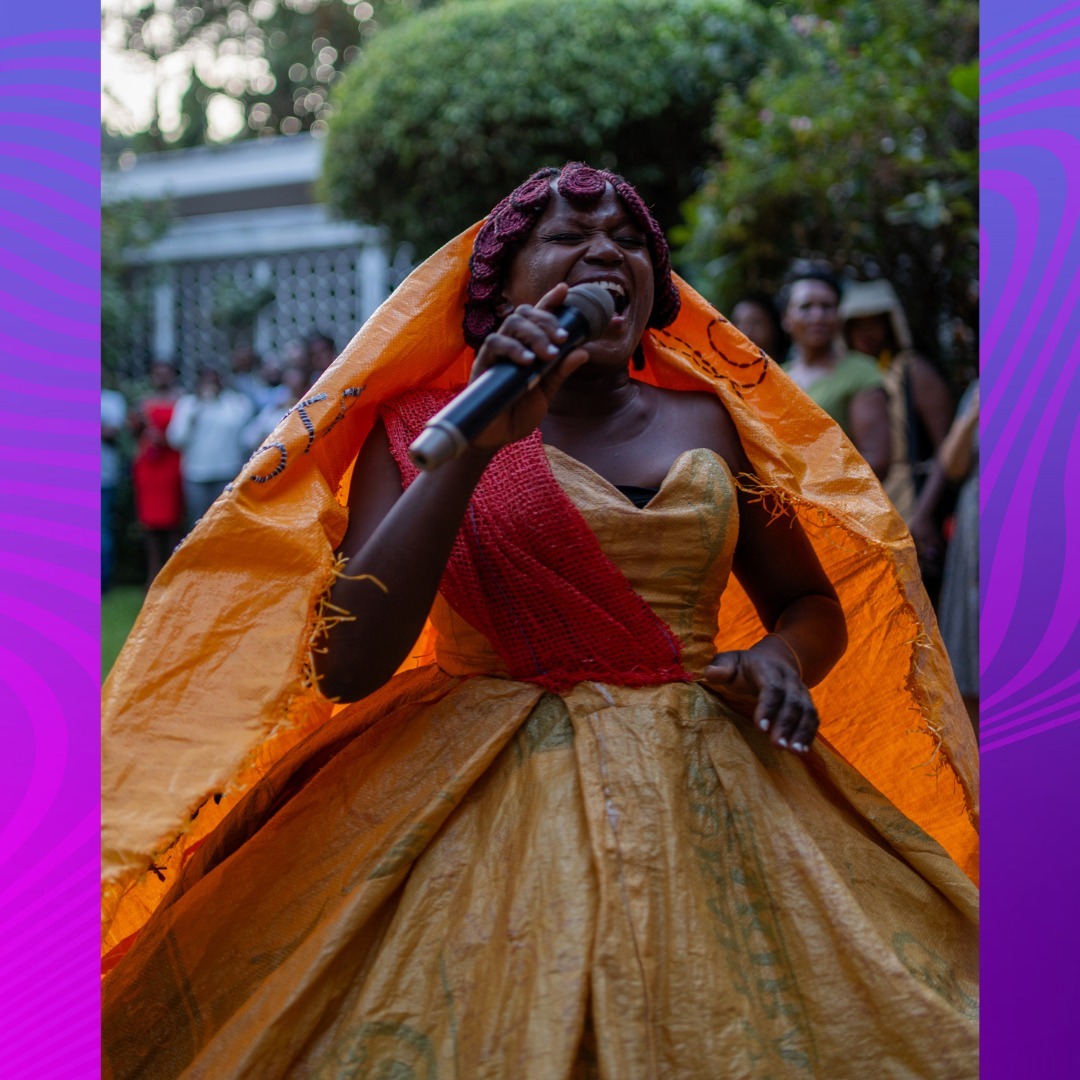 \Made by Sandra Suubi [PHOTO EAA]
\Made by Sandra Suubi [PHOTO EAA]
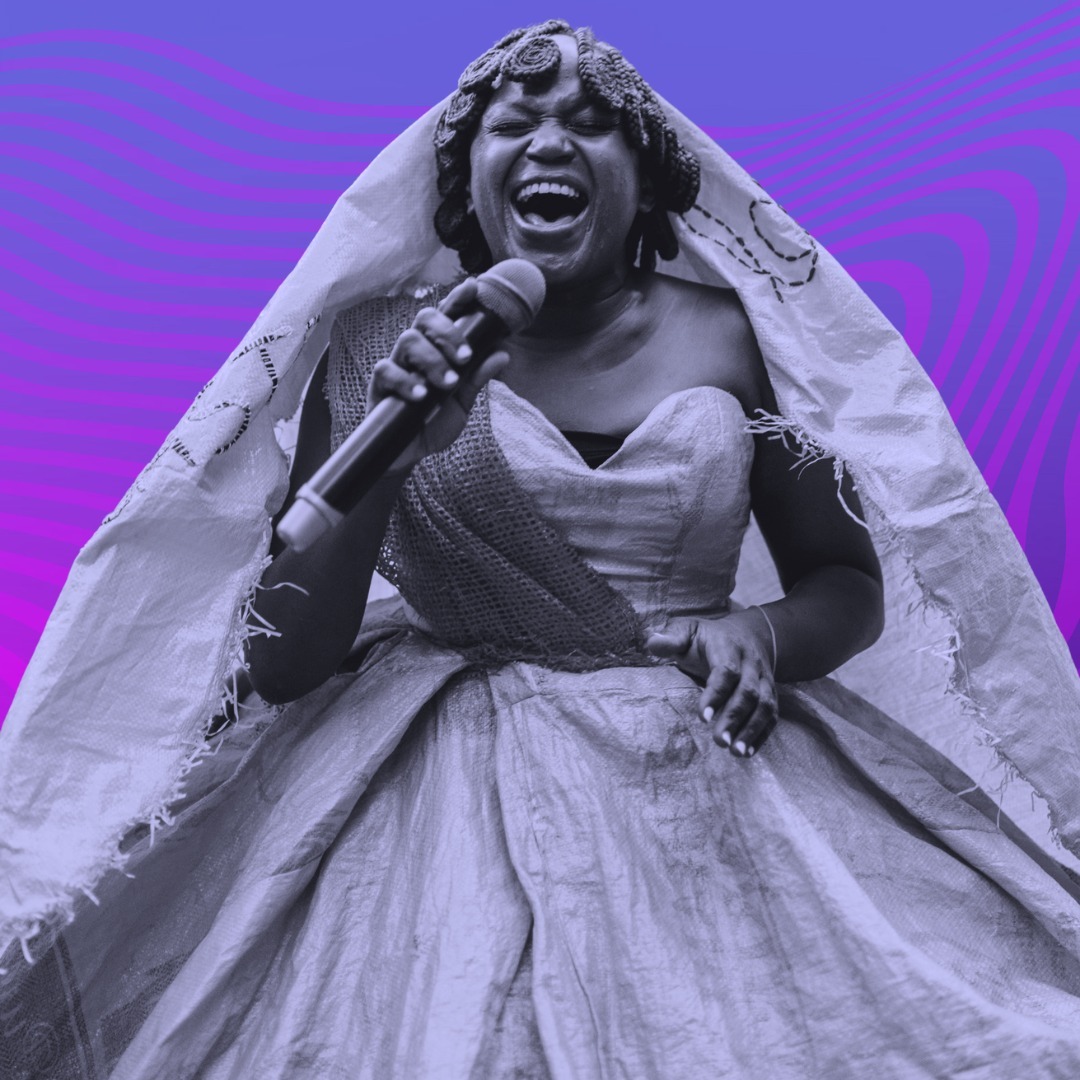 Made by Sandra Suubi [PHOTO EAA]
Made by Sandra Suubi [PHOTO EAA]
Gichuru has attended the Stanford Seed Transformation Program, a business leadership programme unlike any other. It’s for daring and determined CEOs and founders who want to increase revenue and scale exponentially
Thirteen years ago, what later became a leading women’s fashion brand in Kenya consisted of several boxes of clothes in Wandia Gichuru’s living room. Vivo Fashion Group, which Gichuru co-founded with a friend, had begun as an online-only enterprise but immediately encountered a major stumbling block: their customers wanted to try on the clothes. “We didn’t have a store, so they just came to my house,” Gichuru recalls. “My daughters were asking, ‘What happened to our living room?‘ I realized this wasn’t going to work.”
 Wandia Gichuru, co-founder and CEO of Vivo Fashion Group [Photo Wandia]
Wandia Gichuru, co-founder and CEO of Vivo Fashion Group [Photo Wandia]
Gichuru and her business partner discovered an available space in a Nairobi mall and nervously signed a lease to open their first retail store. It was immediately a hit. Drawn by Vivo’s leisure wear line at affordable prices, women in Nairobi suddenly had a place to go for clothing previously unavailable locally. The original Vivo store soon became two, and then four, and then seven. Today, Vivo has 25 stores across Kenya, Rwanda, and Uganda.
That success was unlikely for several reasons, including that nobody before Gichuru had made women’s clothes in Kenya for Kenyan women widely accessible. Originally an import business, Vivo gradually transformed into a full-on fashion brand that designed and manufactured all of its own clothing.
Along the way, Gichuru discovered that making and selling clothing had a larger purpose, one that now animates her business thinking. “Now my focus, in addition to running Vivo, is to help other entrepreneurs, and especially women entrepreneurs, develop their own businesses,” she says. “We are still struggling in so many ways, but unless people hear or see someone trying, it’s very difficult for them to imagine what’s possible.”
Although you were born in Canada, you consider Kenya your home?
Yes, my dad was studying at McGill University and my mother was teaching in Montreal. They met at a party and ended up getting married, having my elder brother and me in Canada, and then they moved back to Kenya when I was a baby.
Who were your influences growing up?
I ended up going into international development work and I think to some extent that was influenced by my dad. He was a civil servant, working for the part of the government that gave out business licences, and he was interested in economic development.
After I went to university in Canada and then was able to travel a bit and see other parts of the world, I wondered why things at home were so much harder, and why did we struggle to uplift the lives and experiences of people? That has always been the question in the back of my mind and led me into development work.
You worked for several years for the UK’s Department of International Development. What did your job involve?
I was what they called a governance advisor. I looked at mostly bilateral programmes that the UK funded in countries where they were looking to strengthen government systems. You’ve got tens of millions of pounds to put towards a project, so you partner with other governments. I enjoyed it, but I found it a little far removed from seeing how the projects translated to change.
What motivated the change of direction that eventually landed you in the retail world?
I was in my early 40s and I wanted to try something different. I ended up training to become a life coach, got my certification, and then realised that I couldn’t turn it into a business. I found it hard to speak to somebody for an hour and then say, OK, now pay me $200.
I started spending more time dancing and doing various exercise classes, and I realised there was very little available in Kenya to support those activities. You couldn’t buy dance sneakers, for example, they just weren’t available. So, we thought, hey, there’s a gap here in the market. The idea was to create this brand that would be purely online, bring in cool products to do dance and fitness. Within seven or eight months we realised that wasn’t going to work. Everyone would call or email us to say, can I come and try it on?

Different brands that work with VIVO
And your house became the fitting room.
Yes, we didn’t even have offices. We decided to open a physical store and offer more than just the dance and fitness stuff. We wanted to stay close to the original idea, but we ended up picking clothes that everyone just loved because they were super stretchy and comfortable.
We had no idea going in that we were solving a problem, but looking back, it’s kind of obvious. Most clothing sold in Kenya isn’t made in Kenya, it’s all imported. The bulk of that is secondhand but even the new stuff that is available is predominantly designed for a western, Caucasian body type. A lot of Kenyan women would buy clothes and then have to have them modified to fit.
Was that the insight that led you to begin making your own clothing?
The solution was to have stuff made to our specifications, but we couldn’t find factories in Asia that would make small enough quantities. They were like, sure, give us your design, but you have to order 10,000. We wanted to make 50. So, in 2013 we made the decision that we would start making our clothes in Kenya, and that was a game changer.
What did it take to make that happen?
I don’t come from a fashion background. I had to hire pattern makers, tailors, designers, you name it. We had to figure out where to source the fabrics. It was a lot of chaos, a lot of mistakes, very ad hoc in a way. Sometimes I’d hire out of pure desperation – I would literally meet someone for coffee and say, OK, when can you start?
Meanwhile, though, your stores were doing good business.
Our first store did so well that after a few months we opened a second one on the other side of town, and then another, and another. By 2015, we had seven stores and were doing revenue of $1 million a year. But there really was no plan; I didn’t even have a budget. It seems crazy when I think about it now. We were just putting our revenue back into the business and expanding but without any real direction.
So that’s where Seed came in?
At a certain point I was going a little crazy, thinking, I don’t know what I’m doing here, I need help. A friend of mine forwarded me a flyer about Stanford Seed coming to East Africa. I took one look at it and thought this is exactly what I need. What was interesting is that they not only helped me with scaling the business and creating a plan, but they also helped me see that success isn’t just about making profit, it’s also about impact. I came from a development background, and I wanted to be doing more than making clothes and hiring people. Seed was able to help me see how all these things are connected, that by creating opportunities and generating income and growing industries, you are transforming lives.
And then COVID hit.
And then COVID hit, and our revenues dropped 80%. We had 200 staff at the time. Kenya has no welfare system; there is little direct government support to businesses. So, our top priority was keeping our staff paid. But our revenues had disappeared, so what the hell were we going to do? When it became obvious that masks were going to become a key part of everybody’s life, we pivoted and took all our production capacity and started making masks. Most of them were bulk orders from companies that wanted branded masks. In 2020, we made a million masks. We weren’t making any money, but we had revenue, and it saved us.
Then what is the plan post-pandemic?
Fairly recently, I pulled out the transformation plan that we had developed with Seed and dusted it off. We are back on track. We have a really solid board, and a small number of investors, some of whom I met through Seed. And we now have a second business, an online marketplace, which is Shop Zetu.
Your success also led to an unusual opportunity. Tell us about your experience as a judge on the Kenyan version of the American TV show Shark Tank.
When they asked me, I said, look, I have never invested in any business, I’ve only grown my own business. What do I know? But no one else would do it. Women in our culture are shy to be seen as successful, often because they don’t want to show up their husbands. Finally, I said yes because a woman needed to be on that show. If I have to I’ll fake it to make it. I was on the show for two years.
You’ve talked about the importance of purpose, and how that informs what you do. What is most meaningful to you now that you’ve established a level of success?
What I’m proudest of is having proven that local fashion can be a viable business and is an industry with opportunities. Unemployment in Kenya is 40%, and it’s mostly young people who are looking for work. They go to university and then can’t find jobs. I’ve always seen work as tied directly to people’s dignity. If you can’t earn enough income to consistently feed your family and educate your children, your life will not be simple or easy. I’m excited about the opportunity to create employment, not only in Kenya but in other parts of Africa as well.
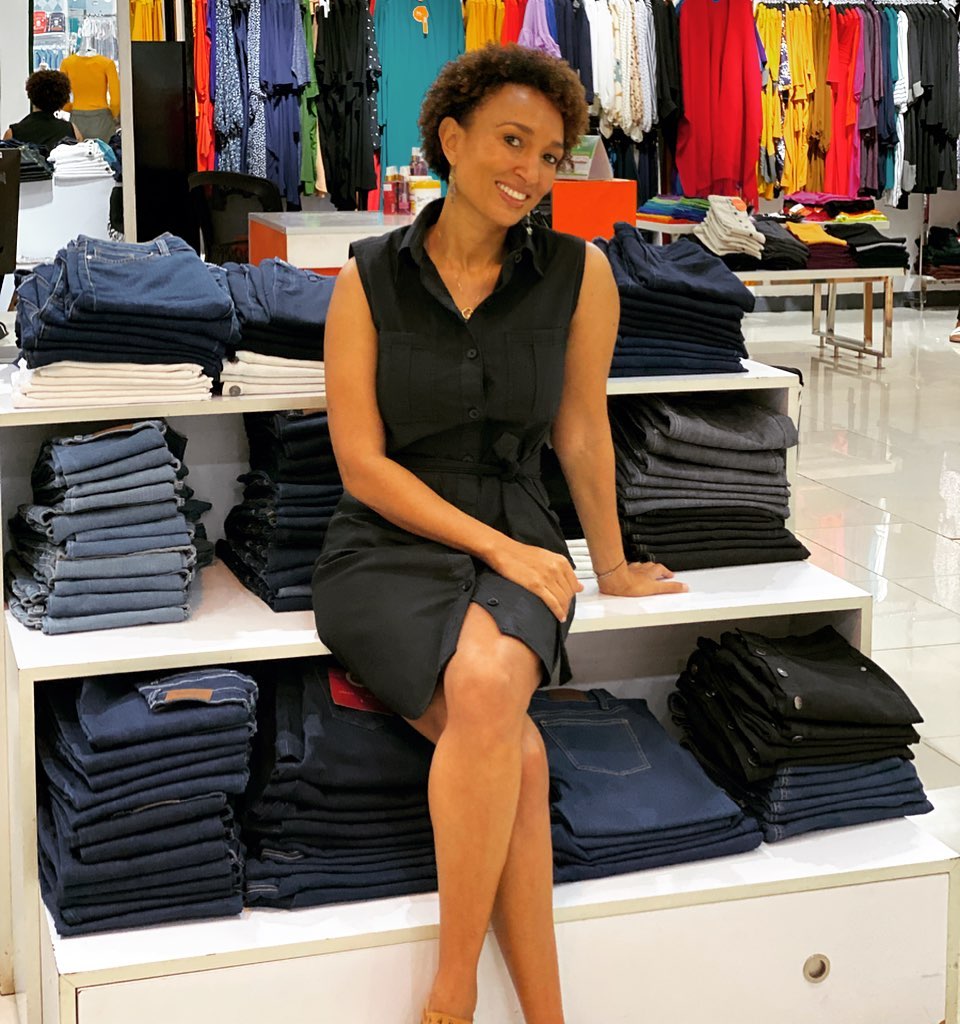
Wandia Gichuru, co-founder and CEO of Vivo Fashion Group [Photo Wandia]
Gichuru has attended the Stanford Seed Transformation Program, a business leadership programme unlike any other. It’s for daring and determined CEOs and founders who want to increase revenue and scale exponentially
Thirteen years ago, what later became a leading women’s fashion brand in Kenya consisted of several boxes of clothes in Wandia Gichuru’s living room. Vivo Fashion Group, which Gichuru co-founded with a friend, had begun as an online-only enterprise but immediately encountered a major stumbling block: their customers wanted to try on the clothes. “We didn’t have a store, so they just came to my house,” Gichuru recalls. “My daughters were asking, ‘What happened to our living room?‘ I realized this wasn’t going to work.”
 Wandia Gichuru, co-founder and CEO of Vivo Fashion Group [Photo Wandia]
Wandia Gichuru, co-founder and CEO of Vivo Fashion Group [Photo Wandia]
Gichuru and her business partner discovered an available space in a Nairobi mall and nervously signed a lease to open their first retail store. It was immediately a hit. Drawn by Vivo’s leisure wear line at affordable prices, women in Nairobi suddenly had a place to go for clothing previously unavailable locally. The original Vivo store soon became two, and then four, and then seven. Today, Vivo has 25 stores across Kenya, Rwanda, and Uganda.
That success was unlikely for several reasons, including that nobody before Gichuru had made women’s clothes in Kenya for Kenyan women widely accessible. Originally an import business, Vivo gradually transformed into a full-on fashion brand that designed and manufactured all of its own clothing.
Along the way, Gichuru discovered that making and selling clothing had a larger purpose, one that now animates her business thinking. “Now my focus, in addition to running Vivo, is to help other entrepreneurs, and especially women entrepreneurs, develop their own businesses,” she says. “We are still struggling in so many ways, but unless people hear or see someone trying, it’s very difficult for them to imagine what’s possible.”
Although you were born in Canada, you consider Kenya your home?
Yes, my dad was studying at McGill University and my mother was teaching in Montreal. They met at a party and ended up getting married, having my elder brother and me in Canada, and then they moved back to Kenya when I was a baby.
Who were your influences growing up?
I ended up going into international development work and I think to some extent that was influenced by my dad. He was a civil servant, working for the part of the government that gave out business licences, and he was interested in economic development.
After I went to university in Canada and then was able to travel a bit and see other parts of the world, I wondered why things at home were so much harder, and why did we struggle to uplift the lives and experiences of people? That has always been the question in the back of my mind and led me into development work.
You worked for several years for the UK’s Department of International Development. What did your job involve?
I was what they called a governance advisor. I looked at mostly bilateral programmes that the UK funded in countries where they were looking to strengthen government systems. You’ve got tens of millions of pounds to put towards a project, so you partner with other governments. I enjoyed it, but I found it a little far removed from seeing how the projects translated to change.
What motivated the change of direction that eventually landed you in the retail world?
I was in my early 40s and I wanted to try something different. I ended up training to become a life coach, got my certification, and then realised that I couldn’t turn it into a business. I found it hard to speak to somebody for an hour and then say, OK, now pay me $200.
I started spending more time dancing and doing various exercise classes, and I realised there was very little available in Kenya to support those activities. You couldn’t buy dance sneakers, for example, they just weren’t available. So, we thought, hey, there’s a gap here in the market. The idea was to create this brand that would be purely online, bring in cool products to do dance and fitness. Within seven or eight months we realised that wasn’t going to work. Everyone would call or email us to say, can I come and try it on?

Different brands that work with VIVO
And your house became the fitting room.
Yes, we didn’t even have offices. We decided to open a physical store and offer more than just the dance and fitness stuff. We wanted to stay close to the original idea, but we ended up picking clothes that everyone just loved because they were super stretchy and comfortable.
We had no idea going in that we were solving a problem, but looking back, it’s kind of obvious. Most clothing sold in Kenya isn’t made in Kenya, it’s all imported. The bulk of that is secondhand but even the new stuff that is available is predominantly designed for a western, Caucasian body type. A lot of Kenyan women would buy clothes and then have to have them modified to fit.
Was that the insight that led you to begin making your own clothing?
The solution was to have stuff made to our specifications, but we couldn’t find factories in Asia that would make small enough quantities. They were like, sure, give us your design, but you have to order 10,000. We wanted to make 50. So, in 2013 we made the decision that we would start making our clothes in Kenya, and that was a game changer.
What did it take to make that happen?
I don’t come from a fashion background. I had to hire pattern makers, tailors, designers, you name it. We had to figure out where to source the fabrics. It was a lot of chaos, a lot of mistakes, very ad hoc in a way. Sometimes I’d hire out of pure desperation – I would literally meet someone for coffee and say, OK, when can you start?
Meanwhile, though, your stores were doing good business.
Our first store did so well that after a few months we opened a second one on the other side of town, and then another, and another. By 2015, we had seven stores and were doing revenue of $1 million a year. But there really was no plan; I didn’t even have a budget. It seems crazy when I think about it now. We were just putting our revenue back into the business and expanding but without any real direction.
So that’s where Seed came in?
At a certain point I was going a little crazy, thinking, I don’t know what I’m doing here, I need help. A friend of mine forwarded me a flyer about Stanford Seed coming to East Africa. I took one look at it and thought this is exactly what I need. What was interesting is that they not only helped me with scaling the business and creating a plan, but they also helped me see that success isn’t just about making profit, it’s also about impact. I came from a development background, and I wanted to be doing more than making clothes and hiring people. Seed was able to help me see how all these things are connected, that by creating opportunities and generating income and growing industries, you are transforming lives.
And then COVID hit.
And then COVID hit, and our revenues dropped 80%. We had 200 staff at the time. Kenya has no welfare system; there is little direct government support to businesses. So, our top priority was keeping our staff paid. But our revenues had disappeared, so what the hell were we going to do? When it became obvious that masks were going to become a key part of everybody’s life, we pivoted and took all our production capacity and started making masks. Most of them were bulk orders from companies that wanted branded masks. In 2020, we made a million masks. We weren’t making any money, but we had revenue, and it saved us.
Then what is the plan post-pandemic?
Fairly recently, I pulled out the transformation plan that we had developed with Seed and dusted it off. We are back on track. We have a really solid board, and a small number of investors, some of whom I met through Seed. And we now have a second business, an online marketplace, which is Shop Zetu.
Your success also led to an unusual opportunity. Tell us about your experience as a judge on the Kenyan version of the American TV show Shark Tank.
When they asked me, I said, look, I have never invested in any business, I’ve only grown my own business. What do I know? But no one else would do it. Women in our culture are shy to be seen as successful, often because they don’t want to show up their husbands. Finally, I said yes because a woman needed to be on that show. If I have to I’ll fake it to make it. I was on the show for two years.
You’ve talked about the importance of purpose, and how that informs what you do. What is most meaningful to you now that you’ve established a level of success?
What I’m proudest of is having proven that local fashion can be a viable business and is an industry with opportunities. Unemployment in Kenya is 40%, and it’s mostly young people who are looking for work. They go to university and then can’t find jobs. I’ve always seen work as tied directly to people’s dignity. If you can’t earn enough income to consistently feed your family and educate your children, your life will not be simple or easy. I’m excited about the opportunity to create employment, not only in Kenya but in other parts of Africa as well.

Wandia Gichuru, co-founder and CEO of Vivo Fashion Group [Photo Wandia]
The East Africa Textile and Leather Week (EATLW) 2024 is shaping up to be the premier event for the textile, leather, and fashion industries in the East Africa region. Set to take place in Nairobi, Kenya, the week-long exhibition and trade show will bring together over 150 brands and more than 3,000 traders from 30 countries around the world.
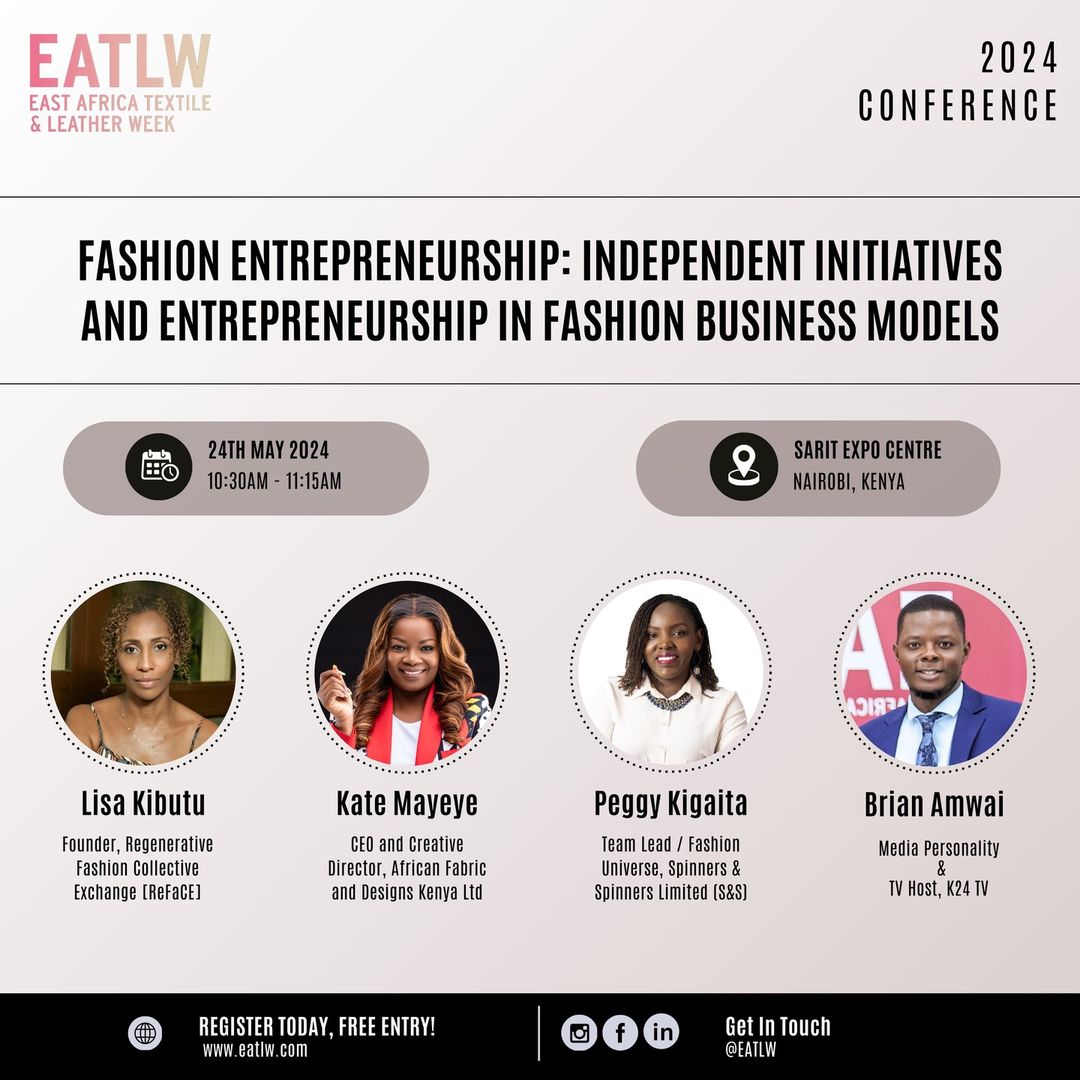
Guest speakers during the conference on fashion entrepreneurship
EATLW 2024 promises to be an unrivaled platform for trade, networking, and showcasing the latest innovations from the region's textile, leather, and fashion sectors. With exhibitions, fashion shows, networking events, and more, attendees will get a comprehensive look at the best products and services the industries have to offer.
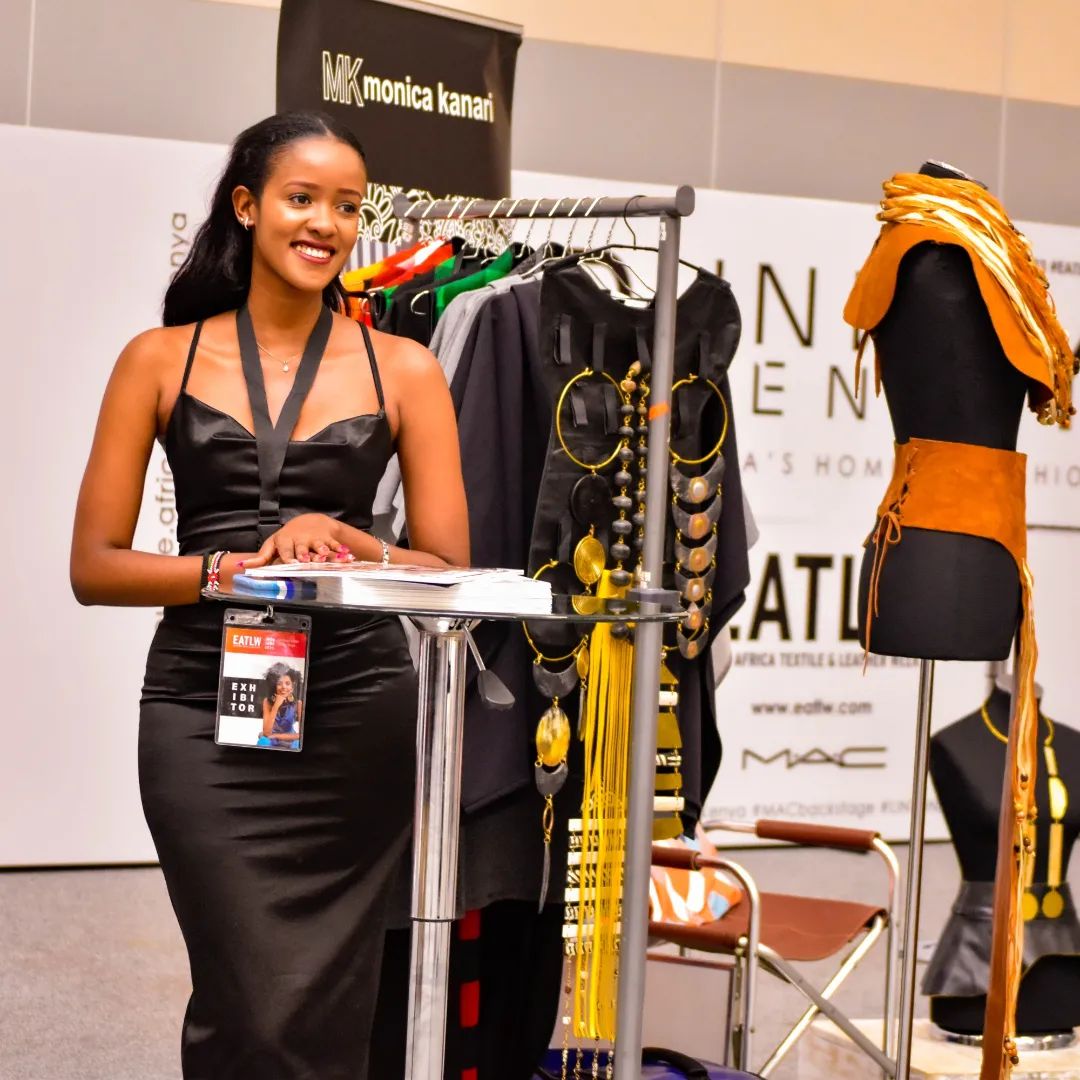 An exhibitor with a dazzling smile and vibrant energy in the 2023 edition [PHOTO EATLW]
An exhibitor with a dazzling smile and vibrant energy in the 2023 edition [PHOTO EATLW]
A highlight of the event will be a major fashion show featuring collections from 8 confirmed African designers representing different countries across the continent. The fashion show will provide a spotlight for Africa's rising fashion talents and shine a light on the creativity and craftsmanship of the region's designers.
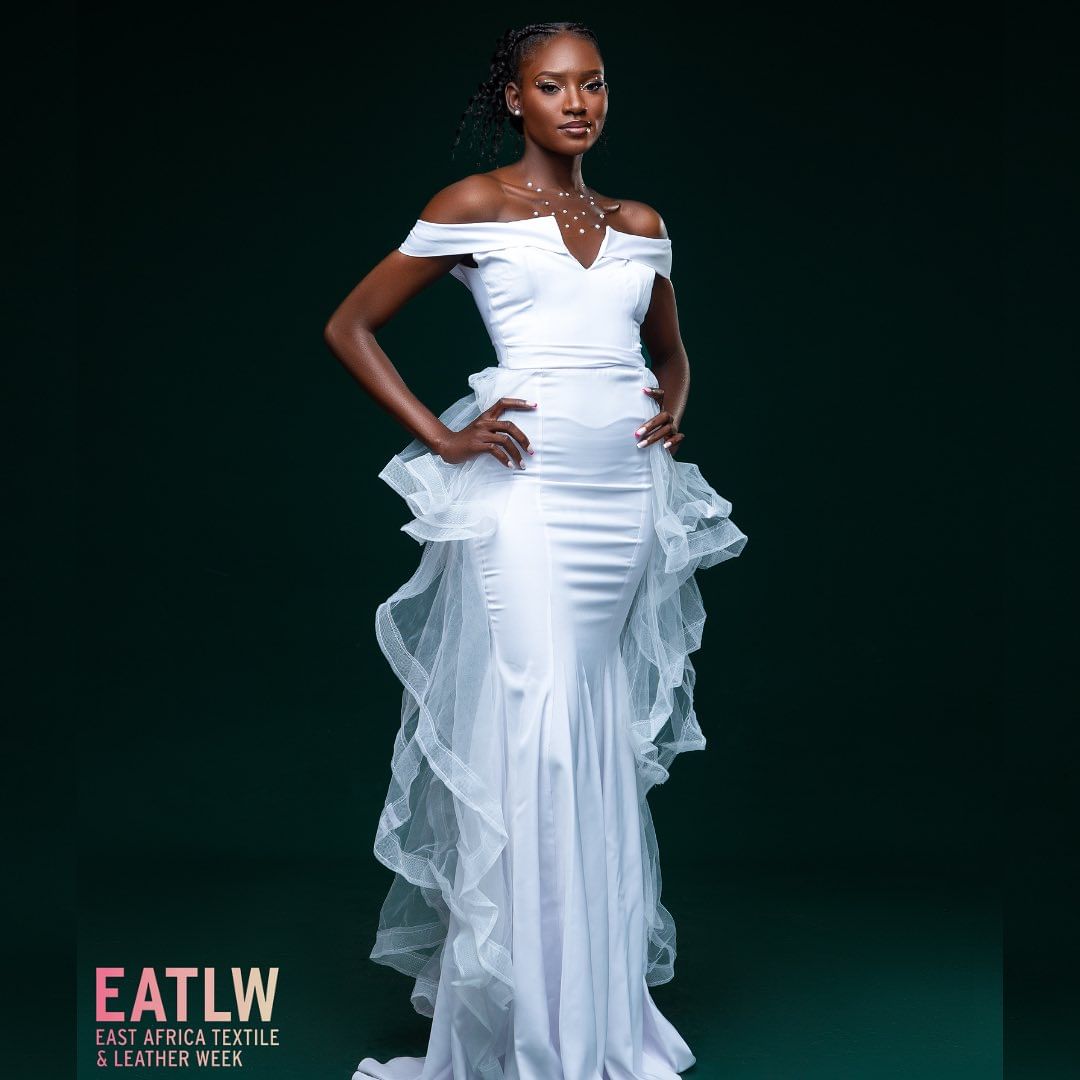 Kenyan model Merab Achola in a collection that will be showcased at the EATLW 2024 [PHOTO EATLW]
Kenyan model Merab Achola in a collection that will be showcased at the EATLW 2024 [PHOTO EATLW]
"We are tremendously excited to host EATLW 2024 here in Nairobi, East Africa's textile, leather, and fashion industries are brimming with potential. This event will connect our region's businesses and artisans with trade partners from around the world while also elevating homegrown talents on a global stage." said the event's organizer.
EATLW 2024 is expected to generate significant business opportunities, new trade partnerships, and investments in East Africa's crucial textile, leather, and fashion sectors. It marks a major milestone for these industries in the region gaining more international prominence and recognition.
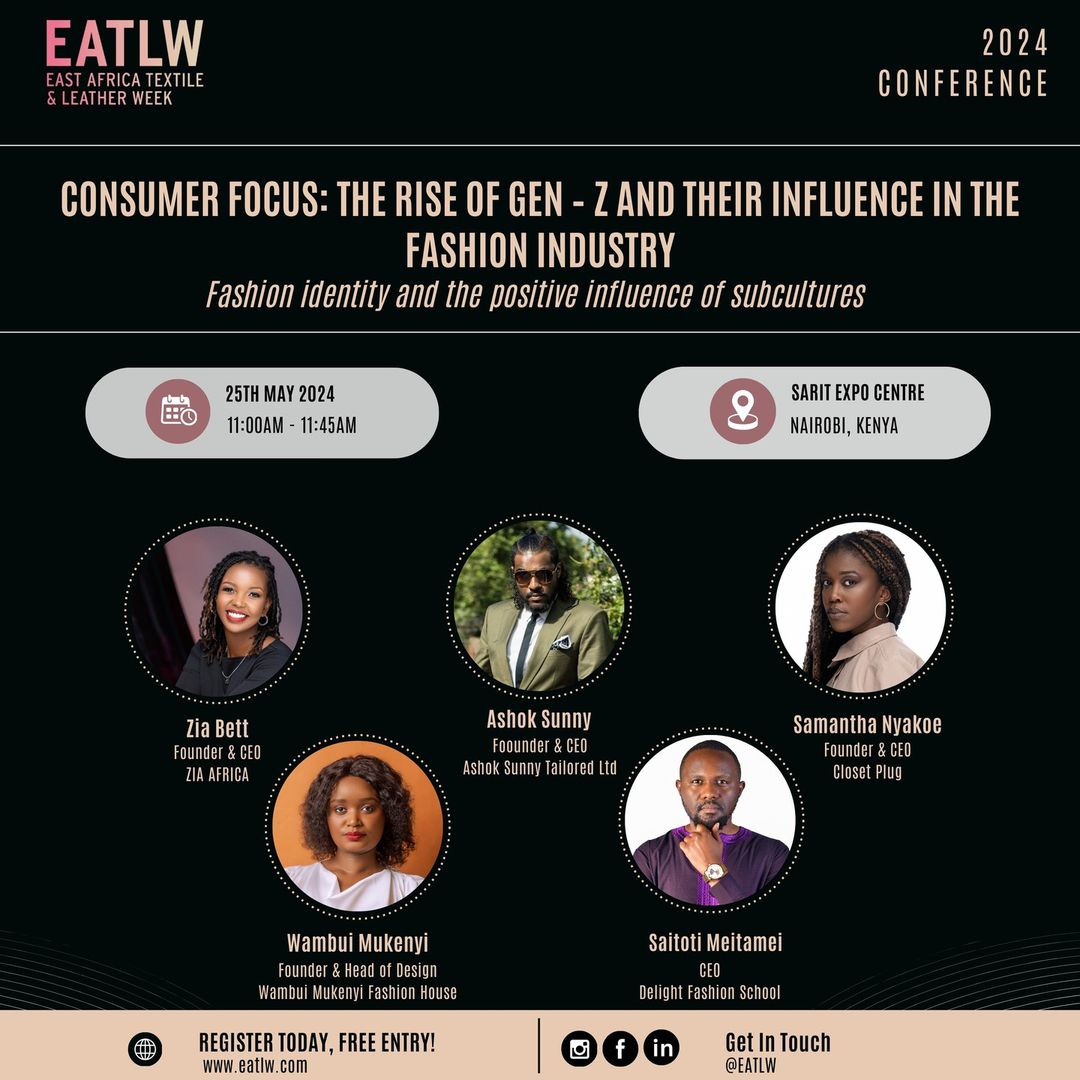
Guest speakers during the conference on customer focus
With seminal networking events, fashion shows, and exhibitions already confirmed and more to be announced in the coming week, EATLW 2024 is shaping up to be an unmissable event. So far 8 fashion brands have confirmed to showcase their designs during the EATLW 2024 runway show.
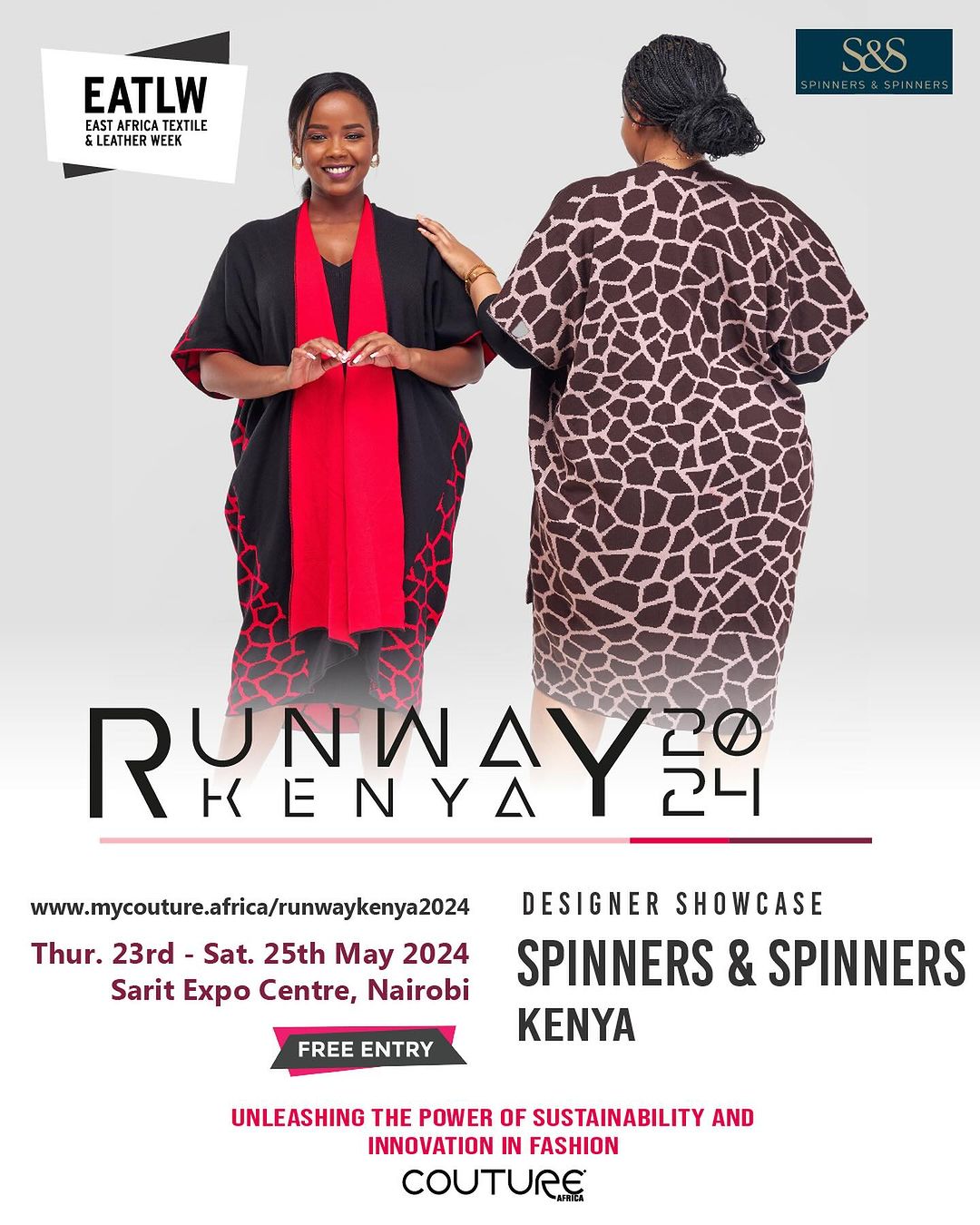 SPINNERS & SPINNERS will showcase at the EATLW 2024 [PHOTO EATLW]
SPINNERS & SPINNERS will showcase at the EATLW 2024 [PHOTO EATLW]
Spinners&Spinners A vertically integrated textile design and manufacturing company, they oversee every stage, from fiber to fashion. Founded in 1979 in Kenya, Spinners & Spinners Ltd (S&S) boasts a rich entrepreneurial legacy within the region.
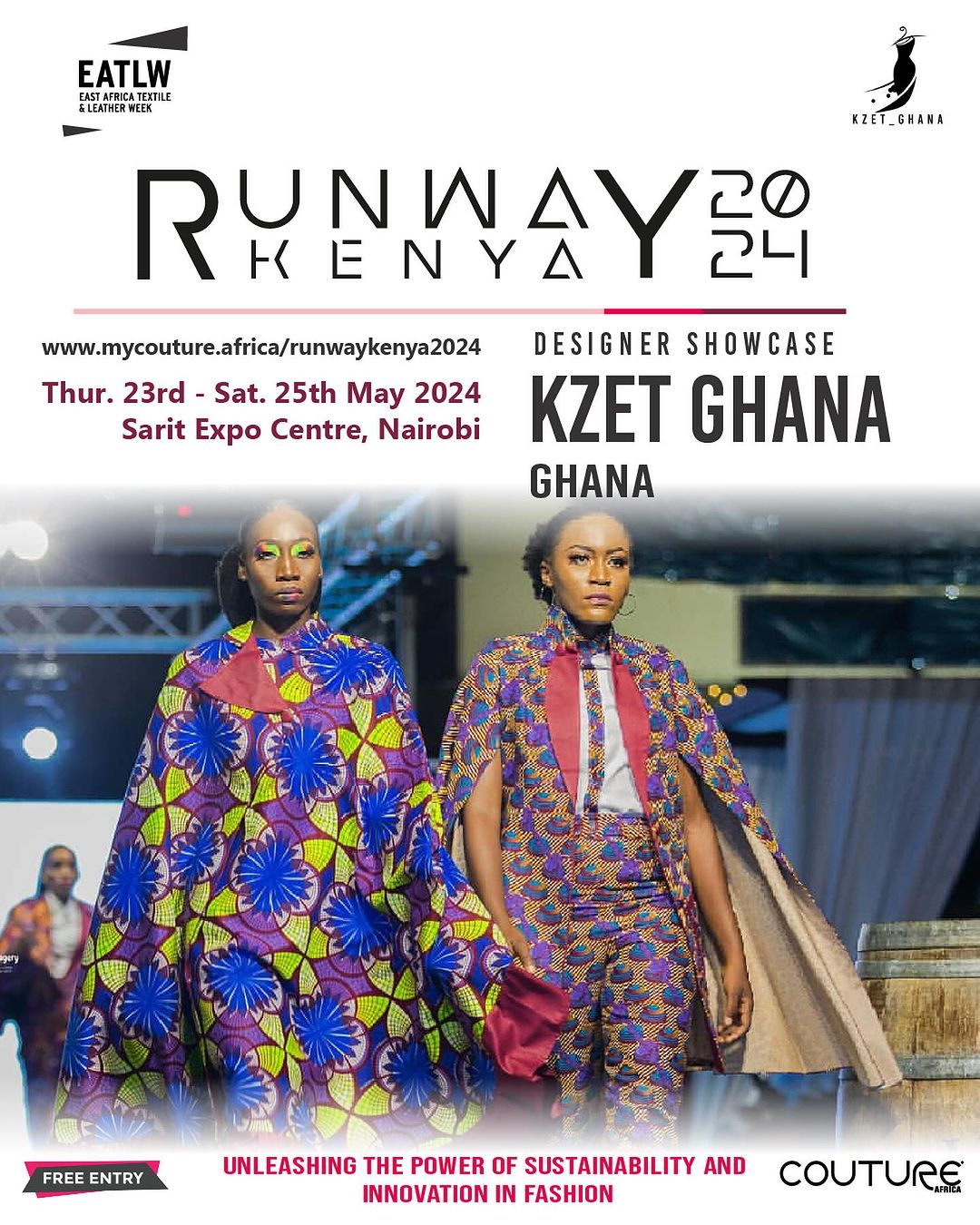
A specialist in stunning fashion for both ladies and gentlemen the KZET from Ghana will showcase at the EATLW 2024 [PHOTO EATLW]
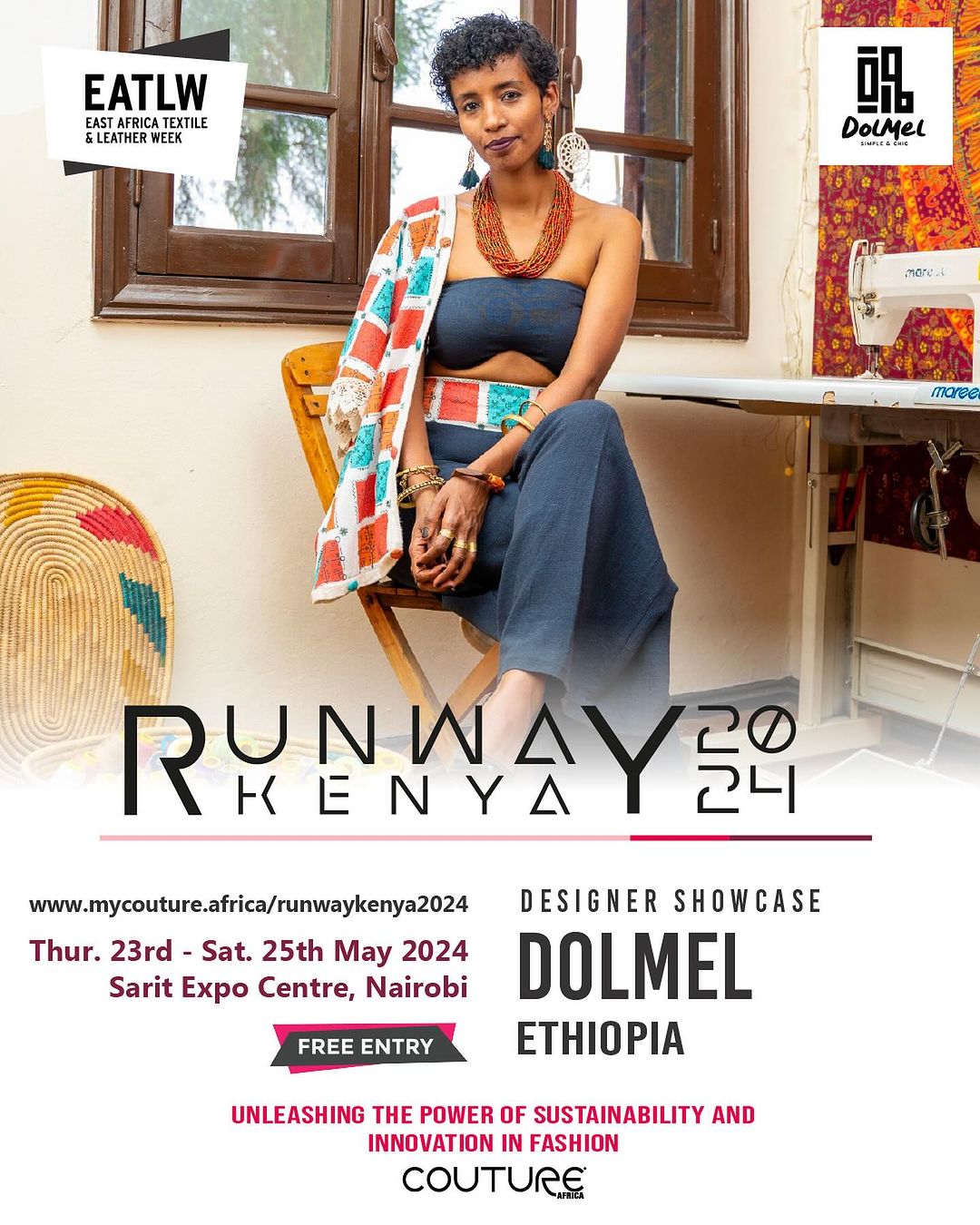 DOLMEL from Ethiopia will showcase at the EATLW 2024 [PHOTO EATLW]
DOLMEL from Ethiopia will showcase at the EATLW 2024 [PHOTO EATLW]
DolMel is an Ethiopian fashion brand bringing a unique approach that pushes the millennia-old tradition of hand-weaving into the 21st century. They do this by using high-tech digital reactive printing to produce rolls of various kinds of seamless patterns on a cotton hand-woven fabric. This later turns into bohemian inspired clothes that celebrates and expresses one’s unique identity.
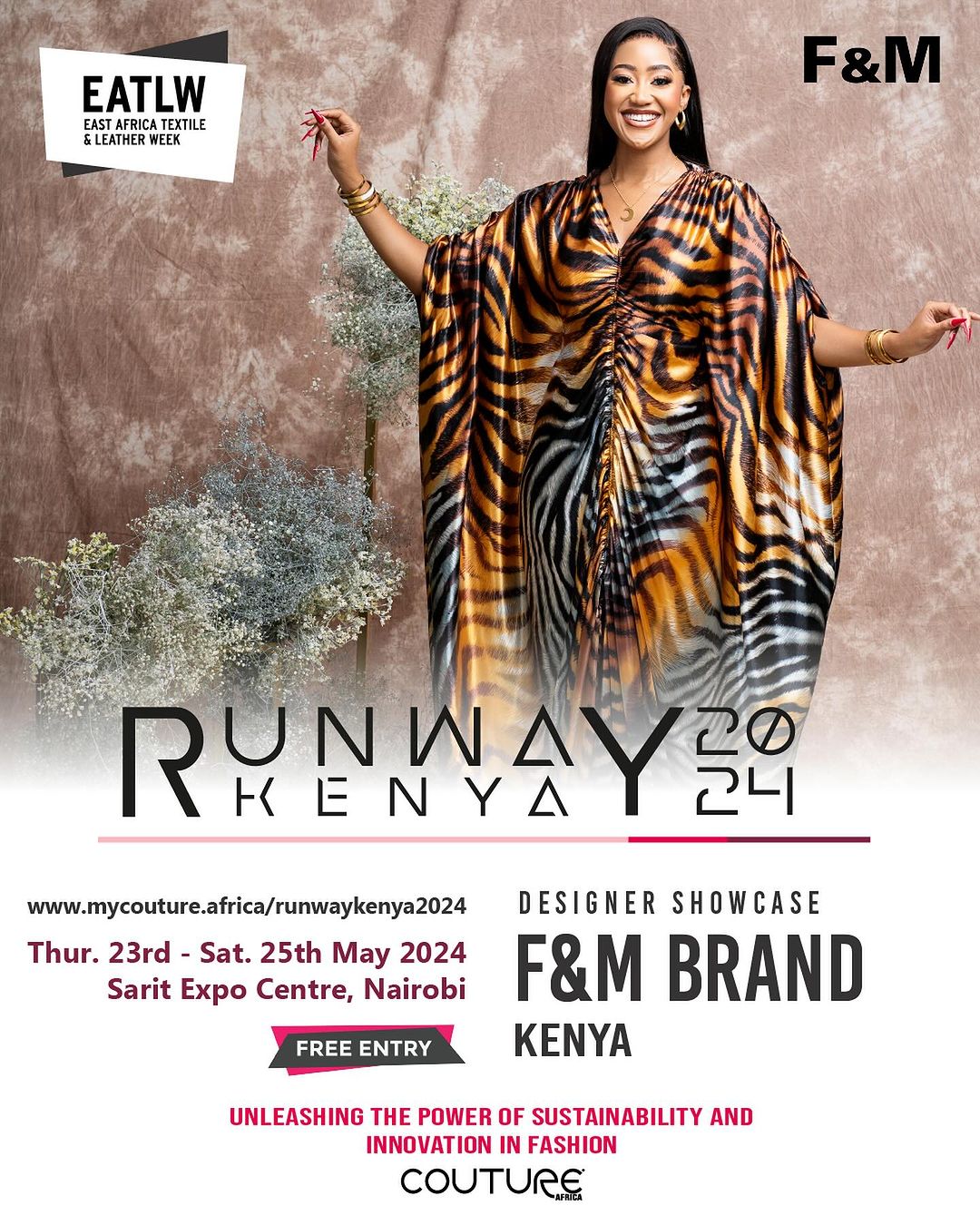 F &M will showcase at the EATLW 2024 [PHOTO EATLW]
F &M will showcase at the EATLW 2024 [PHOTO EATLW]
F&M (Fashion and Ministry) Brand is a faith-based fashion brand based in Nairobi, Kenya. The Made in Kenya brand believes in dressing a person externally with edgy, fashion forward and exclusive designs but more so to dress them internally with grace, with power and with the wholesome word of God. They are a Fashion brand with a difference.
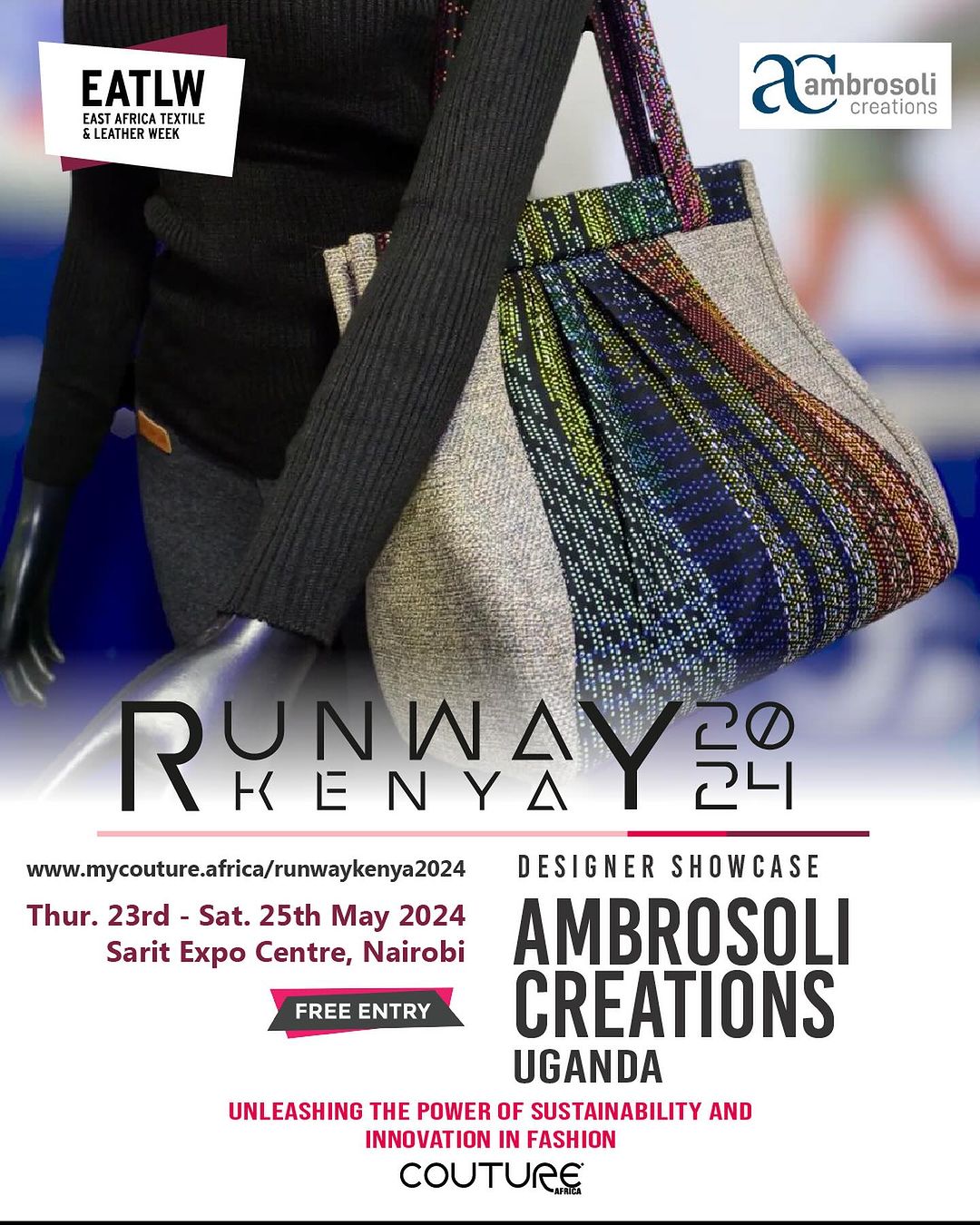
Ambrosoli Creations from Uganda will showcase at the EATLW 2024 [PHOTO EATLW]
Ambrosoli Creations, spearheaded by Ambrose Angulo are manufacturers of branded and non-branded bags with an african touch. Based in Kampala, Uganda, they specialise in all sorts of bags for both women and men including backpacks, totes, handbags and travel bags with canvas, denim and leather being their core mediums.
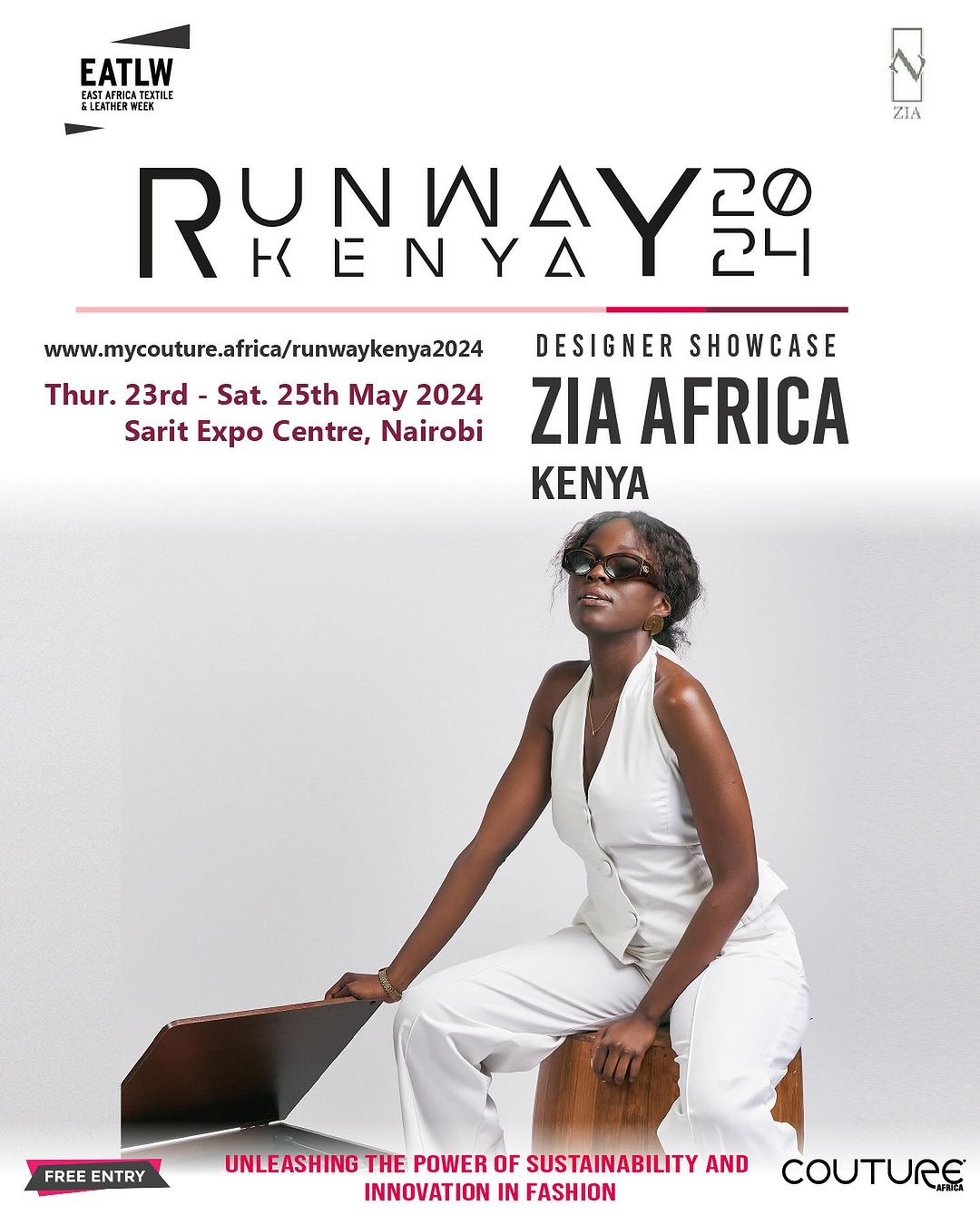 ZIA Africa will showcase at the EATLW 2024 [PHOTO EATLW]
ZIA Africa will showcase at the EATLW 2024 [PHOTO EATLW]
Since 2013, Zia has revolutionized Kenyan fashion by championing sustainability. This #MadeInKenya brand offers timeless, high-quality pieces for the modern, aspirational woman. Committed to eco-friendly practices, Zia believes fashion shouldn’t harm the planet. By 2025, their goal is to become Africa’s leading sustainable fashion platform.
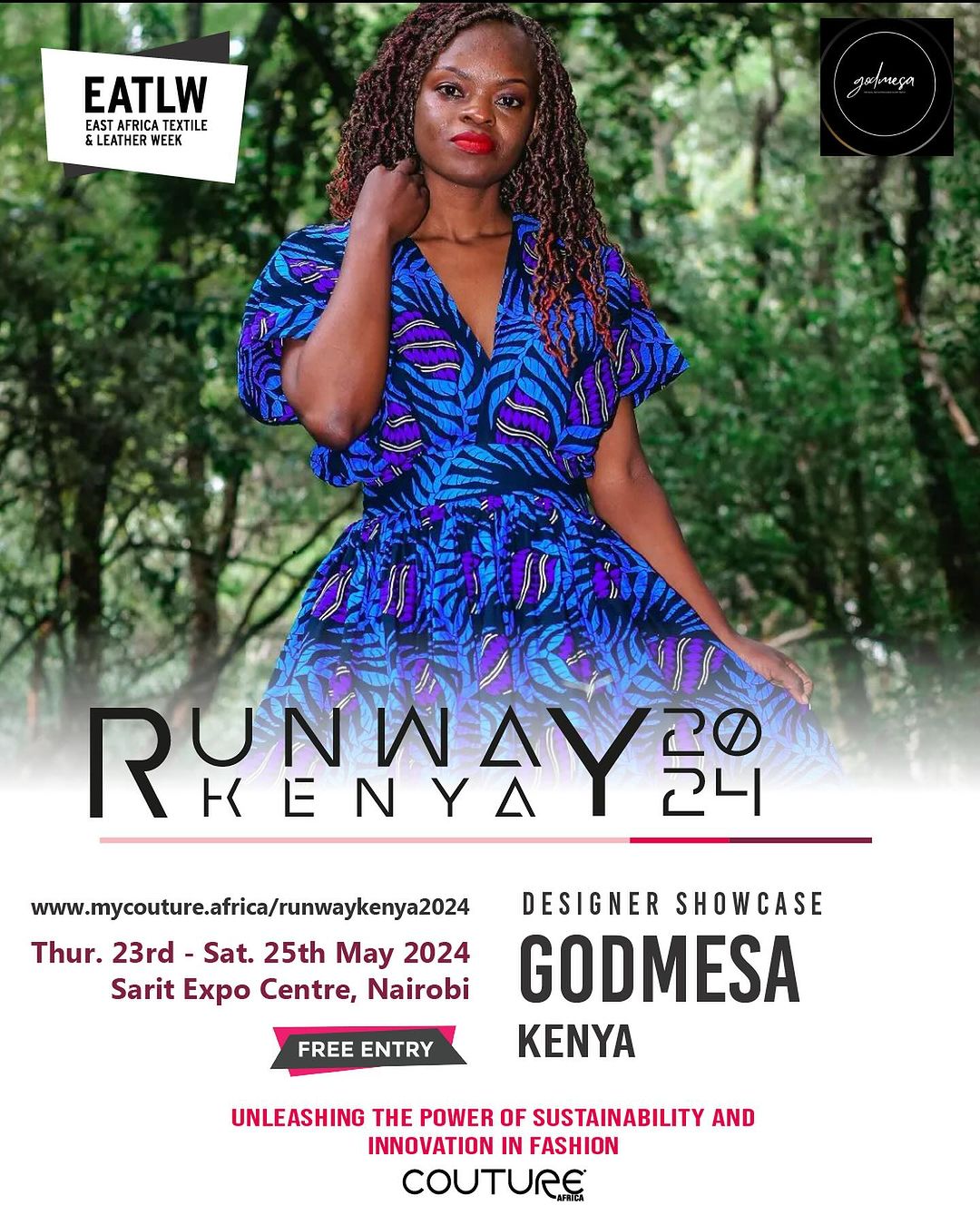 Godmesa will showcase at the EATLW 2024 [PHOTO EATLW]
Godmesa will showcase at the EATLW 2024 [PHOTO EATLW]
Godmesa is a Kenyan fashion brand dedicated to making their clients feel good, feel confident, and have fun with fashion. Their cutting-edge designs push boundaries and redefine style, celebrating individuality and bold expression.
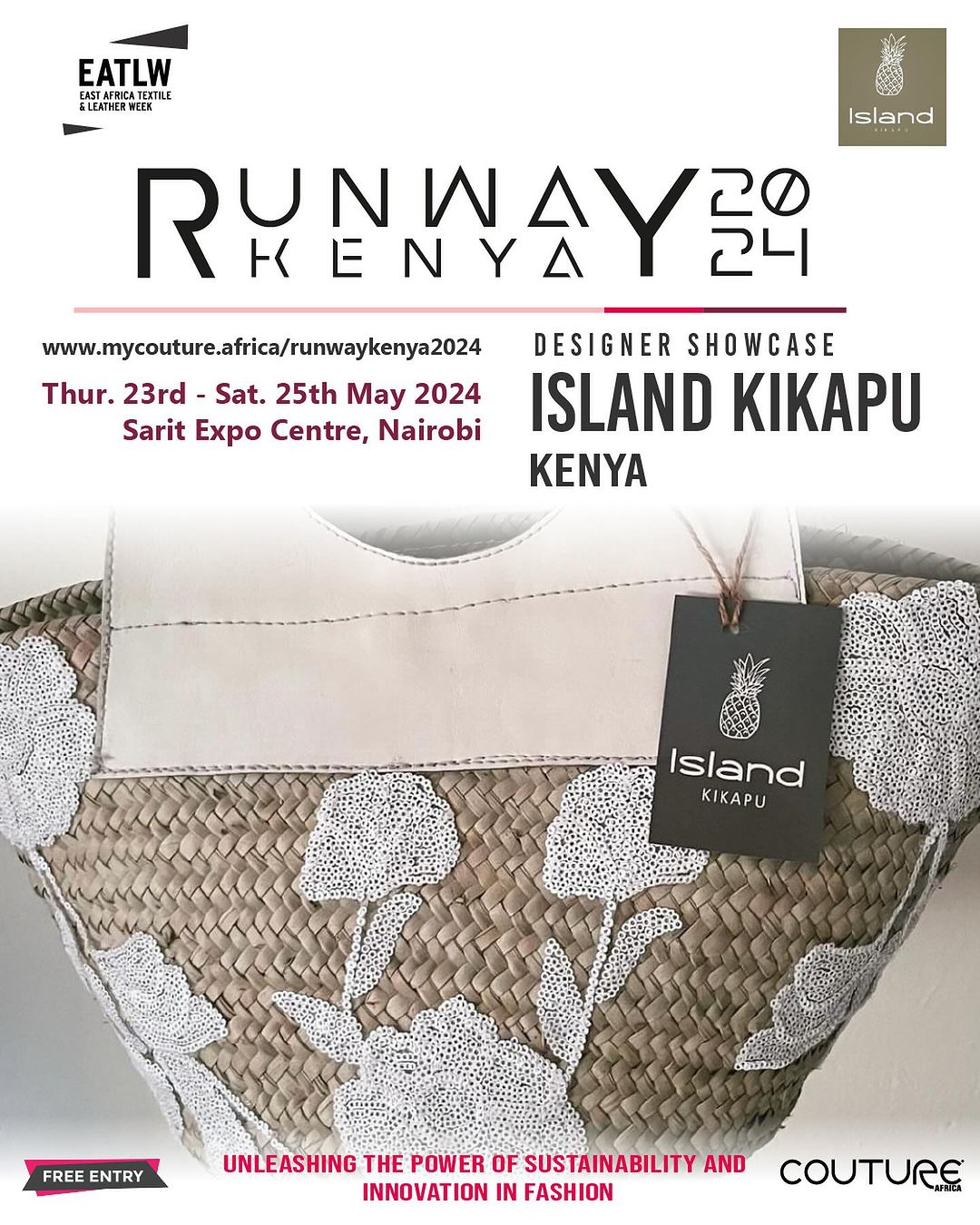 ISLAND KIKAPU will showcase at the EATLW 2024 [PHOTO EATLW]
ISLAND KIKAPU will showcase at the EATLW 2024 [PHOTO EATLW]
Island Kikapus, brings you unique baskets that merge luxurious fashion and style, perfect for every season and mission. Transforming local woven baskets into versatile works of art with leather and decorations like never before. Each basket is hand-painted and adorned with artistic decorations such as flowers, sequins, embroidery, and various accessories
The East Africa Textile and Leather Week (EATLW) 2024 is shaping up to be the premier event for the textile, leather, and fashion industries in the East Africa region. Set to take place in Nairobi, Kenya, the week-long exhibition and trade show will bring together over 150 brands and more than 3,000 traders from 30 countries around the world.

Guest speakers during the conference on fashion entrepreneurship
EATLW 2024 promises to be an unrivaled platform for trade, networking, and showcasing the latest innovations from the region's textile, leather, and fashion sectors. With exhibitions, fashion shows, networking events, and more, attendees will get a comprehensive look at the best products and services the industries have to offer.
 An exhibitor with a dazzling smile and vibrant energy in the 2023 edition [PHOTO EATLW]
An exhibitor with a dazzling smile and vibrant energy in the 2023 edition [PHOTO EATLW]
A highlight of the event will be a major fashion show featuring collections from 8 confirmed African designers representing different countries across the continent. The fashion show will provide a spotlight for Africa's rising fashion talents and shine a light on the creativity and craftsmanship of the region's designers.
 Kenyan model Merab Achola in a collection that will be showcased at the EATLW 2024 [PHOTO EATLW]
Kenyan model Merab Achola in a collection that will be showcased at the EATLW 2024 [PHOTO EATLW]
"We are tremendously excited to host EATLW 2024 here in Nairobi, East Africa's textile, leather, and fashion industries are brimming with potential. This event will connect our region's businesses and artisans with trade partners from around the world while also elevating homegrown talents on a global stage." said the event's organizer.
EATLW 2024 is expected to generate significant business opportunities, new trade partnerships, and investments in East Africa's crucial textile, leather, and fashion sectors. It marks a major milestone for these industries in the region gaining more international prominence and recognition.

Guest speakers during the conference on customer focus
With seminal networking events, fashion shows, and exhibitions already confirmed and more to be announced in the coming week, EATLW 2024 is shaping up to be an unmissable event. So far 8 fashion brands have confirmed to showcase their designs during the EATLW 2024 runway show.
 SPINNERS & SPINNERS will showcase at the EATLW 2024 [PHOTO EATLW]
SPINNERS & SPINNERS will showcase at the EATLW 2024 [PHOTO EATLW]
Spinners&Spinners A vertically integrated textile design and manufacturing company, they oversee every stage, from fiber to fashion. Founded in 1979 in Kenya, Spinners & Spinners Ltd (S&S) boasts a rich entrepreneurial legacy within the region.

A specialist in stunning fashion for both ladies and gentlemen the KZET from Ghana will showcase at the EATLW 2024 [PHOTO EATLW]
 DOLMEL from Ethiopia will showcase at the EATLW 2024 [PHOTO EATLW]
DOLMEL from Ethiopia will showcase at the EATLW 2024 [PHOTO EATLW]
DolMel is an Ethiopian fashion brand bringing a unique approach that pushes the millennia-old tradition of hand-weaving into the 21st century. They do this by using high-tech digital reactive printing to produce rolls of various kinds of seamless patterns on a cotton hand-woven fabric. This later turns into bohemian inspired clothes that celebrates and expresses one’s unique identity.
 F &M will showcase at the EATLW 2024 [PHOTO EATLW]
F &M will showcase at the EATLW 2024 [PHOTO EATLW]
F&M (Fashion and Ministry) Brand is a faith-based fashion brand based in Nairobi, Kenya. The Made in Kenya brand believes in dressing a person externally with edgy, fashion forward and exclusive designs but more so to dress them internally with grace, with power and with the wholesome word of God. They are a Fashion brand with a difference.

Ambrosoli Creations from Uganda will showcase at the EATLW 2024 [PHOTO EATLW]
Ambrosoli Creations, spearheaded by Ambrose Angulo are manufacturers of branded and non-branded bags with an african touch. Based in Kampala, Uganda, they specialise in all sorts of bags for both women and men including backpacks, totes, handbags and travel bags with canvas, denim and leather being their core mediums.
 ZIA Africa will showcase at the EATLW 2024 [PHOTO EATLW]
ZIA Africa will showcase at the EATLW 2024 [PHOTO EATLW]
Since 2013, Zia has revolutionized Kenyan fashion by championing sustainability. This #MadeInKenya brand offers timeless, high-quality pieces for the modern, aspirational woman. Committed to eco-friendly practices, Zia believes fashion shouldn’t harm the planet. By 2025, their goal is to become Africa’s leading sustainable fashion platform.
 Godmesa will showcase at the EATLW 2024 [PHOTO EATLW]
Godmesa will showcase at the EATLW 2024 [PHOTO EATLW]
Godmesa is a Kenyan fashion brand dedicated to making their clients feel good, feel confident, and have fun with fashion. Their cutting-edge designs push boundaries and redefine style, celebrating individuality and bold expression.
 ISLAND KIKAPU will showcase at the EATLW 2024 [PHOTO EATLW]
ISLAND KIKAPU will showcase at the EATLW 2024 [PHOTO EATLW]
Island Kikapus, brings you unique baskets that merge luxurious fashion and style, perfect for every season and mission. Transforming local woven baskets into versatile works of art with leather and decorations like never before. Each basket is hand-painted and adorned with artistic decorations such as flowers, sequins, embroidery, and various accessories
Chantal Murebwa grew New Kigali Designers and Outfitters from a small venture with just two tailors and one sewing machine, into a thriving fashion company.
Standing in front of a two-storey brick building, Chantal Murebwa admires the crisp white paint. She has witnessed the entire journey of this structure: from its foundations being laid to its transformation into New Kigali Designers and Outfitters, a thriving garment factory. Located close to the Kigali Genocide Memorial, the company founded by Murebwa employs 280 workers. In the reception area, an array of finished garments, including t-shirts, coats, overalls, and shirts, all in vibrant colors, is displayed. In the cutting room, workers operate machines that precisely cut collars and sleeves.
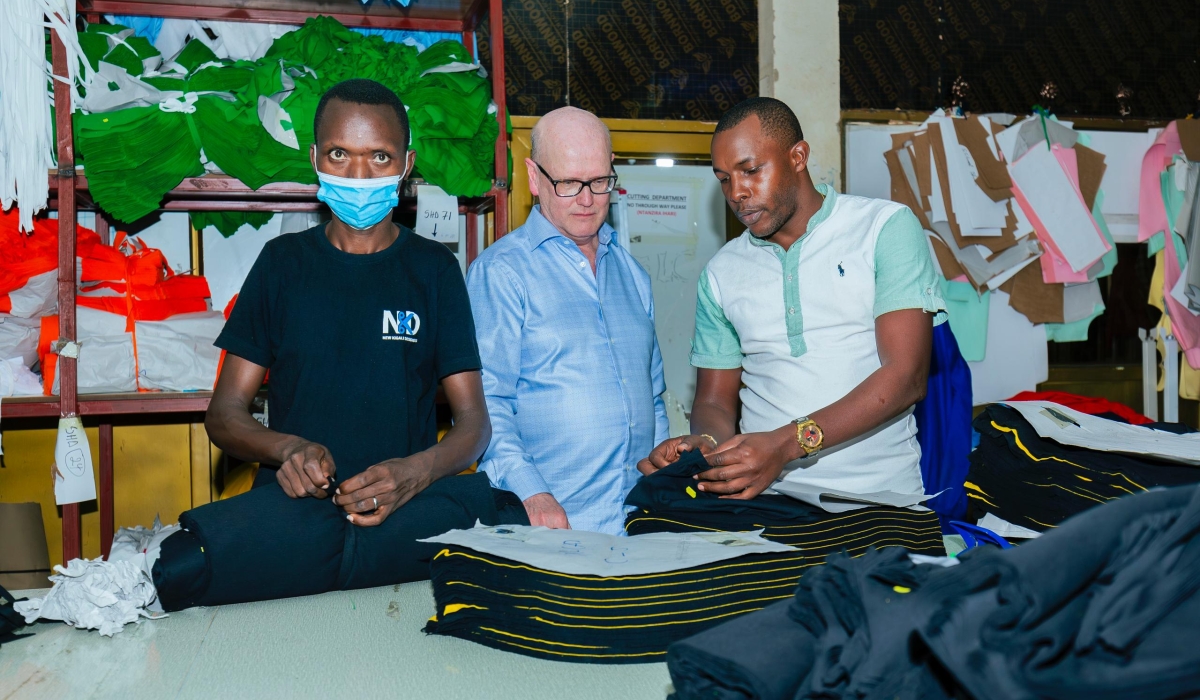 Thomas Ostros, European Investment Bank (EIB Global) Vice President during a guided tour of New Kigali Designers and Outfitters, a garment factory located in Gasabo district, Gisozi sector [PHOTO NT]
Thomas Ostros, European Investment Bank (EIB Global) Vice President during a guided tour of New Kigali Designers and Outfitters, a garment factory located in Gasabo district, Gisozi sector [PHOTO NT]
The production room, where cut garment pieces are assembled, is on the second floor. State-of-the-art tailoring machines hum as workers in matching black t-shirts, emblazoned with the factory’s motto ‘Home of tailor-made garments and branding’, tend to their tasks. In the finishing room, the assembled garments undergo ironing, quality checks, and packaging by the factory’s staff.
A humble beginning
It all began in 1995 when Murebwa was just 24, in the aftermath of the 1994 genocide, a devastating period for the country.
“There were a lot of challenges but also opportunities. I was inspired by my passion for fashion and women’s empowerment. When I started, I had one sewing machine and two women staff, and we were focusing on enlarging or reducing the size of women’s clothes. We later secured a gig to make uniforms for security guards and progressed,” the entrepreneur explains.
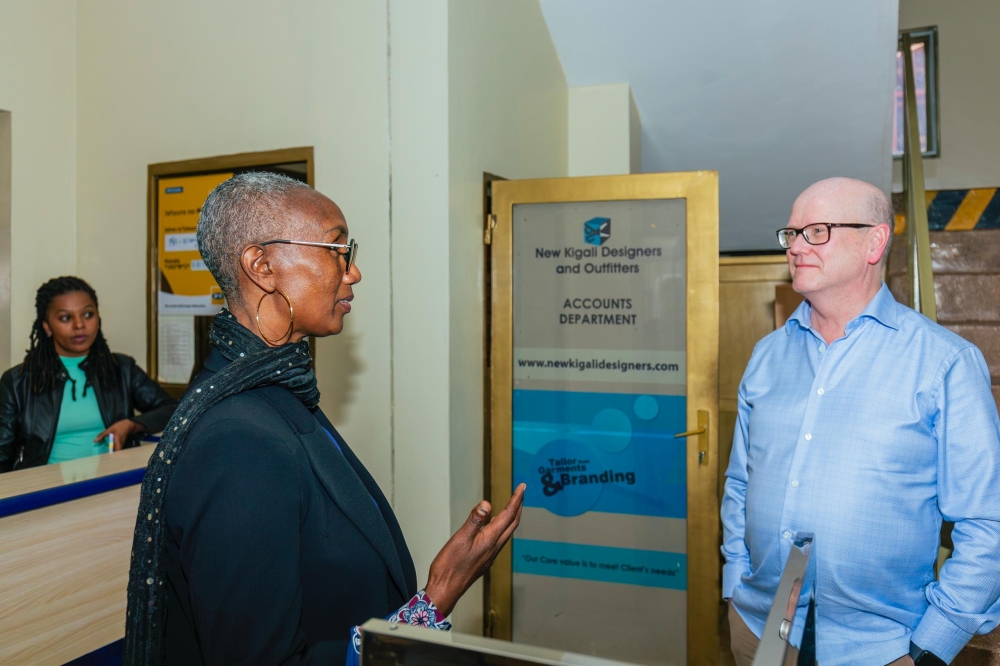 Chantal Umurerwa, the Managing Director of Kigali Designers and Outfitters interacts with Thomas Ostros, European Investment Bank (EIB Global) Vice President[PHOTO NT]
Chantal Umurerwa, the Managing Director of Kigali Designers and Outfitters interacts with Thomas Ostros, European Investment Bank (EIB Global) Vice President[PHOTO NT]
Murebwa registered New Kigali Designers and Outfitters as a company in 1998, initially employing five tailors. By 2005, her workshop had expanded to include 20 tailors. Recognizing the high demand and numerous opportunities for growth, Murebwa began seeking financial support.
“I obtained a loan from BCDI, now Ecobank, by showing them a contract I had won to produce uniforms for security guards, and I repaid it well,” she says. “Then, in 2003, the Bank of Kigali extended another loan to me for acquiring the land where we constructed this factory.”
Since its establishment, the factory’s clientele includes both corporate entities and individuals, with a growing presence across all provinces of Rwanda.
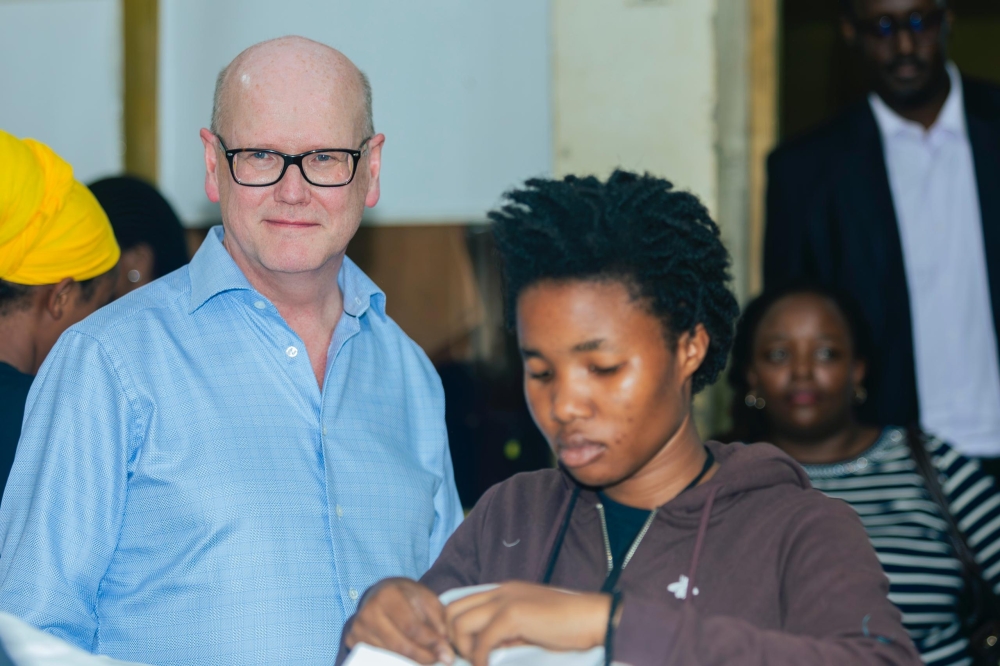 European Investment Bank (EIB Global) Vice President Thomas Ostros, visiting the garment factory[PHOTO NT]
European Investment Bank (EIB Global) Vice President Thomas Ostros, visiting the garment factory[PHOTO NT]
Challenges and future endeavours
The size of the apparel market in Rwanda, as of 2024, was $426.10 million, with a projected annual growth rate of 3.41% between 2024 and 2028. A 2023 UNESCO report, The fashion sector in Africa: Trends, challenges, and opportunities for growth, highlights Africa as one of the next frontiers for fashion. Rwanda is also listed as an African country with a growing local high-fashion luxury brand presence.
Despite these positive trends, Murebwa still faces challenges that hinder her work. She identified access to finance as a major obstacle. Moreover, the impact of the strong US dollar is a concern, as her company relies on importing all its raw materials.
“Delays in shipping also disrupt my factory’s workflow when urgent orders are required,” she says.
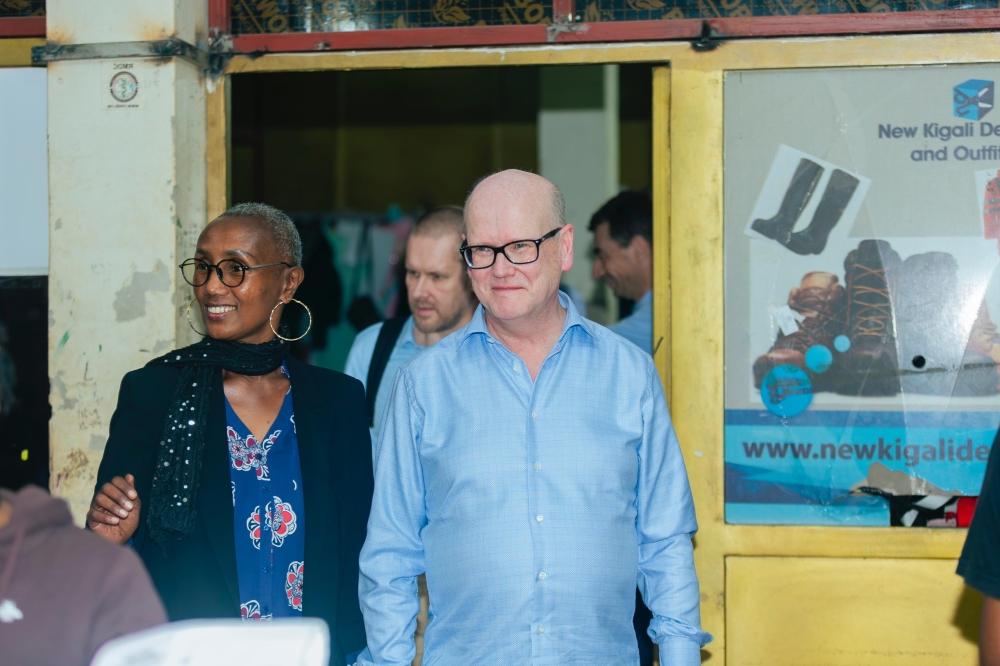 Thomas Ostros, European Investment Bank (EIB Global) Vice President during a guided tour of the garment factory at Gisozi in Kigali[PHOTO NT]
Thomas Ostros, European Investment Bank (EIB Global) Vice President during a guided tour of the garment factory at Gisozi in Kigali[PHOTO NT]
“Acquiring skilled manpower remains a challenge, especially for roles like textile engineers and quality assurance personnel, as they are costly to hire from abroad. I suggest that the government establish faculties related to these trades in universities to develop local talent,” she adds.
On a personal note, Murebwa continues to grapple with balancing her work life and family commitments. Her business requires a significant time investment, and she often finds herself struggling to find a balance. Looking ahead, Murebwa’s New Kigali Designers and Outfitters is in the final stages of opening a second phase of its factory at the Kigali Special Economic Zone.
“The new phase will house 300 staff [in addition to the 280 already employed] and incorporate high-tech machinery. This will enhance our ability to target export markets. Our focus will be on producing a variety of t-shirts to ensure affordability for all,” Murebwa says.
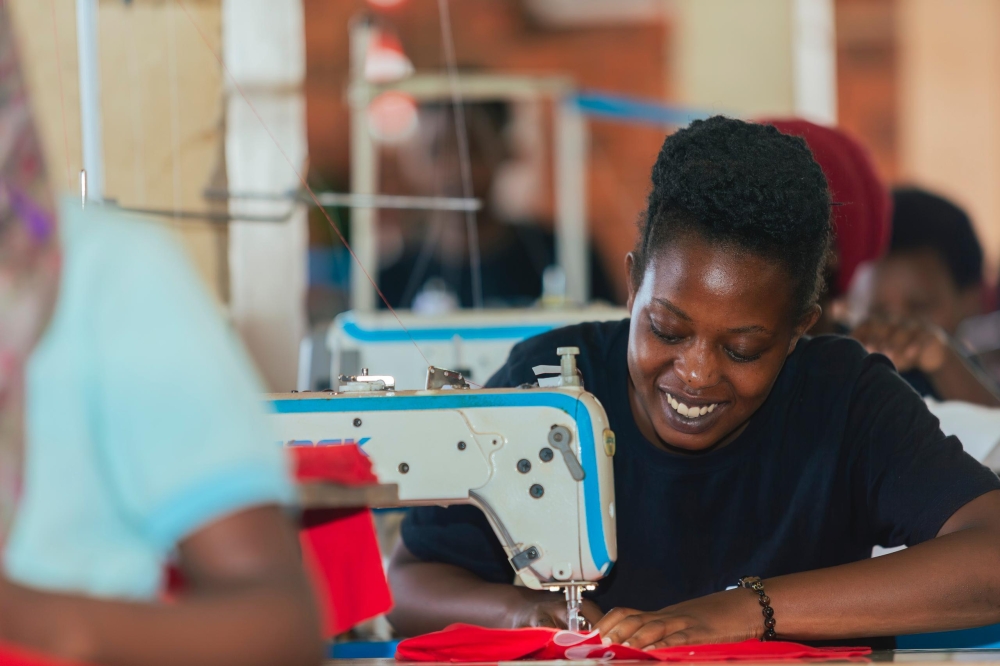 New Kigali Designers and Outfitters, a garment factory located in Gasabo district, Gisozi sector [PHOTO NT]
New Kigali Designers and Outfitters, a garment factory located in Gasabo district, Gisozi sector [PHOTO NT]
Chantal Murebwa grew New Kigali Designers and Outfitters from a small venture with just two tailors and one sewing machine, into a thriving fashion company.
Standing in front of a two-storey brick building, Chantal Murebwa admires the crisp white paint. She has witnessed the entire journey of this structure: from its foundations being laid to its transformation into New Kigali Designers and Outfitters, a thriving garment factory. Located close to the Kigali Genocide Memorial, the company founded by Murebwa employs 280 workers. In the reception area, an array of finished garments, including t-shirts, coats, overalls, and shirts, all in vibrant colors, is displayed. In the cutting room, workers operate machines that precisely cut collars and sleeves.
 Thomas Ostros, European Investment Bank (EIB Global) Vice President during a guided tour of New Kigali Designers and Outfitters, a garment factory located in Gasabo district, Gisozi sector [PHOTO NT]
Thomas Ostros, European Investment Bank (EIB Global) Vice President during a guided tour of New Kigali Designers and Outfitters, a garment factory located in Gasabo district, Gisozi sector [PHOTO NT]
The production room, where cut garment pieces are assembled, is on the second floor. State-of-the-art tailoring machines hum as workers in matching black t-shirts, emblazoned with the factory’s motto ‘Home of tailor-made garments and branding’, tend to their tasks. In the finishing room, the assembled garments undergo ironing, quality checks, and packaging by the factory’s staff.
A humble beginning
It all began in 1995 when Murebwa was just 24, in the aftermath of the 1994 genocide, a devastating period for the country.
“There were a lot of challenges but also opportunities. I was inspired by my passion for fashion and women’s empowerment. When I started, I had one sewing machine and two women staff, and we were focusing on enlarging or reducing the size of women’s clothes. We later secured a gig to make uniforms for security guards and progressed,” the entrepreneur explains.
 Chantal Umurerwa, the Managing Director of Kigali Designers and Outfitters interacts with Thomas Ostros, European Investment Bank (EIB Global) Vice President[PHOTO NT]
Chantal Umurerwa, the Managing Director of Kigali Designers and Outfitters interacts with Thomas Ostros, European Investment Bank (EIB Global) Vice President[PHOTO NT]
Murebwa registered New Kigali Designers and Outfitters as a company in 1998, initially employing five tailors. By 2005, her workshop had expanded to include 20 tailors. Recognizing the high demand and numerous opportunities for growth, Murebwa began seeking financial support.
“I obtained a loan from BCDI, now Ecobank, by showing them a contract I had won to produce uniforms for security guards, and I repaid it well,” she says. “Then, in 2003, the Bank of Kigali extended another loan to me for acquiring the land where we constructed this factory.”
Since its establishment, the factory’s clientele includes both corporate entities and individuals, with a growing presence across all provinces of Rwanda.
 European Investment Bank (EIB Global) Vice President Thomas Ostros, visiting the garment factory[PHOTO NT]
European Investment Bank (EIB Global) Vice President Thomas Ostros, visiting the garment factory[PHOTO NT]
Challenges and future endeavours
The size of the apparel market in Rwanda, as of 2024, was $426.10 million, with a projected annual growth rate of 3.41% between 2024 and 2028. A 2023 UNESCO report, The fashion sector in Africa: Trends, challenges, and opportunities for growth, highlights Africa as one of the next frontiers for fashion. Rwanda is also listed as an African country with a growing local high-fashion luxury brand presence.
Despite these positive trends, Murebwa still faces challenges that hinder her work. She identified access to finance as a major obstacle. Moreover, the impact of the strong US dollar is a concern, as her company relies on importing all its raw materials.
“Delays in shipping also disrupt my factory’s workflow when urgent orders are required,” she says.
 Thomas Ostros, European Investment Bank (EIB Global) Vice President during a guided tour of the garment factory at Gisozi in Kigali[PHOTO NT]
Thomas Ostros, European Investment Bank (EIB Global) Vice President during a guided tour of the garment factory at Gisozi in Kigali[PHOTO NT]
“Acquiring skilled manpower remains a challenge, especially for roles like textile engineers and quality assurance personnel, as they are costly to hire from abroad. I suggest that the government establish faculties related to these trades in universities to develop local talent,” she adds.
On a personal note, Murebwa continues to grapple with balancing her work life and family commitments. Her business requires a significant time investment, and she often finds herself struggling to find a balance. Looking ahead, Murebwa’s New Kigali Designers and Outfitters is in the final stages of opening a second phase of its factory at the Kigali Special Economic Zone.
“The new phase will house 300 staff [in addition to the 280 already employed] and incorporate high-tech machinery. This will enhance our ability to target export markets. Our focus will be on producing a variety of t-shirts to ensure affordability for all,” Murebwa says.
 New Kigali Designers and Outfitters, a garment factory located in Gasabo district, Gisozi sector [PHOTO NT]
New Kigali Designers and Outfitters, a garment factory located in Gasabo district, Gisozi sector [PHOTO NT]
East Africa Textile and Leather Week (EATLW) 2024 is set to be the premier event in the East Africa region showcasing the best in textile, leather, and fashion industries. With over 150 brands exhibiting and more than 3,000 traders from 30 countries expected to attend, EATLW promises to be an unrivaled platform for trade and innovation.
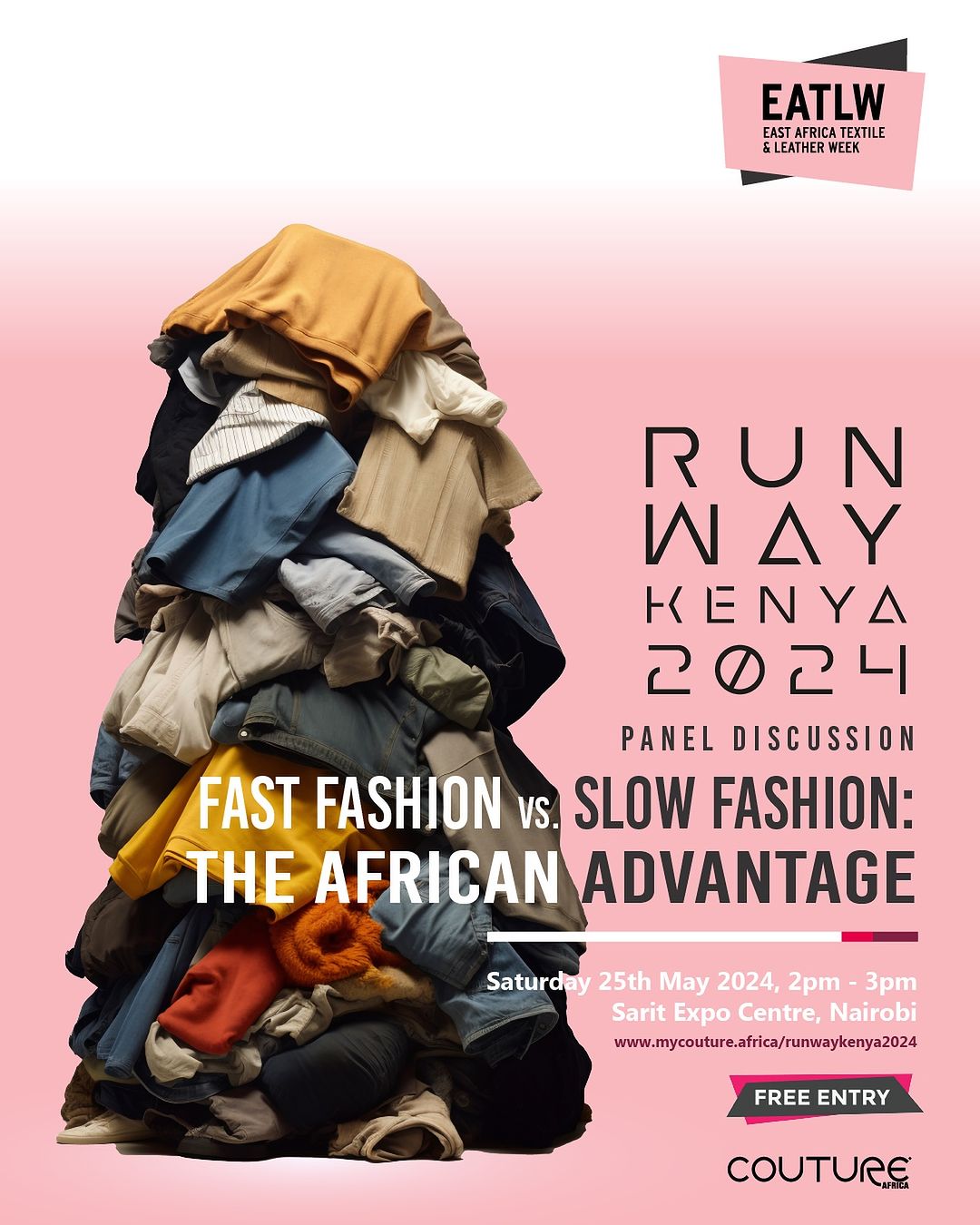
The event will commence on May 23, 2024, at Sarit Expo Centre in Nairobi, Kenya, at 10:00 am. The grand inauguration will be led by Dr. Juma Mukhwana, PhD, CBS, Principal Secretary for the State Department of Industry in the Ministry of Investments, Trade, and Industry, along with representatives from key partners including Kenya Export Promotion and Branding Agency (KEPROBA), Export Processing Zones Authority (EPZA), Kenya National Chamber of Commerce and Industry (KNCCI), Africa Leather and Leather Products Institute (ALLPI) and International Trade Centre (ITC).
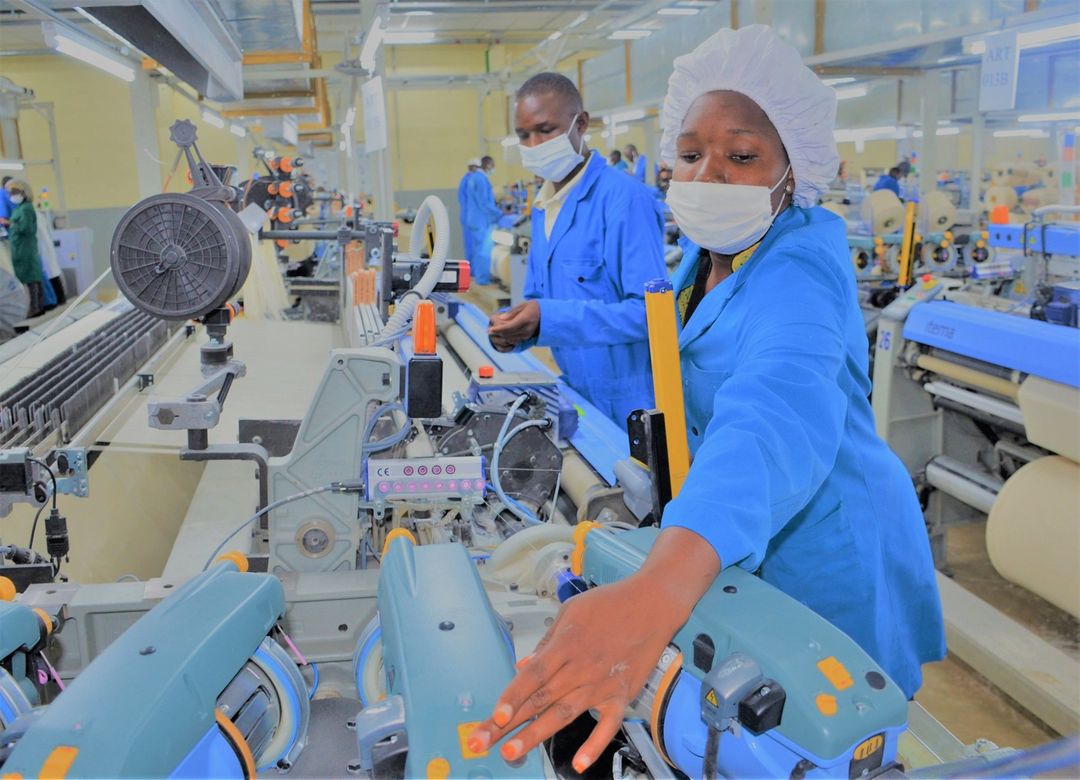 Experience the cutting-edge innovation of will be exhibited at the East Africa Textile & Leather Week 2024 [PHOTO INSIDE OF THE RIVATEX EAST AFRICA]
Experience the cutting-edge innovation of will be exhibited at the East Africa Textile & Leather Week 2024 [PHOTO INSIDE OF THE RIVATEX EAST AFRICA]
The RIVATEX EAST AFRICA founded in 2007 as a Moi University facility, Rivatex is a vertically integrated textile factory, transforming cotton lint into a range of high-quality fabrics. Their ultramodern apparel and garment-making unit utilizes state-of-the-art machinery, producing diverse outfits from cotton and cotton blend fibers. The Rivatex products reach independent retailers, schools, universities, and manufacturers nationwide, while also serving markets in Rwanda, Burundi, Uganda, and South Sudan. Attendees will be able to chat with the RIVATEX EAST AFRICA team as well as their fabrics and services.
During the opening ceremony, the attendees will also have the opportunity to engage in an official tour alongside government officials and event organizers, providing a glimpse into the vibrant showcase of textiles, accessories, footwear, and leather products.
"We are thrilled to bring you East Africa Textile and Leather Week 2024, which will feature a very engaging lineup of activities and expert discussions," says Mr. Negasi, CEO of Trade & Fairs East Africa LTD. "This year's edition will not only emphasize the importance of sustainability and innovation but will also highlight the many business opportunities within the thriving African textile and leather value chains."
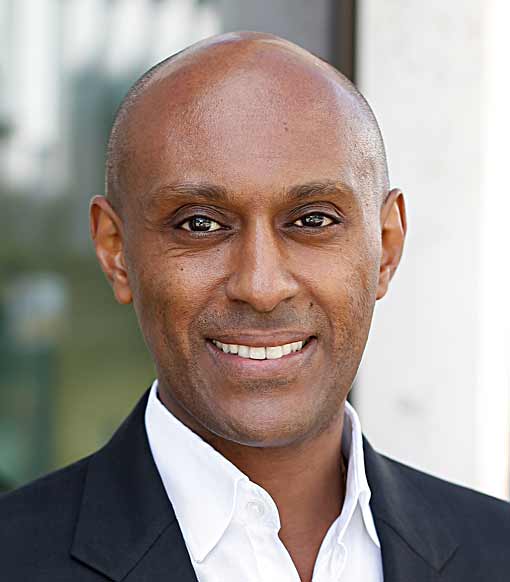 Mr. Negasi, CEO of Trade & Fairs East Africa LTD [PHOTO NT]
Mr. Negasi, CEO of Trade & Fairs East Africa LTD [PHOTO NT]
The conference program consists of an impressive lineup of topics and speakers, all under the theme "Unleashing the Power of Sustainability and Innovation in Fashion" including discussions on sustainable fashion, market trends, regional trade opportunities, fashion entrepreneurship, and the rise and influence of Gen Z.
 The discussion will feature the following esteemed panelists from diverse backgrounds
The discussion will feature the following esteemed panelists from diverse backgrounds
This year, EATLW welcomes the International Trade Centre (ITC) as a new partner, joining Africa Leather and Leather Products Institute (ALLPI) in contributing to a larger leather presence. Together they bring over 20 leather companies from Kenya, Tanzania, Uganda, Ethiopia, Rwanda, Burundi, and South Sudan. Major returning exhibitors include Star Sewing from Dubai, Desta Group from Ethiopia, Export Processing Zones Authority (EPZA), Carvico from Italy, and a diverse group from Asia.
Another major highlight of the event will be the much anticipated "Runway Kenya" fashion show in collaboration with Couture Africa which will feature stunning and creative designs and talents from the region.
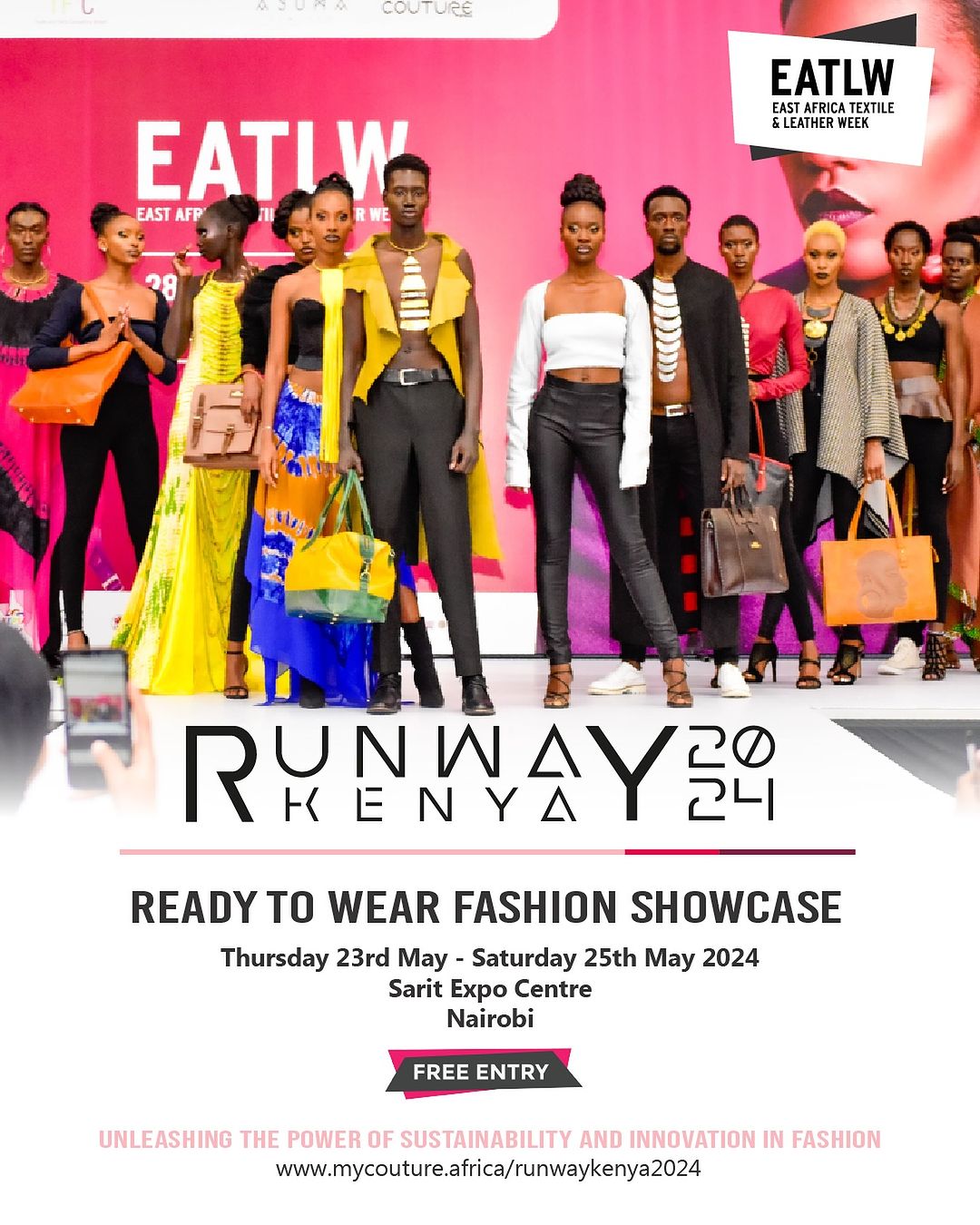

Zia Africa from Kenya will showcase at the East Africa Textile and Leather Week (EATLW) 2024
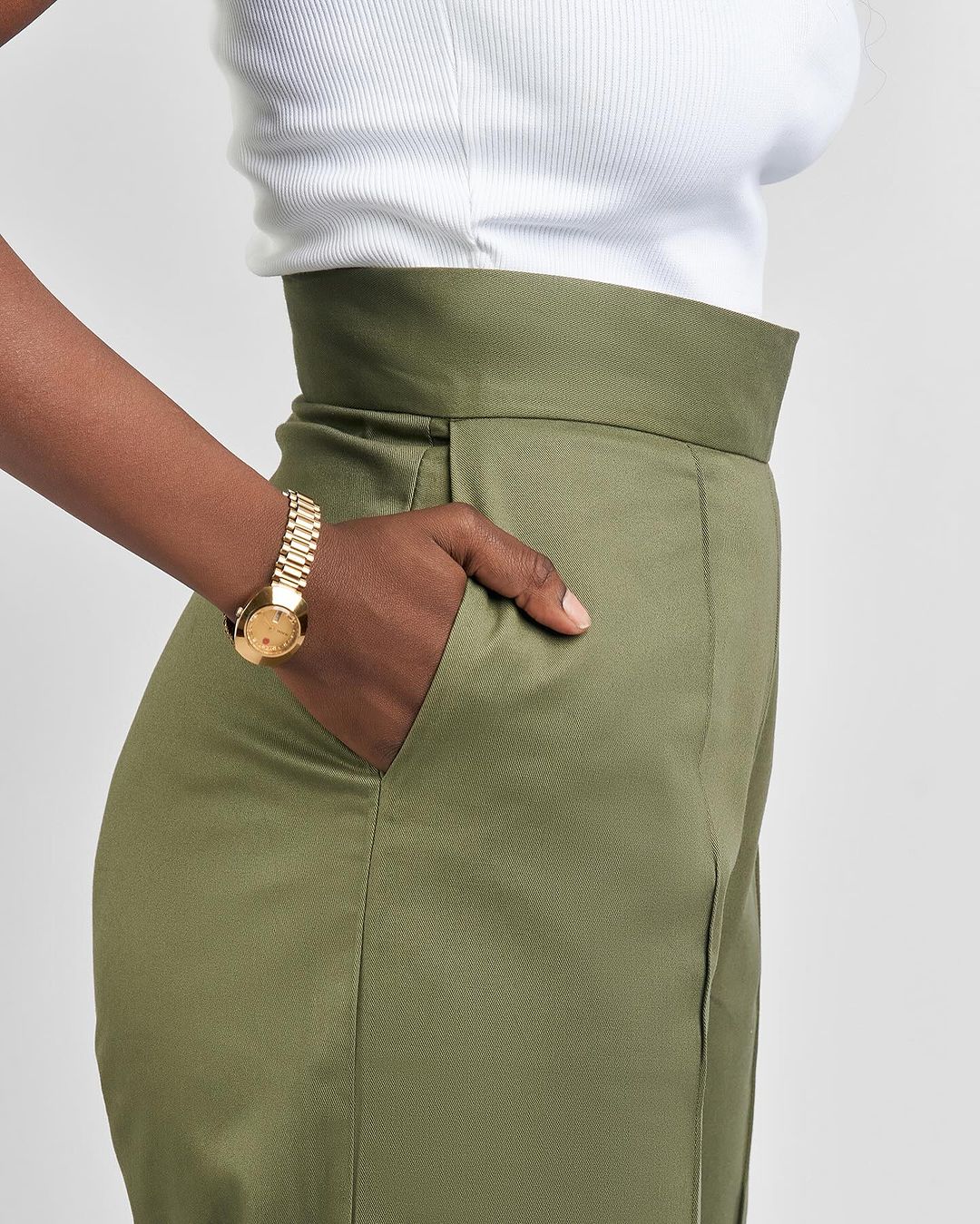 Made by Zia Africa [PHOTO EATLW]
Made by Zia Africa [PHOTO EATLW]
 Made by Zia Africa [PHOTO EATLW]
Made by Zia Africa [PHOTO EATLW]
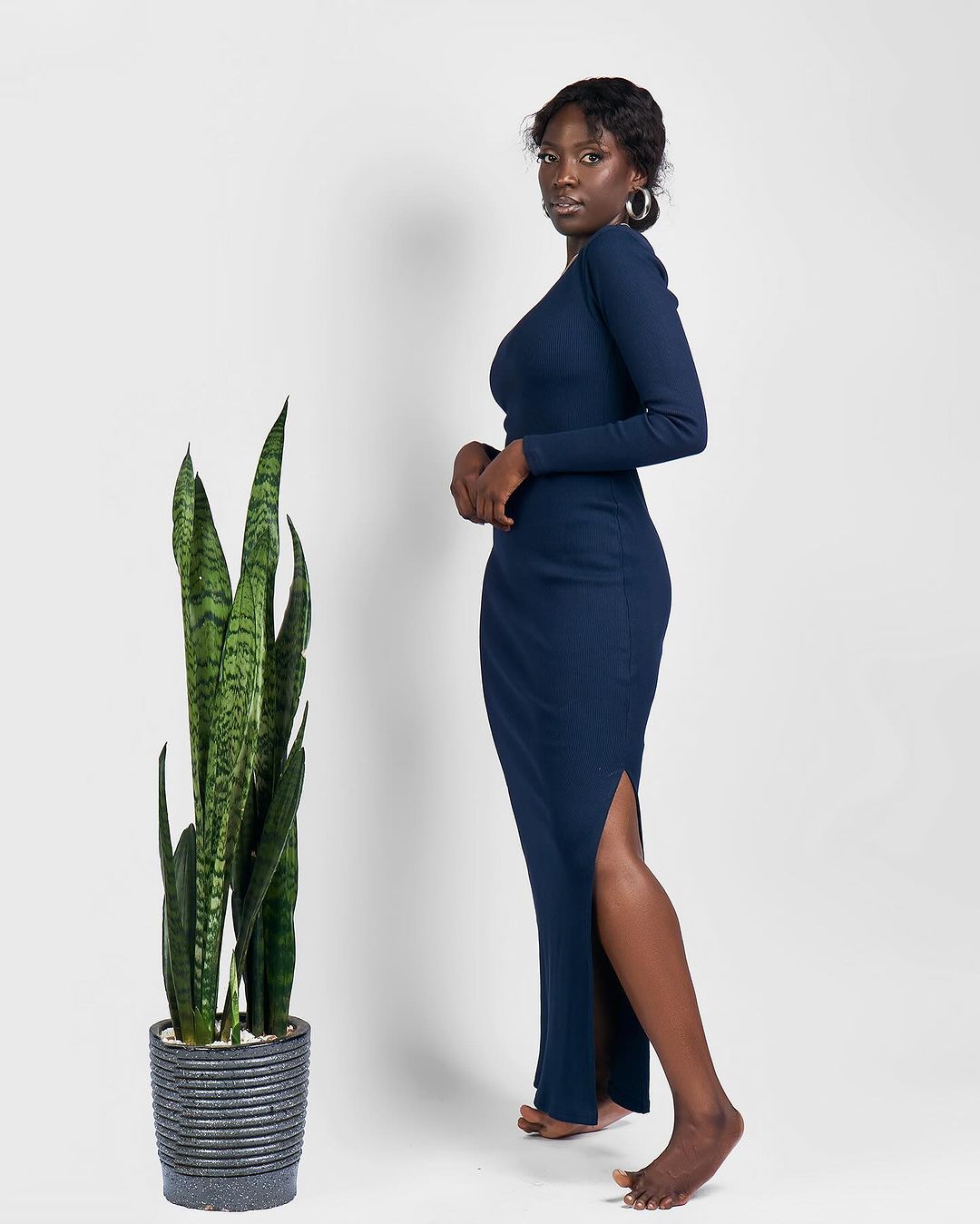 Made by Zia Africa [PHOTO EATLW]
Made by Zia Africa [PHOTO EATLW]
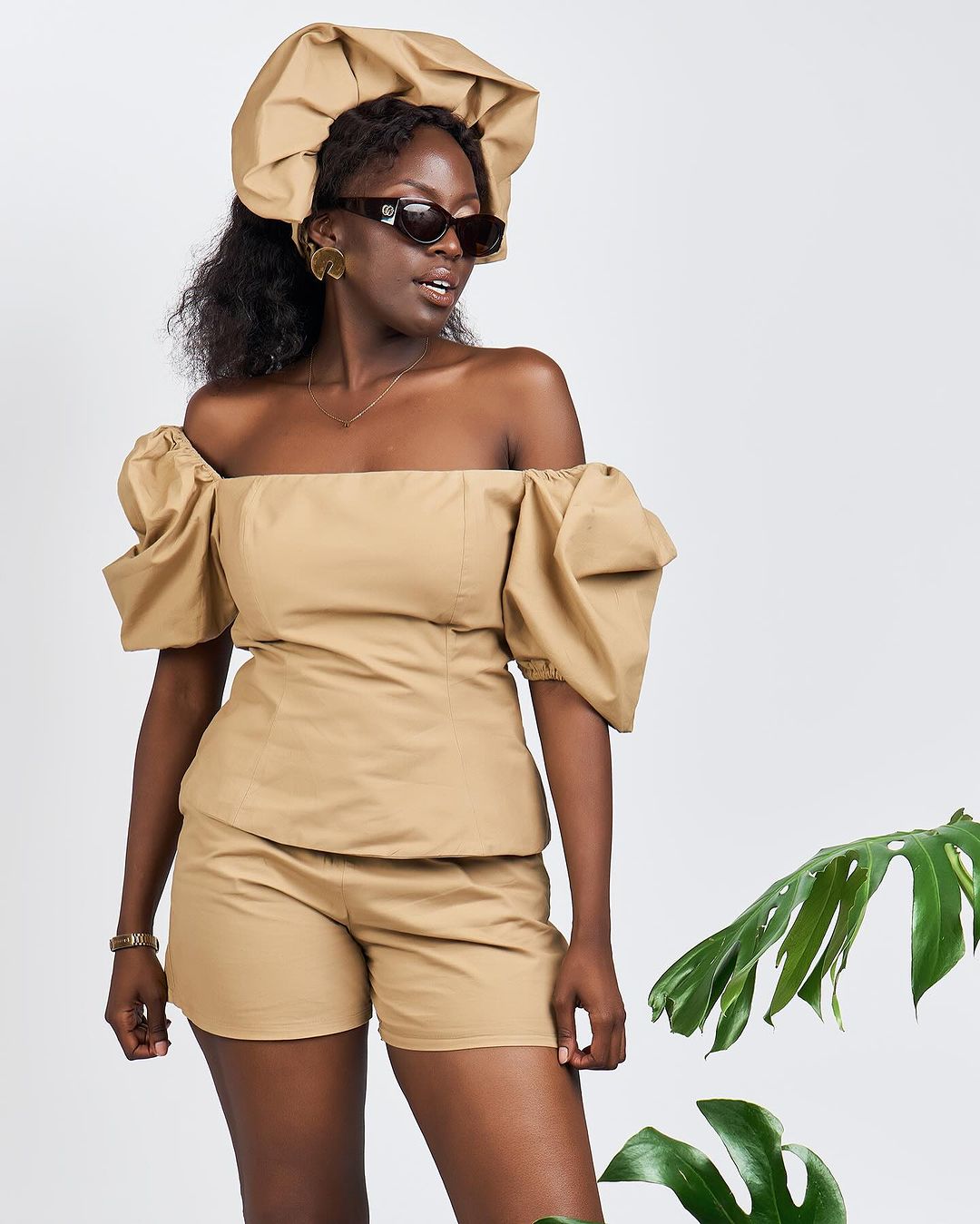 Made by Zia Africa [PHOTO EATLW]
Made by Zia Africa [PHOTO EATLW]
Since 2013, Zia Africa has revolutionized Kenyan fashion by championing sustainability. This #MadeInKenya brand offers timeless, high-quality pieces for the modern, aspirational woman. Committed to eco-friendly practices, Zia believes fashion shouldn’t harm the planet. By 2025, their goal is to become Africa’s leading sustainable fashion platform.

Ambrosoli Creations from Uganda will showcase at the East Africa Textile and Leather Week (EATLW) 2024
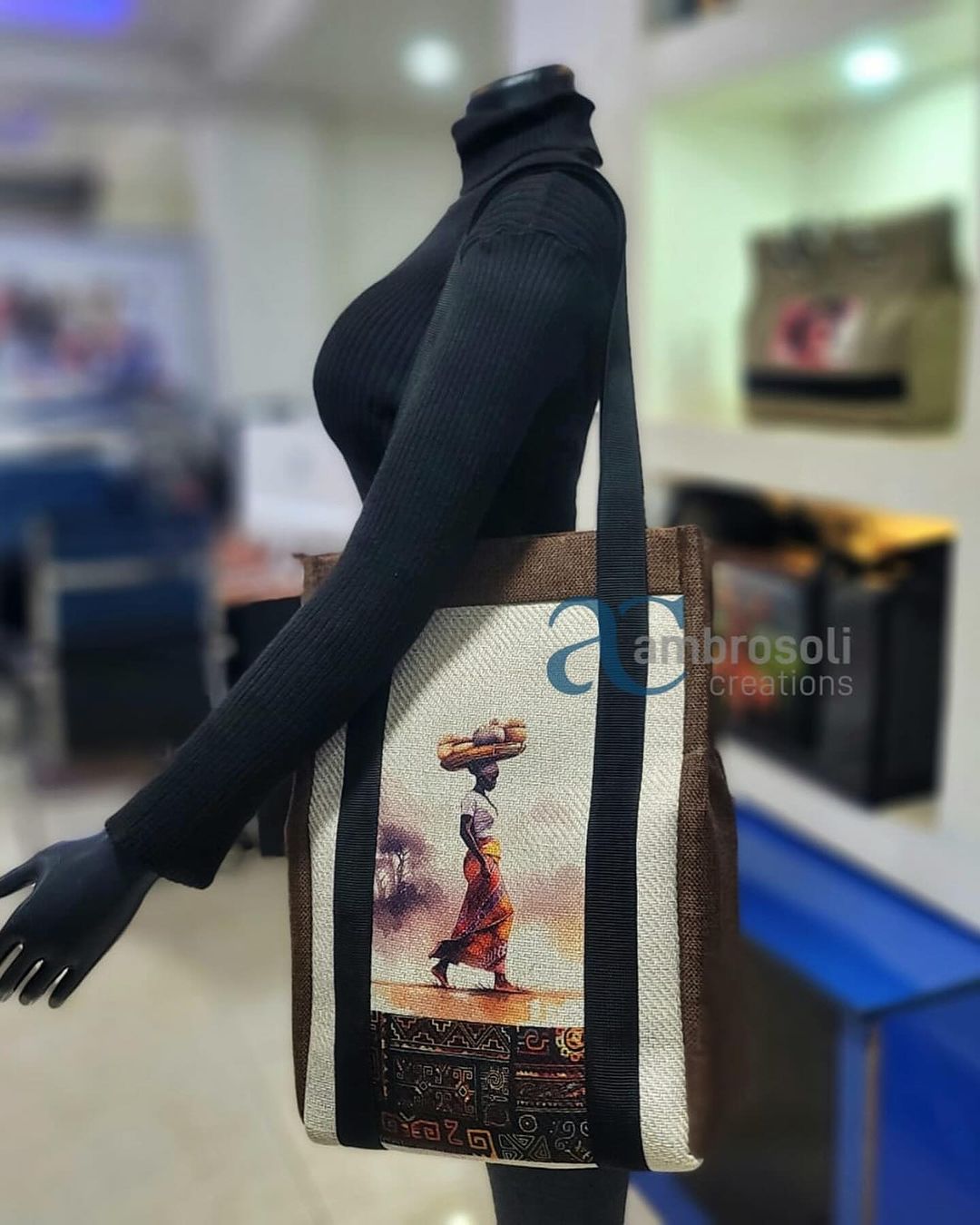 Bag Made by Ambrosoli Creations brand based in Uganda [PHOTO EATLW]
Bag Made by Ambrosoli Creations brand based in Uganda [PHOTO EATLW]
 Bag Made by Ambrosoli Creations brand based in Uganda [PHOTO EATLW]
Bag Made by Ambrosoli Creations brand based in Uganda [PHOTO EATLW]
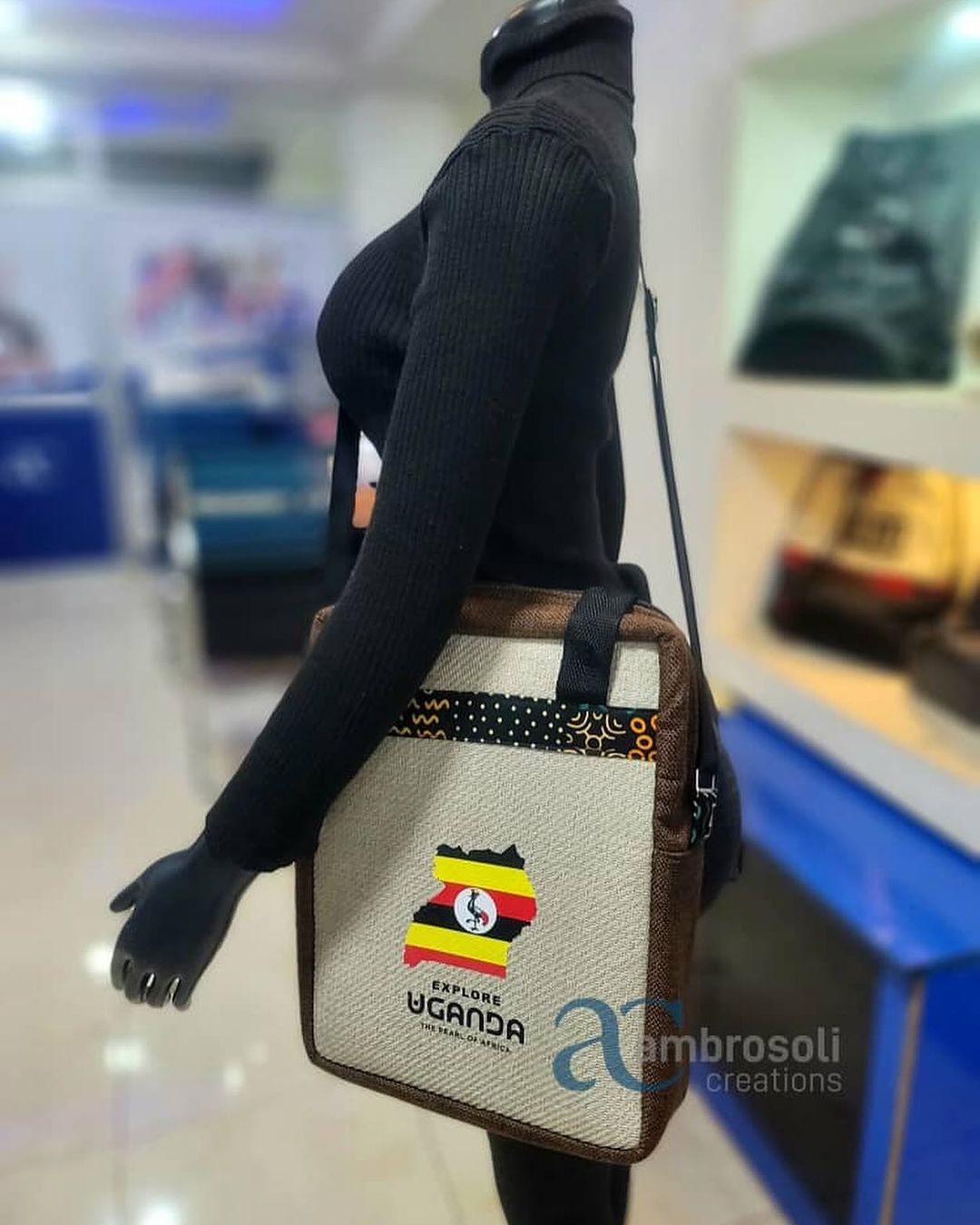 Bag Made by Ambrosoli Creations brand based in Uganda [PHOTO EATLW]
Bag Made by Ambrosoli Creations brand based in Uganda [PHOTO EATLW]
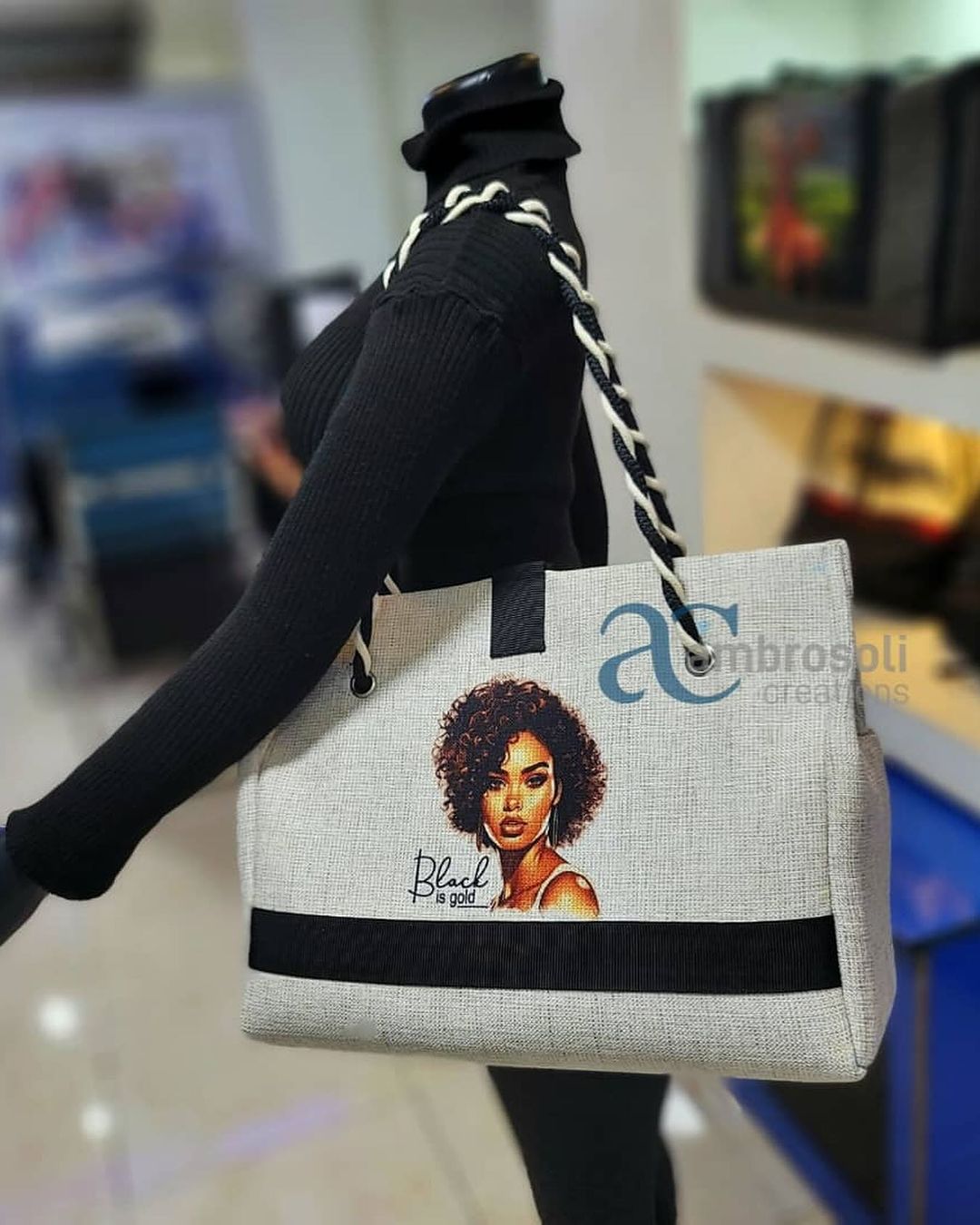 Bag Made by Ambrosoli Creations brand based in Uganda [PHOTO EATLW]
Bag Made by Ambrosoli Creations brand based in Uganda [PHOTO EATLW]
The Ambrosoli Creations, spearheaded by Ambrose Angulo are manufacturers of branded and non-branded bags with an African touch. Based in Kampala, Uganda, they specialize in all sorts of bags for both women and men including backpacks, totes, handbags, and travel bags with canvas, denim, and leather being their core mediums.
 F&M Brand from Kenya will showcase at the East Africa Textile and Leather Week (EATLW) 2024
F&M Brand from Kenya will showcase at the East Africa Textile and Leather Week (EATLW) 2024
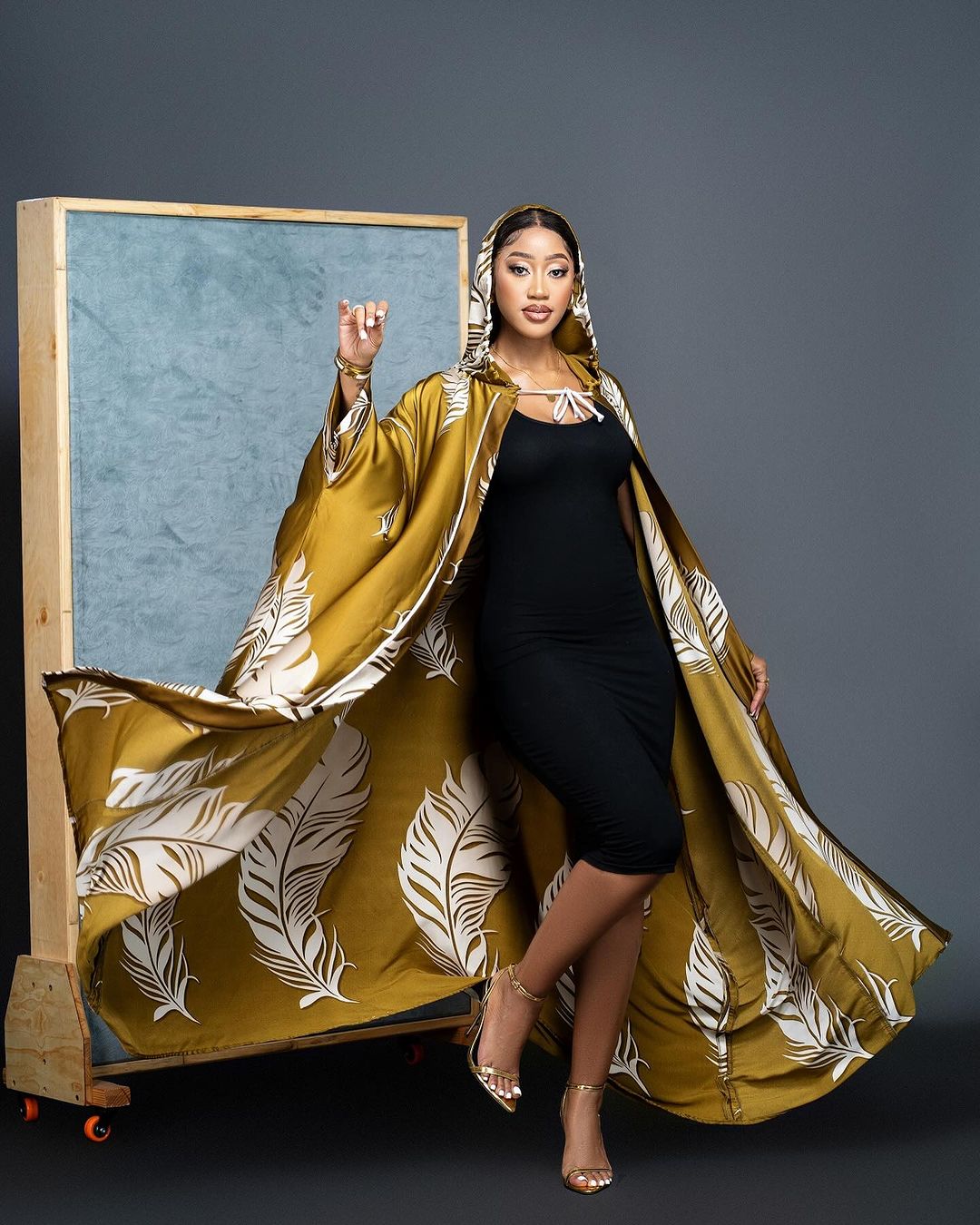 Made by F&M Brand from Kenya [PHOTO EATLW]
Made by F&M Brand from Kenya [PHOTO EATLW]
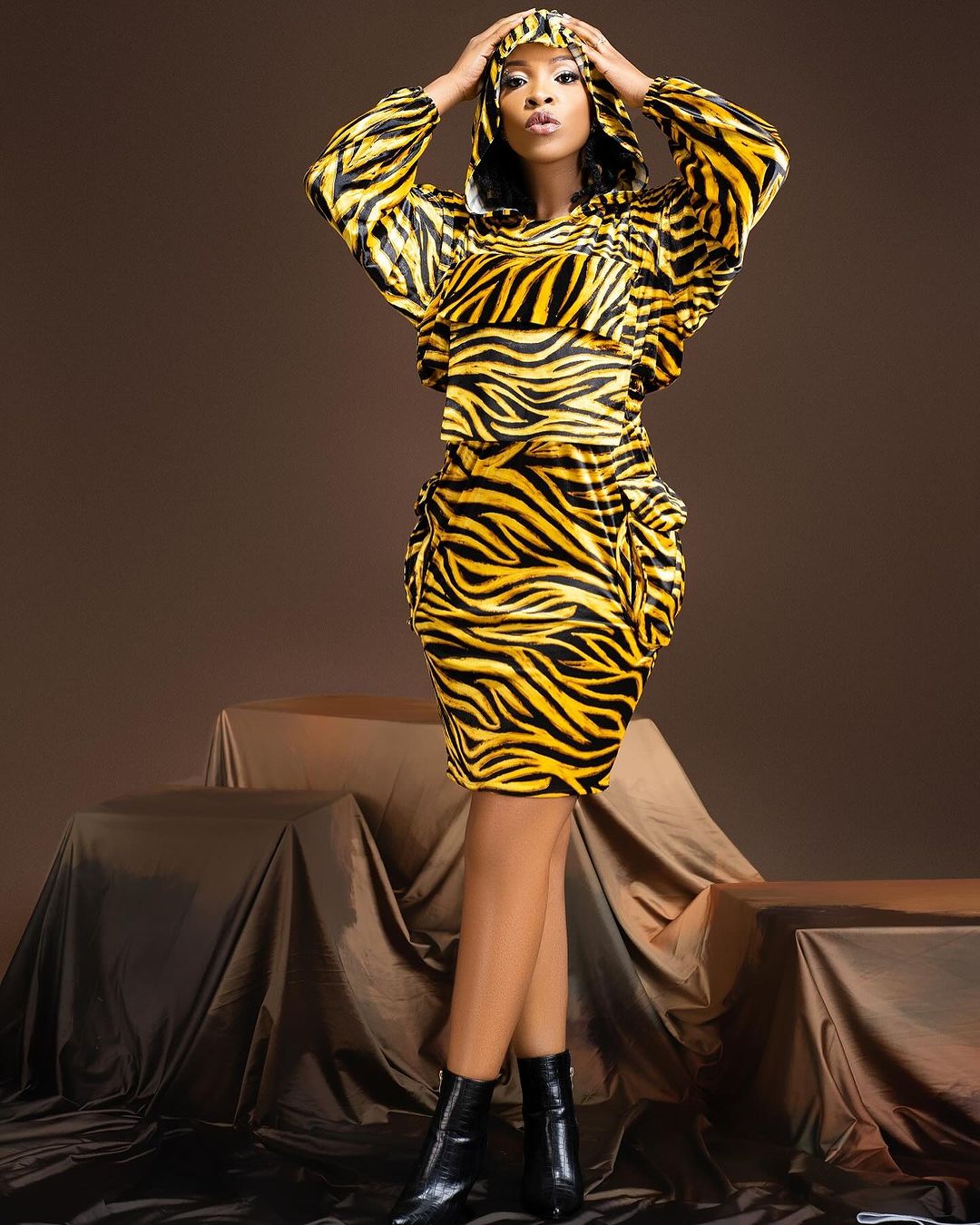 Made by F&M Brand from Kenya [PHOTO EATLW]
Made by F&M Brand from Kenya [PHOTO EATLW]
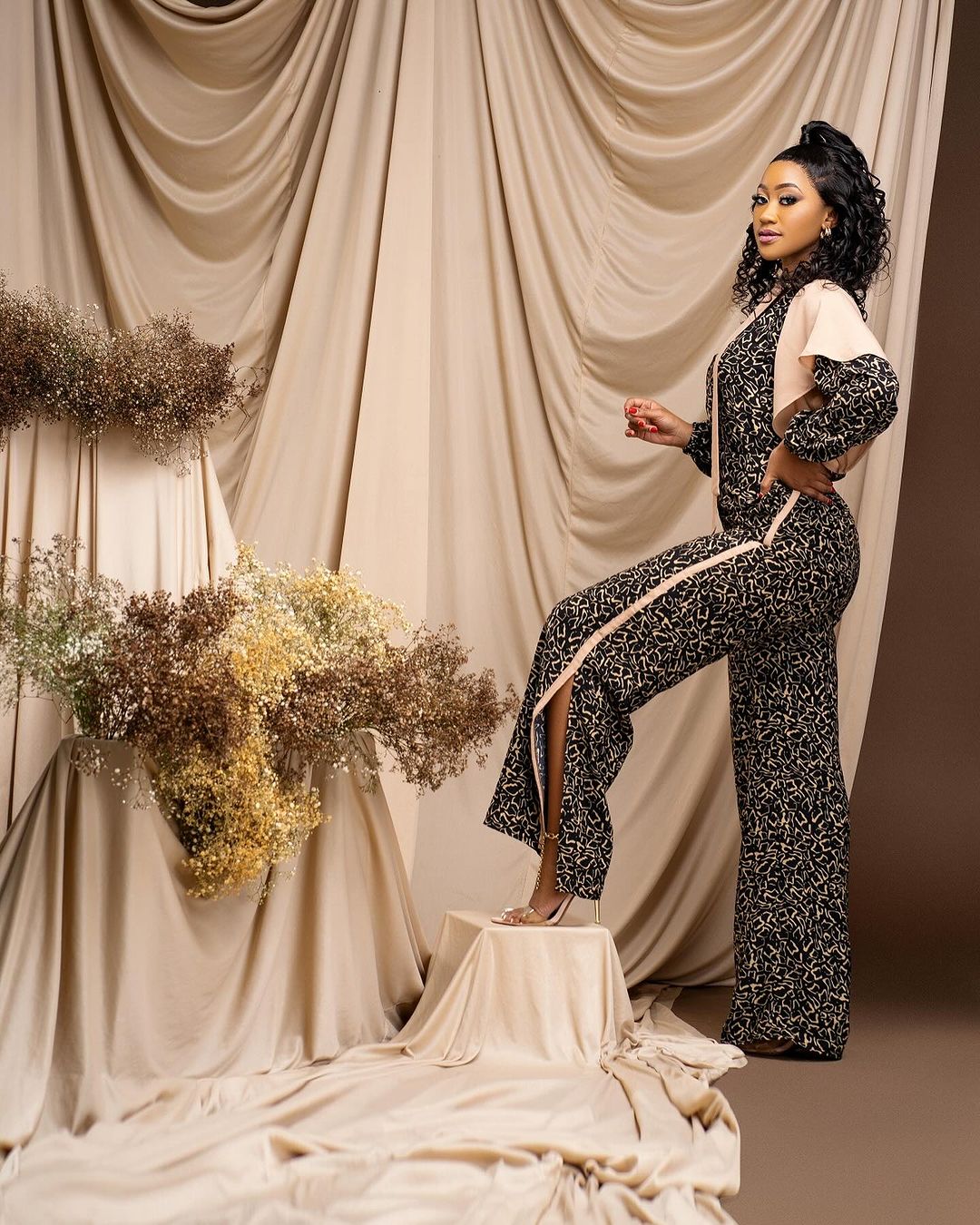 Made by F&M Brand from Kenya [PHOTO EATLW]
Made by F&M Brand from Kenya [PHOTO EATLW]
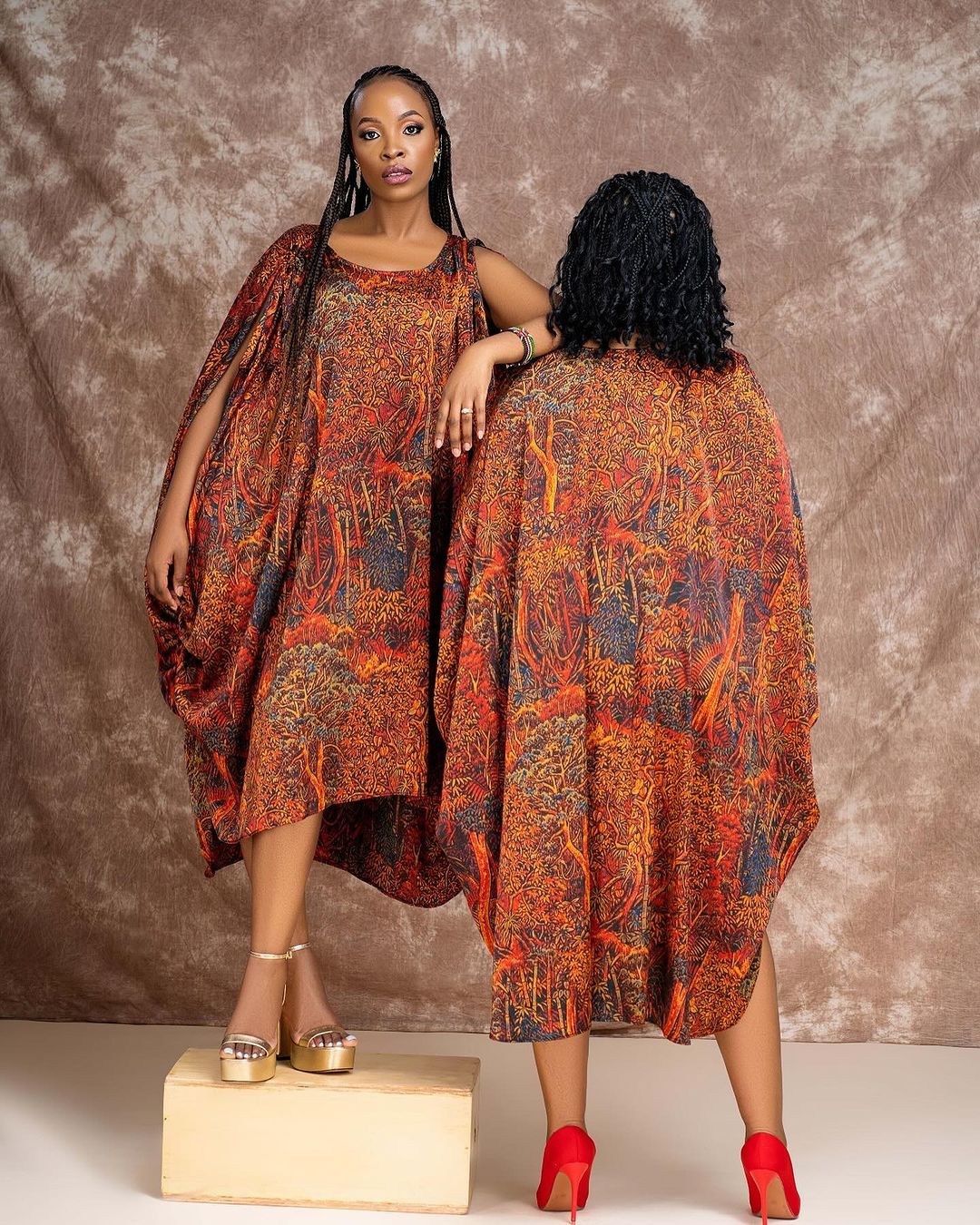 Made by F&M Brand from Kenya [PHOTO EATLW]
Made by F&M Brand from Kenya [PHOTO EATLW]
The F&M (Fashion and Ministry) Brand is a faith-based fashion brand based in Nairobi, Kenya. The Made in Kenya brand believes in dressing a person externally with edgy, fashion forward, and exclusive designs but more so to dress them internally with grace, with power, and with the wholesome word of God. They are a Fashion brand with a difference. The creative force behind F&M Brand is Fridah Ongili. She loves to design pieces that are conversation starters, exclusive, and top tier as evidenced by their pieces. She also firmly believes that God gave her her gifts to impact the world for good and for God. She prays to raise a generation of Proverbs 31 women through her Fashion and Ministry.

DOLMEL from Ethiopia will showcase at the East Africa Textile and Leather Week (EATLW) 2024
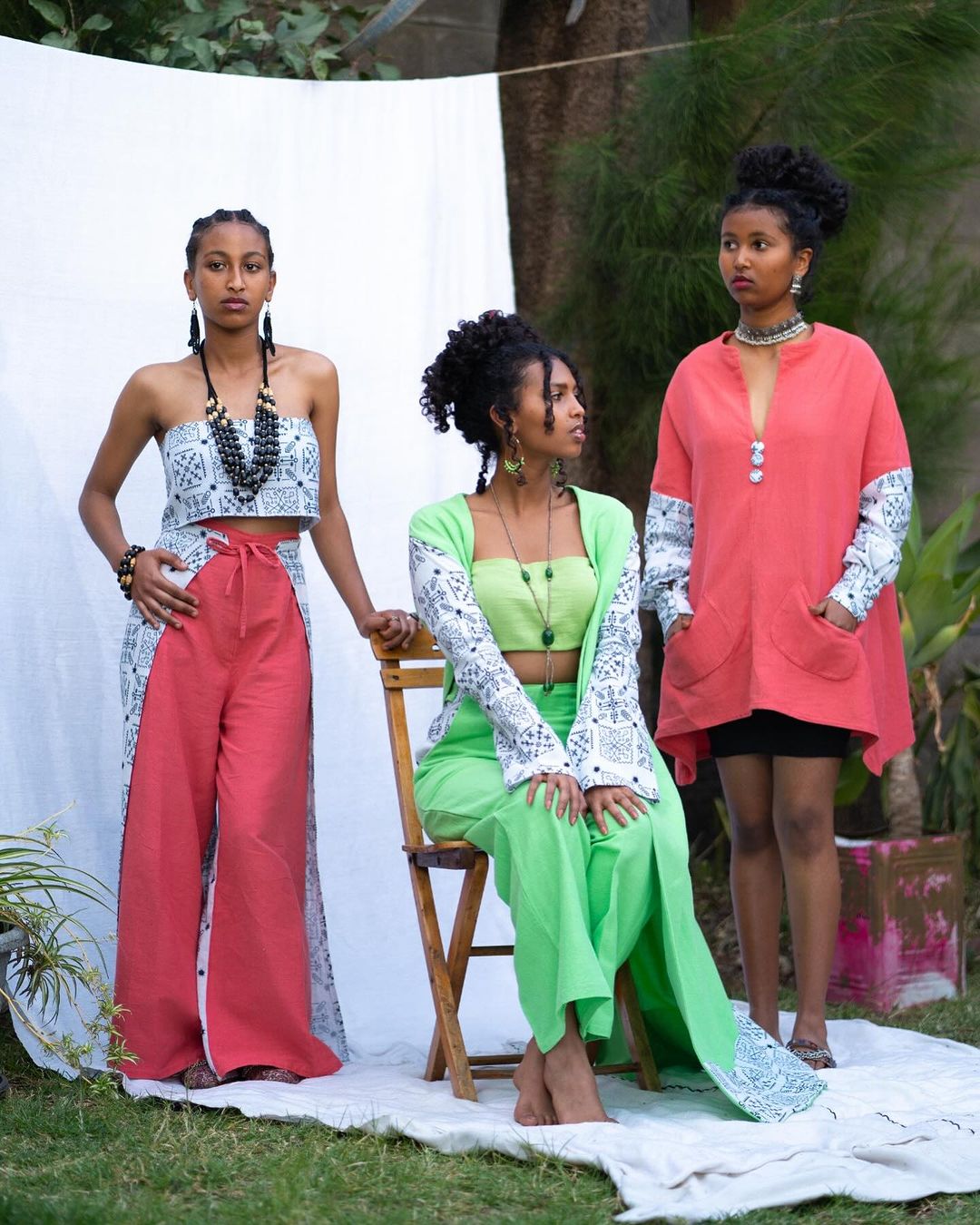 Made by DOLMEL from Ethiopia [PHOTO EATLW]
Made by DOLMEL from Ethiopia [PHOTO EATLW]
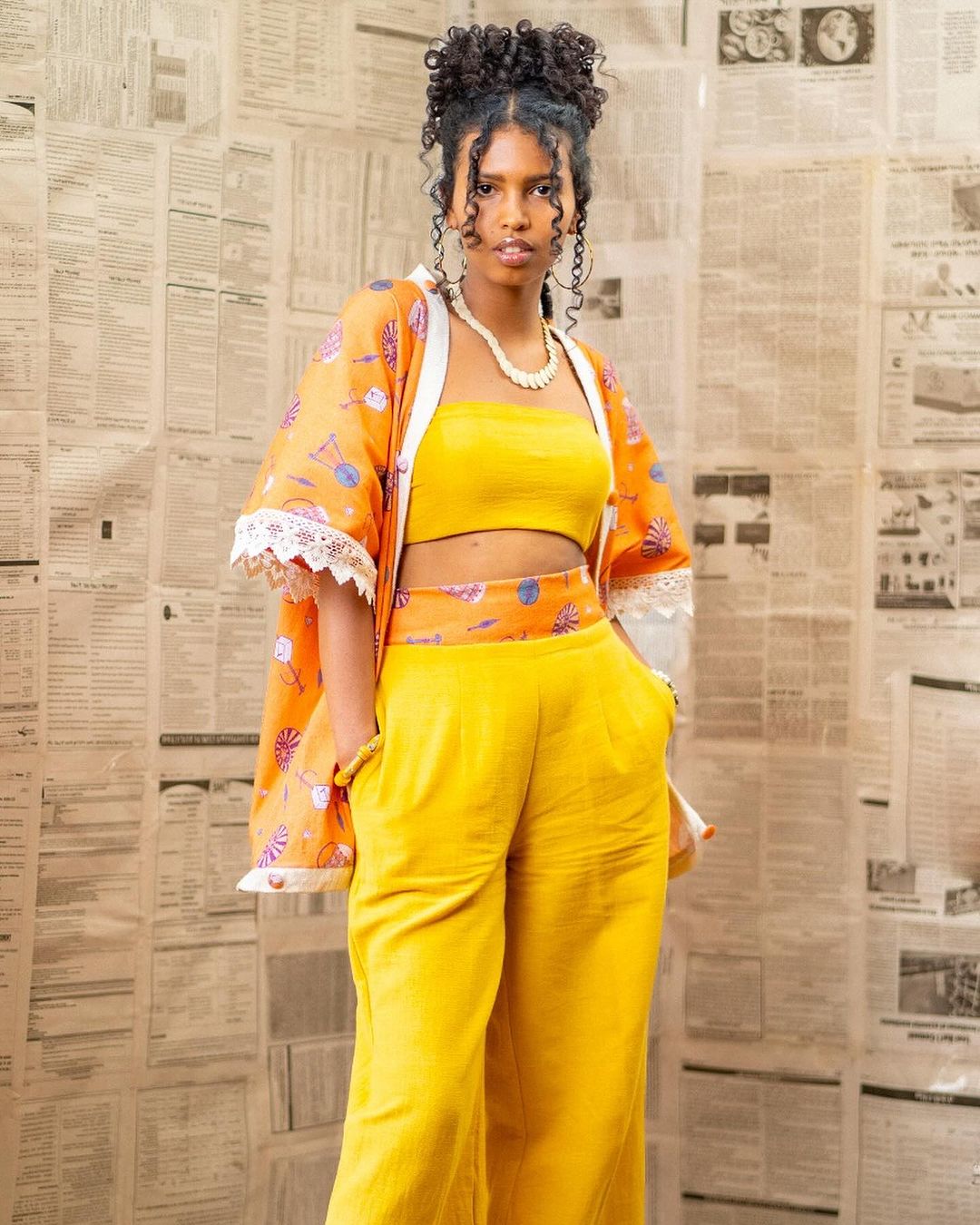 Made by DOLMEL from Ethiopia [PHOTO EATLW]
Made by DOLMEL from Ethiopia [PHOTO EATLW]
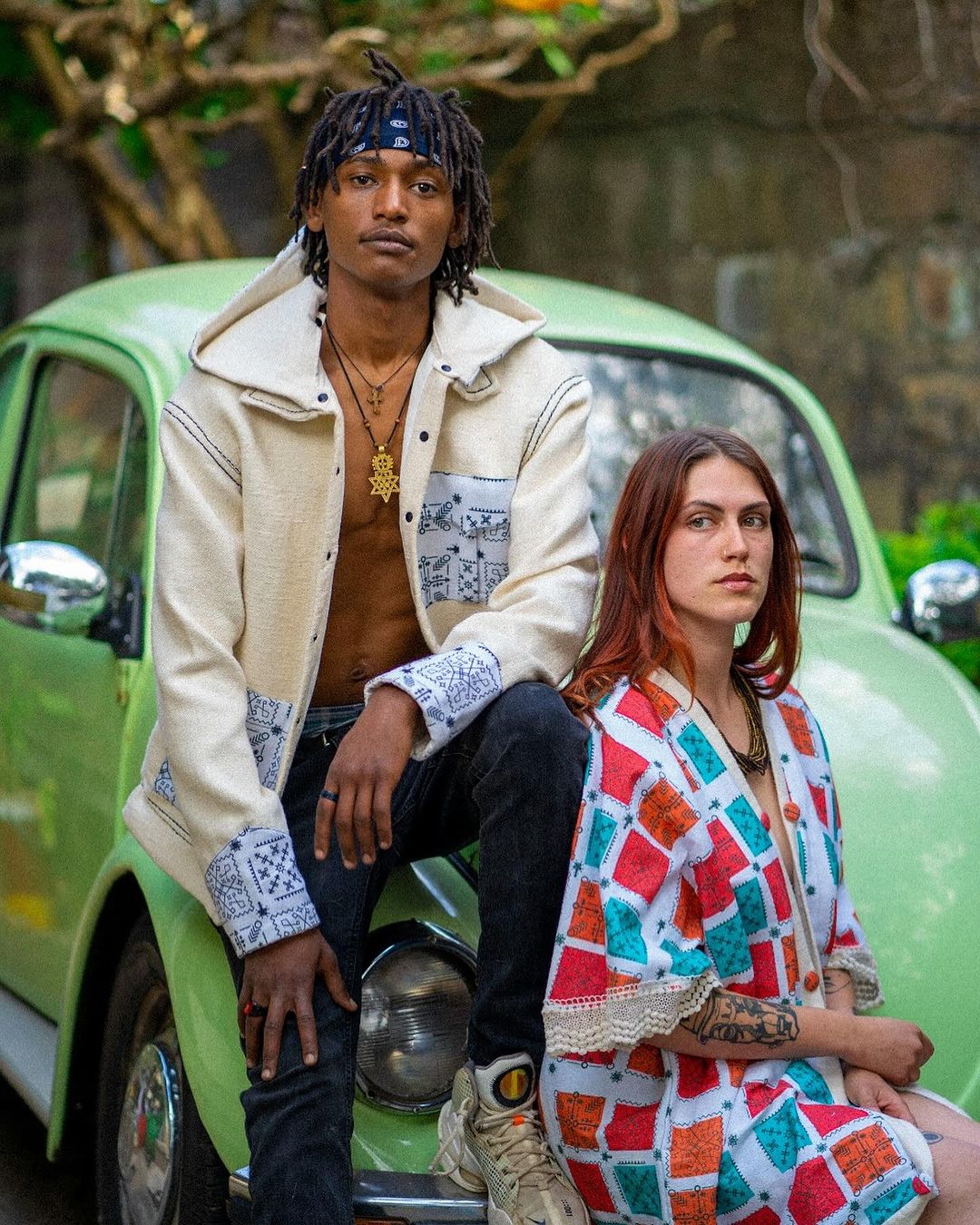 Made by DOLMEL from Ethiopia [PHOTO EATLW]
Made by DOLMEL from Ethiopia [PHOTO EATLW]
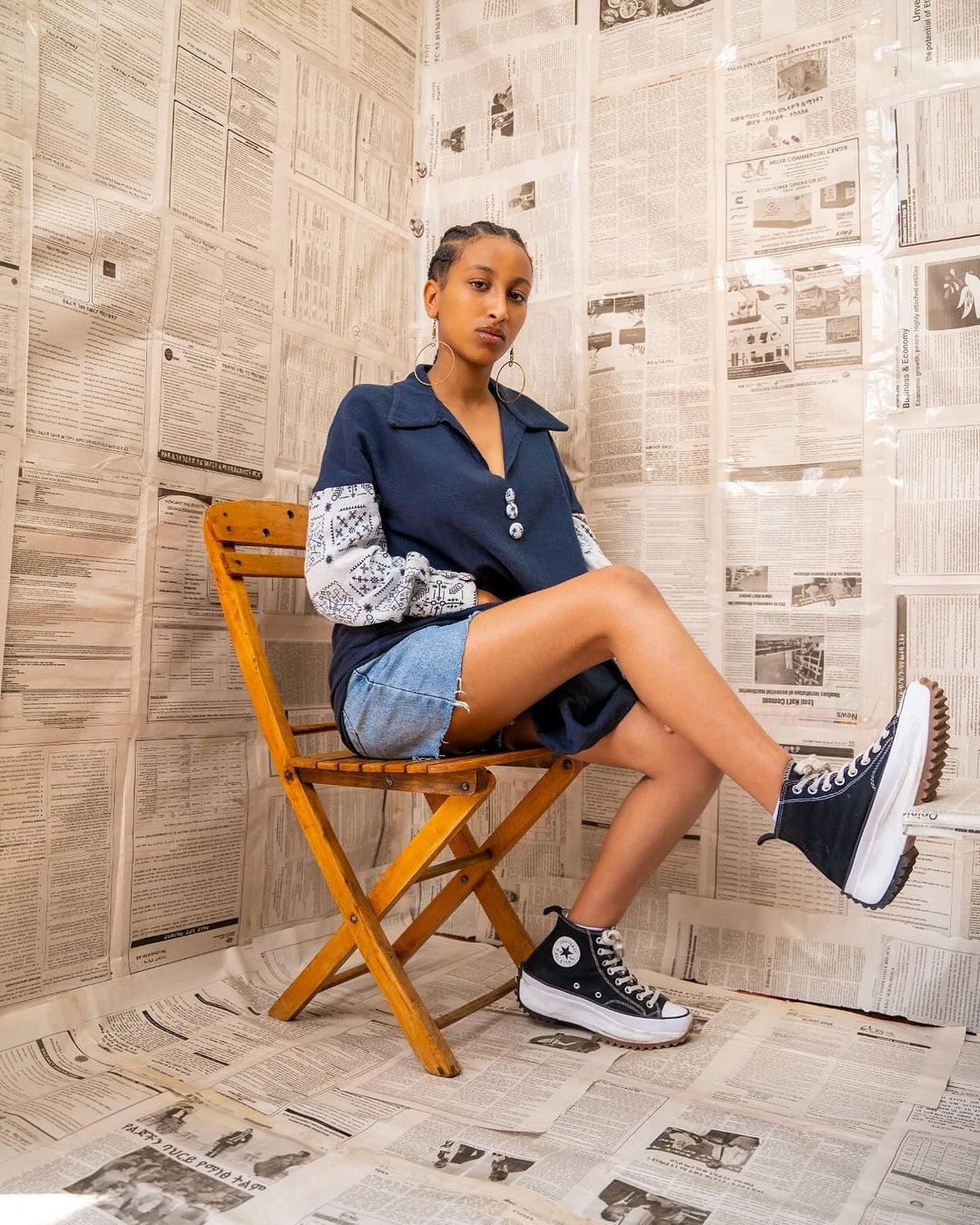 Made by DOLMEL from Ethiopia [PHOTO EATLW]
Made by DOLMEL from Ethiopia [PHOTO EATLW]
The DolMel is an Ethiopian fashion brand bringing a unique approach that pushes the millennia-old tradition of hand-weaving into the 21st century. They do this by using high-tech digital reactive printing to produce rolls of various kinds of seamless patterns on a cotton hand-woven fabric. This later turns into bohemian inspired clothes that celebrates and expresses one’s unique identity.These innovative products are the first of their kind in the textile and fashion industry in Ethiopia.
 Island Kikapus from Kenya will showcase at the East Africa Textile and Leather Week (EATLW) 2024 [PHOTO EATLW]
Island Kikapus from Kenya will showcase at the East Africa Textile and Leather Week (EATLW) 2024 [PHOTO EATLW]
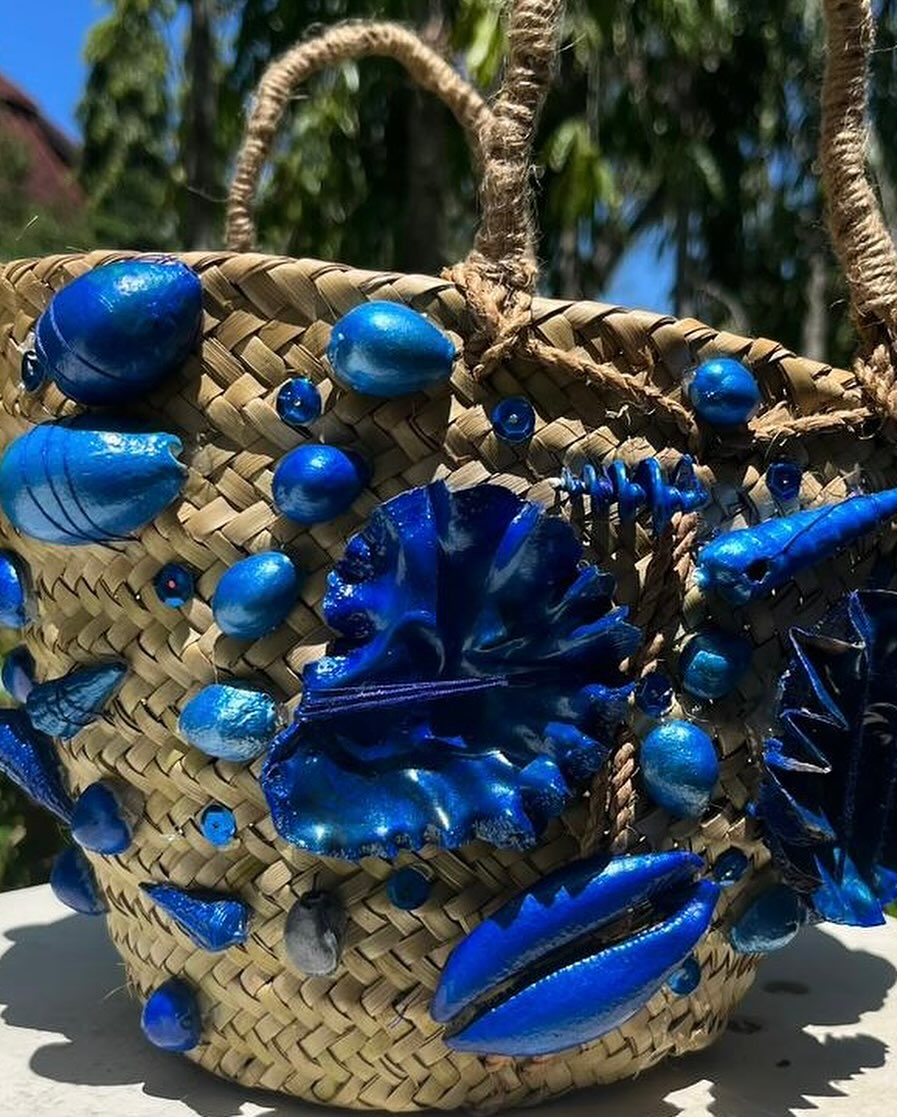 Made by Island Kikapus from Kenya [PHOTO EATLW]
Made by Island Kikapus from Kenya [PHOTO EATLW]
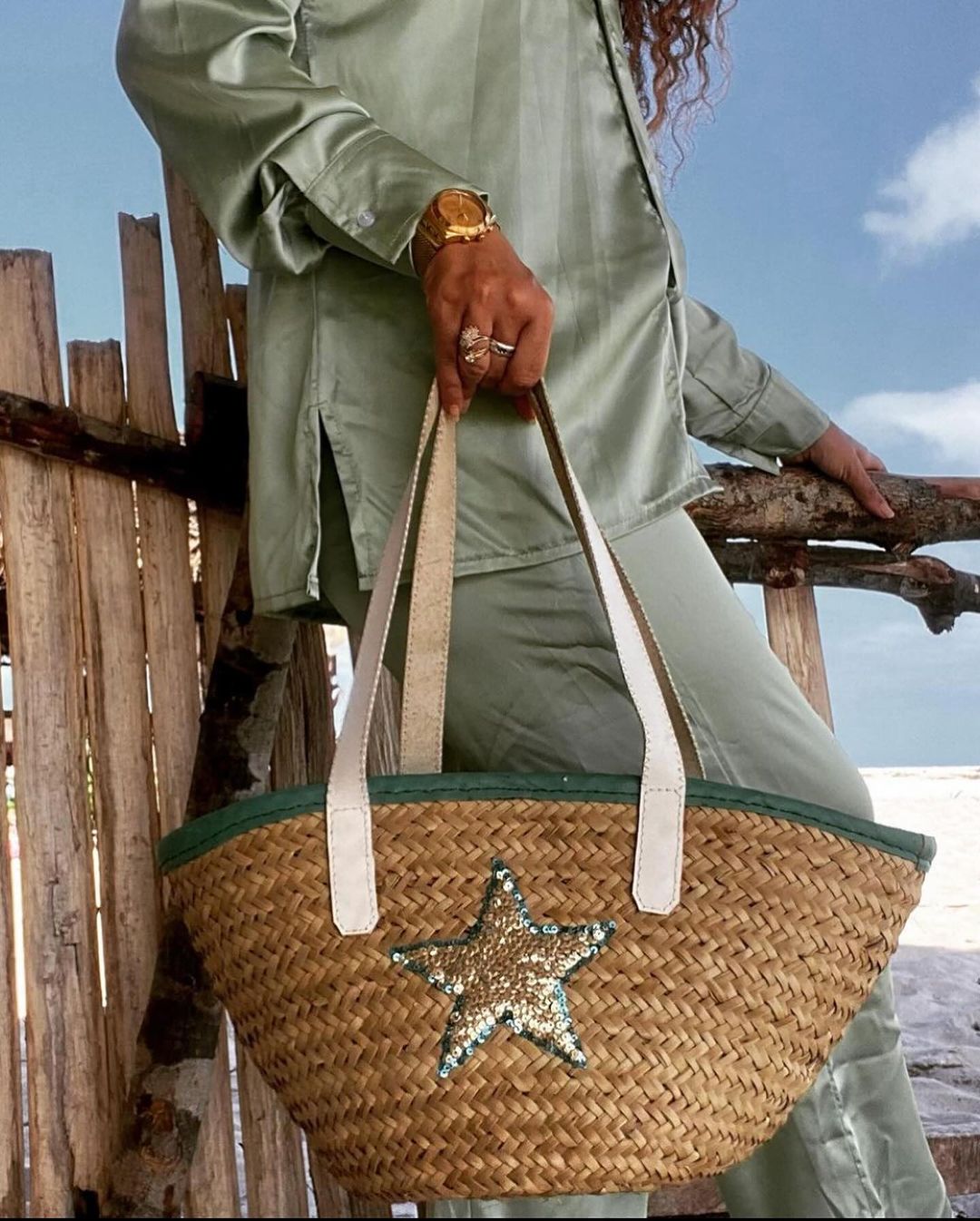 Made by Island Kikapus from Kenya [PHOTO EATLW]
Made by Island Kikapus from Kenya [PHOTO EATLW]
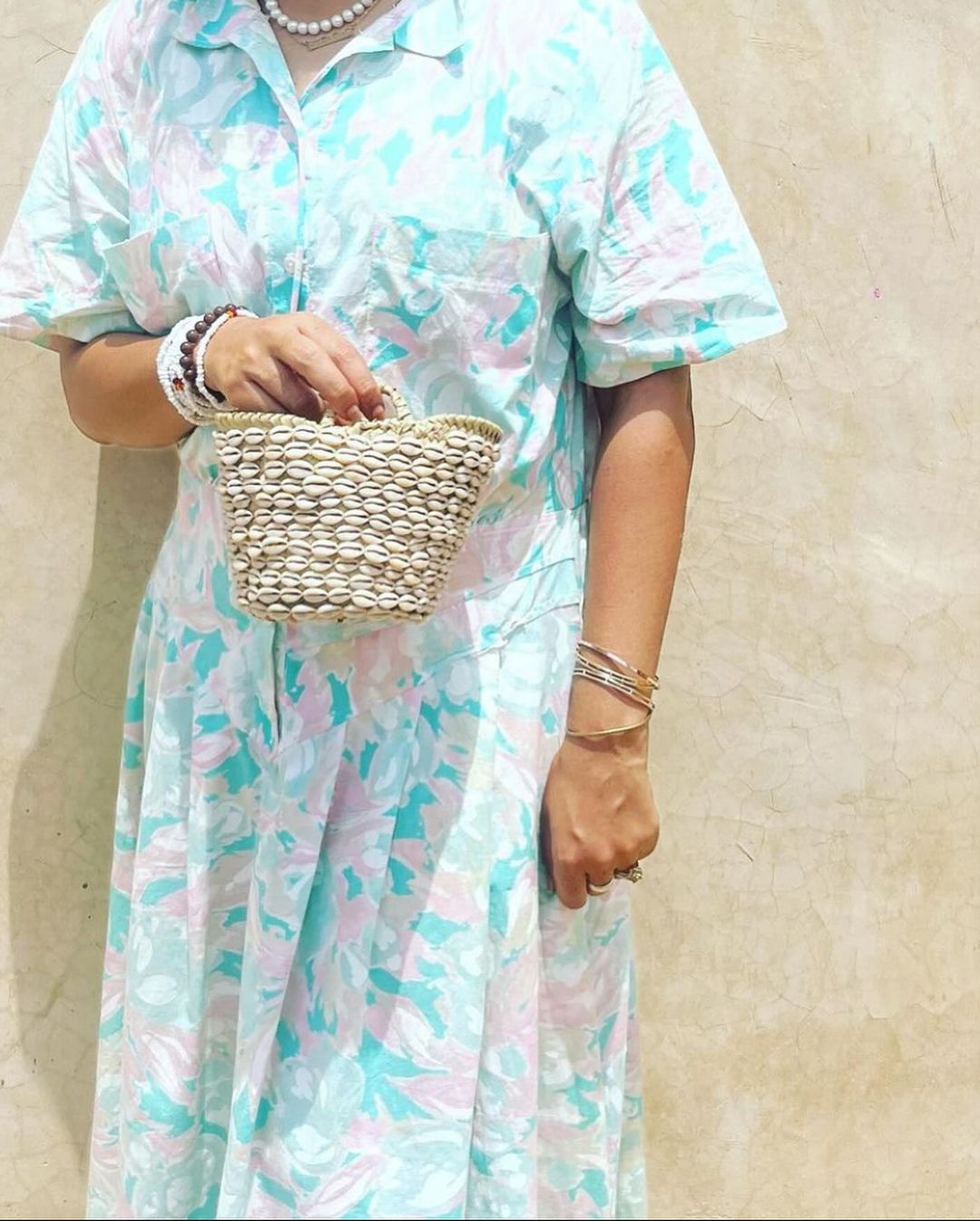 Made by Island Kikapus from Kenya [PHOTO EATLW]
Made by Island Kikapus from Kenya [PHOTO EATLW]
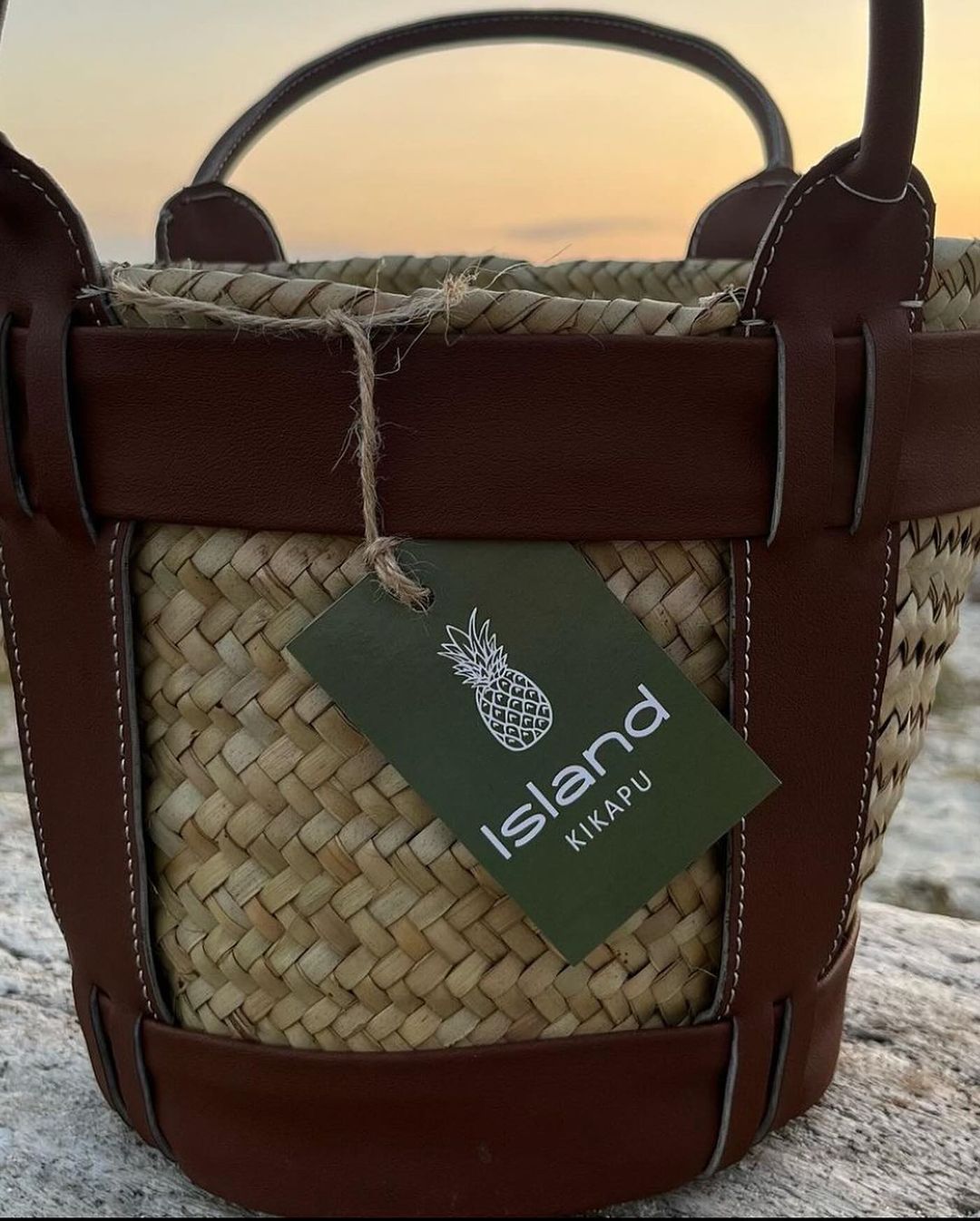 Made by Island Kikapus from Kenya [PHOTO EATLW]
Made by Island Kikapus from Kenya [PHOTO EATLW]
The Island Kikapus brings you unique baskets that merge luxurious fashion and style, perfect for every season and mission. Transforming locally woven baskets into versatile works of art with leather and decorations like never before. Each basket is hand-painted and adorned with artistic decorations such as flowers, sequins, embroidery, and various accessories.
Circular Economy and Sustainability in Africa: Fashion and Textiles
The circular economy concept, which aims to minimize waste and maximize resource efficiency, has gained significant attention in the fashion and textile industry, particularly in Africa. The African continent faces unique challenges and opportunities concerning sustainable fashion and textiles.
 Stunning Kimono created from upcycled fabrics by AFC in Kenya [PHOTO NT]
Stunning Kimono created from upcycled fabrics by AFC in Kenya [PHOTO NT]
The fashion and textile industries play a significant role in the circular economy and sustainability efforts in Africa. These industries face various challenges, including resource depletion, environmental pollution, and unethical labor practices. However, there are also opportunities for adopting circular economy principles to address these issues and promote sustainable development.
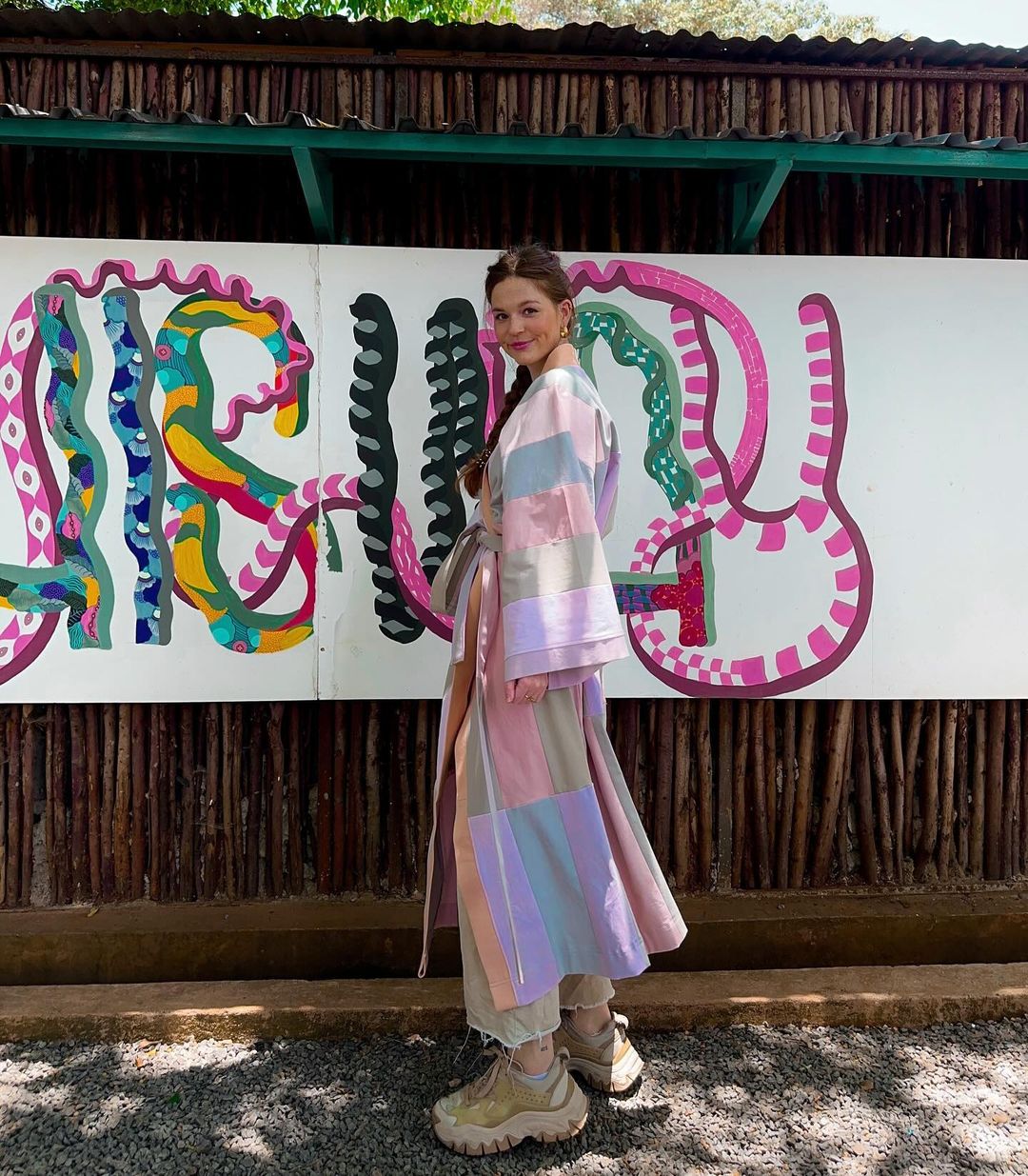 Stunning Kimono created from upcycled fabrics by AFC in Kenya [PHOTO NT]
Stunning Kimono created from upcycled fabrics by AFC in Kenya [PHOTO NT]
Textiles and clothing are a fundamental part of everyday life and an important sector in the global economy. Worldwide, the USD 1.3 trillion clothing industry employs more than 300 million people along the value chain, and the production of cotton alone accounts for almost 7% of all employment in some low-income countries. Out of the many African countries growing and selling cotton, eleven do so under the label Cotton Made in Africa (CmiA), representing 40% of African cotton production.
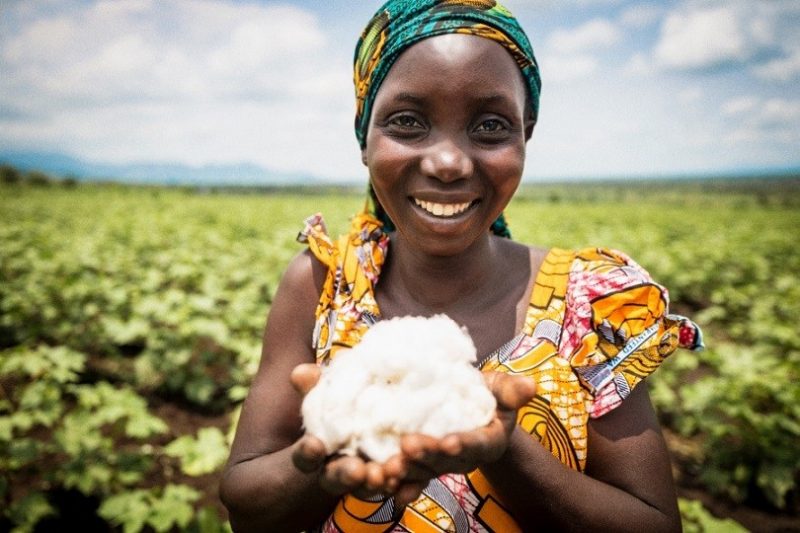 A woman holding cotton on a farm cotton [PHOTO NT]
A woman holding cotton on a farm cotton [PHOTO NT]
In Africa, cotton is almost exclusively grown by smallholder farmers, and there are very few large plantations. The cotton plant loves warmth: it needs about 200 days of sunshine in the season to flourish and bear fruit. For that reason alone, it does well in the dry or humid savannahs of Africa. The climate, with its high average temperatures and alternation between dry and wet seasons, favors the cultivation of this natural fibre crop.
Under the (CmiA) initiative, a total of 900,000 small-scale farmers across eleven African countries produce 715,000 tons of sustainable cotton for the international market and benefit from business and agricultural training. On the manufacturing side, historically, many African countries had vibrant textile industries, with long-standing links to EU-based brands and retailers. Although the biggest textile-producing countries today are China and India, “Made In Africa” is gaining traction, and many brands are moving their production from Asian to African countries, with Ethiopia positioning itself as a leader in the development of the textile industry in East Africa.
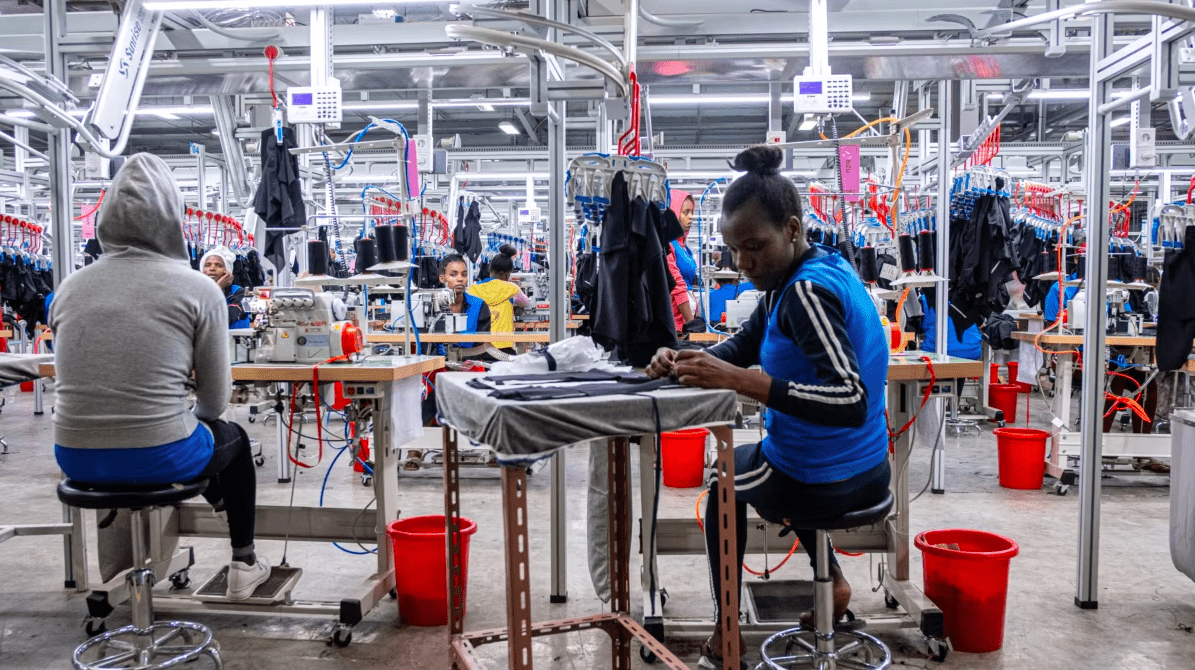 Inside a garment factory in Ethiopia [PHOTO NT]
Inside a garment factory in Ethiopia [PHOTO NT]
Currently, in sub-Saharan Africa, the combined apparel and footwear market is estimated to be worth USD 31 billion and the textile industry in Africa is estimated to grow at a CAGR of ~5% over the forecast period of 2019–2024. The demand for African designs, textiles, and garments is increasing within and beyond the continent. With the growing population and expanding middle classes, the demand for clothing (both local and imported) is expected to rise. African countries, such as Rwanda and South Africa, are planning to revitalize the national textile industry.
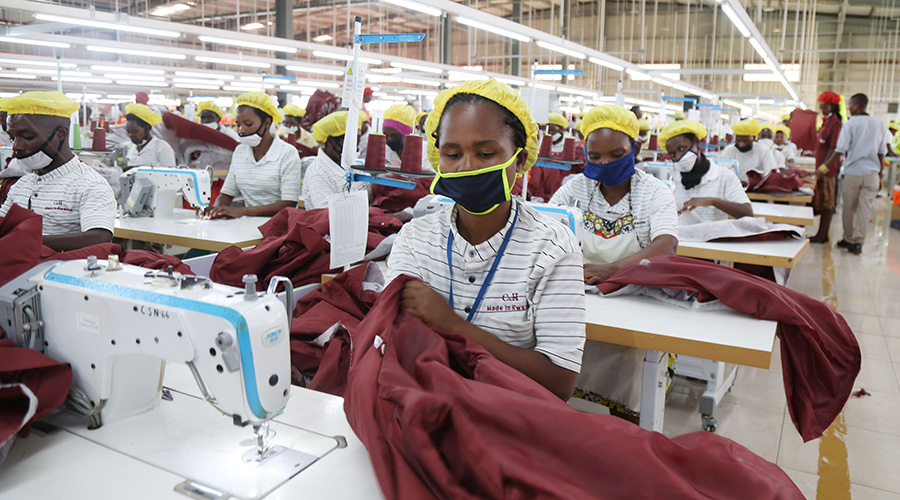 Inside a garment factory in Rwanda [PHOTO NT]
Inside a garment factory in Rwanda [PHOTO NT]
On the global stage, African fashion designers are gaining prominence and for many people, the African fashion industry remains a source of economic inclusion, innovation, and promotion of cultural identity.
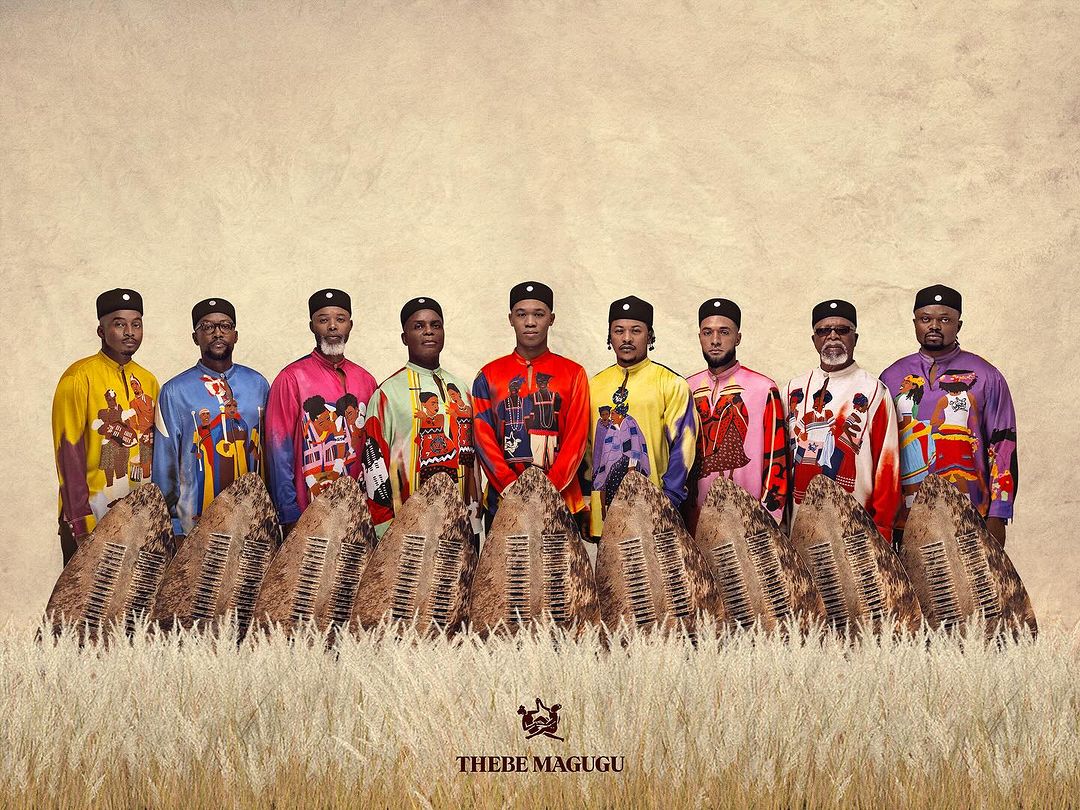 A collection made in South Africa by THEBE MAUGUG [PHOTO THEBE MAUGUGU]
A collection made in South Africa by THEBE MAUGUG [PHOTO THEBE MAUGUGU]
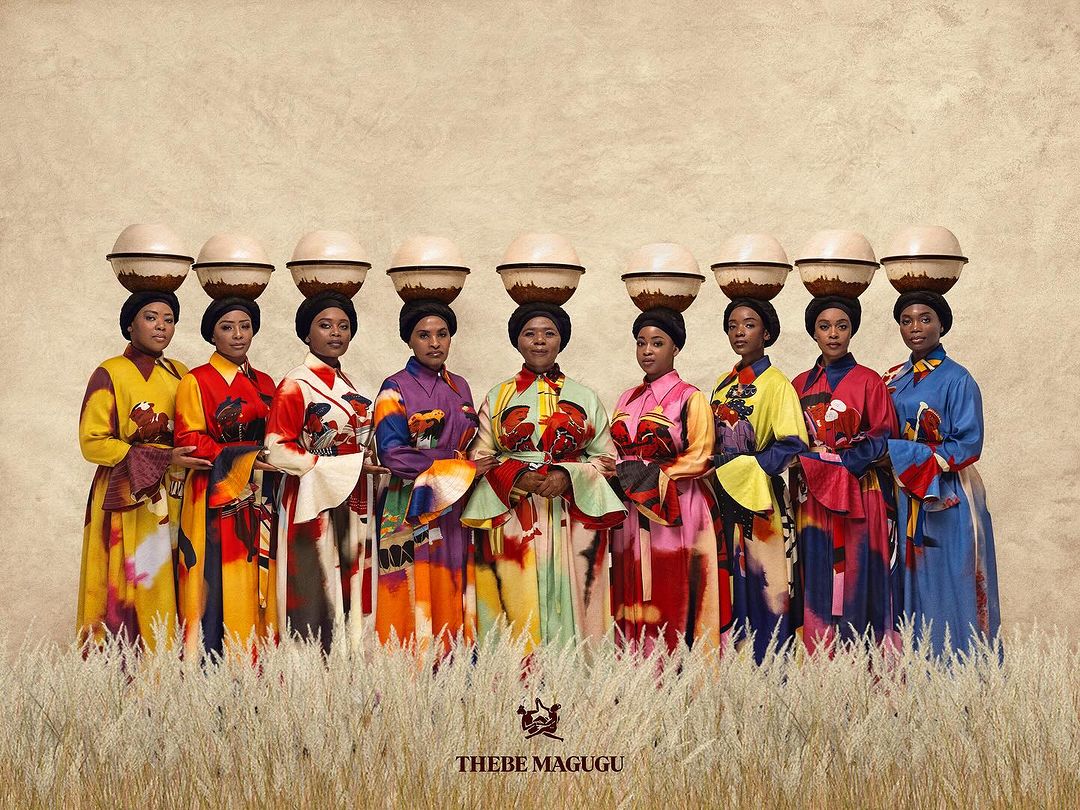 A collection made in South Africa by THEBE MAUGUG [PHOTO THEBE MAUGUGU]
A collection made in South Africa by THEBE MAUGUG [PHOTO THEBE MAUGUGU]
These encouraging trends for the textile sector are not without challenges. Firstly, conventional textile manufacture is associated with labor rights violations; unsafe working conditions; excessive consumption of raw materials, water, and energy; use of Persistent Organic Pollutants (POPs) in industrial operations; as well as water and air pollution. As big brands are increasingly seeing Africa as a new destination for their production facilities, the risks of replicating the same environmental and social negative outcomes seen in some Asian countries are high.
Secondly, downstream, the impact of clothing waste is particularly devastating for African countries, where second-hand clothing is increasingly exported. In the capital of Ghana, the Accra Metropolitan Assembly picks up around 70 metric tons of imported clothing waste from the Kantamanto market every day, six days a week. A lack of capacity to collect and recover textiles leads to clothing being disposed of informally – meaning it is burned and the ashes are swept into the gutters, where it makes its way to the sea; or it is brought to ‘informal’ dumpsites. The total impact of leaching dyes, chemicals, and microfibres on the environment, people’s health, and biodiversity loss is significant.
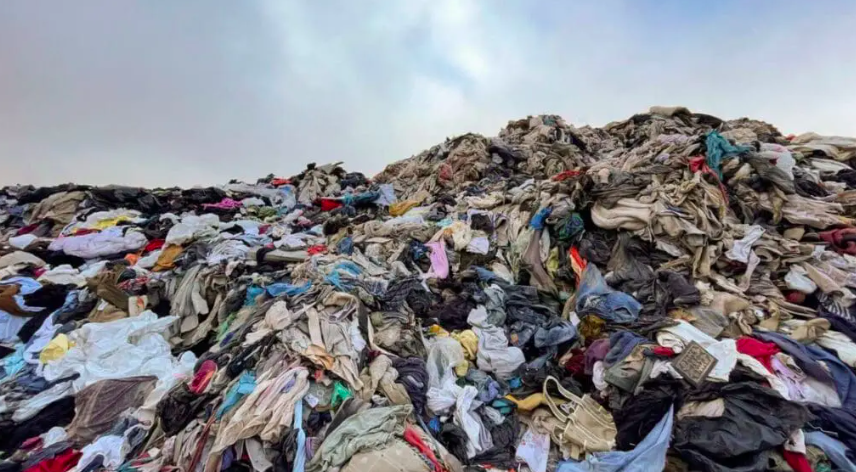 Old clothes dumped in mixed with other trash [PHOTO NT]
Old clothes dumped in mixed with other trash [PHOTO NT]
According to Climate Action, the challenges of textile waste in Africa are numerous, with serious environmental, economic, and social consequences. " People on the red carpet wear outfits that they will never wear again This is to argue that the fashion sector lacks sustainability and environmental care, resulting in increased textile waste in Africa. The catchphrase is always “Who are you wearing” and there will be no recycled outfits on the next red carpet"
Furthermore, according to the Future Investment Initiative Institute, the fashion industry emits more than 1.2 billion tons of greenhouse gas emissions every year as more clothes are produced each year and worn for increasingly shorter periods. That represents one-tenth of total emissions, more than all foreign flights and maritime shipping combined. Fast fashion companies are dumping textile waste in Africa, exacerbating a cycle of environmental degradation and social injustice. Africa is at the center of the expanding textile waste challenge.
The case for a thriving textile industry is clearly emerging in Africa, with potential important gains in terms of job creation and skills development. A circular economy holds the key to a prosperous, inclusive, and resilient fashion industry in Africa while avoiding the drawbacks of the current linear system that have detrimental impacts on people’s well-being and the environment.
The Latest in African Print Patterns
 African print pattern- Made in Africa dress [PHOTO NT]
African print pattern- Made in Africa dress [PHOTO NT]
African print patterns have always been a statement of culture, identity, and personal style. In 2024, we're seeing these prints evolve into even more intricate, bold, and dynamic designs. From the classic Ankara to the mesmerizing Kente, designers are pushing boundaries and blending patterns. African prints have always been very beautiful and colorful, but this year we've already seen that this has been turned up a notch.
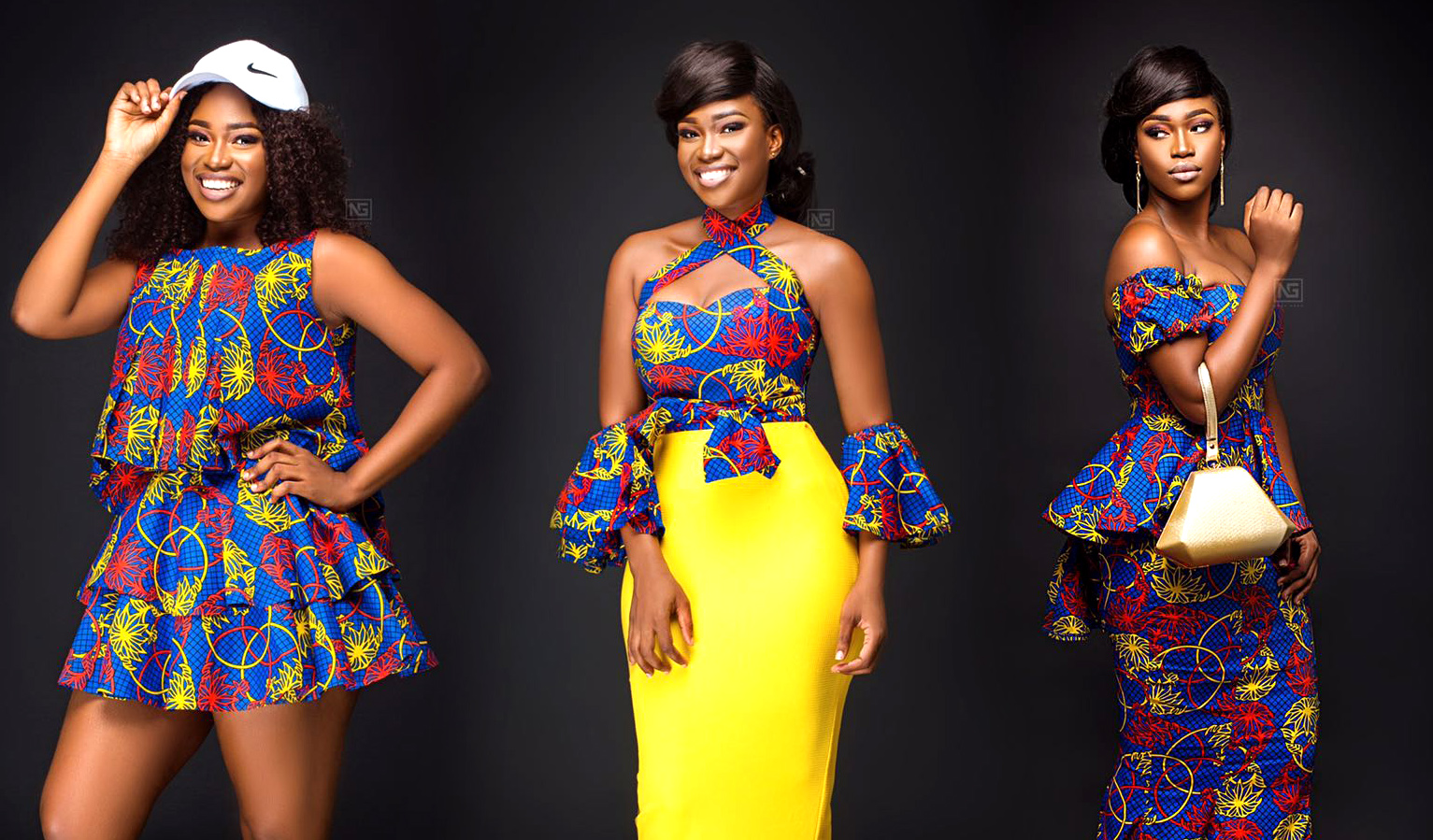 African print patterns [PHOTO NT]
African print patterns [PHOTO NT]
Making the wearer of these colorful fabrics and gorgeous patterns feel royal. This is especially seen with the launch of the new silky Satin Royal fabric by Vlisco. The traditional fabrics we all know and love are still very much alive, but we think we'll be seeing more fabrics with new patterns and color pallets that will suit modern designs.
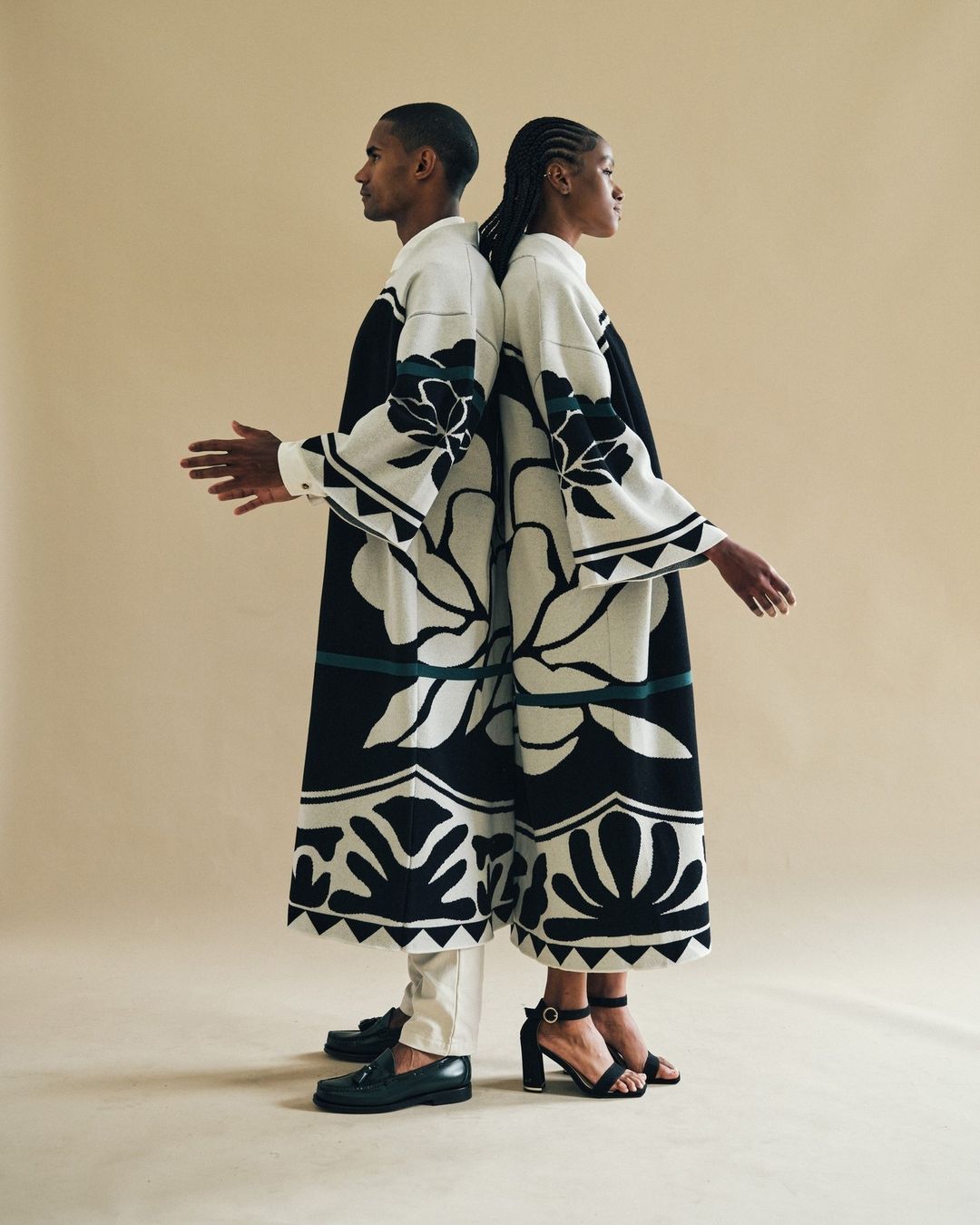
African print pattern- Made in Africa by Mille Colines [PHOTO MC]
Some information in this article is from the research by the Ellen MacArthur Foundation
LATEST NEWS
One week to go until Africa Sourcing and Fashion Week 2024: Designers, Exhibitors, and Speakers
01 November 2024 282 hitsOne week to go until Africa Sourcing and Fashion Week 2024: Designers, Exhibitors, and Speakers The countdown has begun for…
9 Years Milestone: Moses Turahirwa and His Moshions Brand Rwanda-Based
25 October 2024 434 hits9 Years Milestone: Moses Turahirwa and His Moshions Brand Rwanda-Based Over the past decade, Rwanda's fashion industry has emerged as…
What to Expect in Lagos Heineken Fashion Week 2024: Runways Kick off Today
23 October 2024 538 hitsWhat to Expect in Lagos Heineken Fashion Week 2024: Runways Kick Off Today The prestigious Heineken Lagos Fashion Week (LagosFW),…
Storytelling Meets High Fashion at The Kenya Fashion Story 2024
23 October 2024 625 hitsStorytelling Meets High Fashion at The Kenya Fashion Story 2024 The convergence of narrative and haute couture takes center stage…
Why Former Model Franco Kabano Is Backing the Stage Fashion Showcase's Founder
23 October 2024 537 hitsWhy Former Model Franco Kabano Is Backing the Stage Fashion Showcase's Founder In Rwanda's fashion industry, Franco Kabano and Sandrine…
The Stage Fashion Showcase 2024 Pre-Event Highlights Emerging and Established Talents: Main Event Set for November 1
20 October 2024 515 hitsThe Stage Fashion Showcase 2024 Pre-Event Highlights Emerging and Established Talents: Main Event Set for November 1 The fashion scene…
FASHION SHOPS
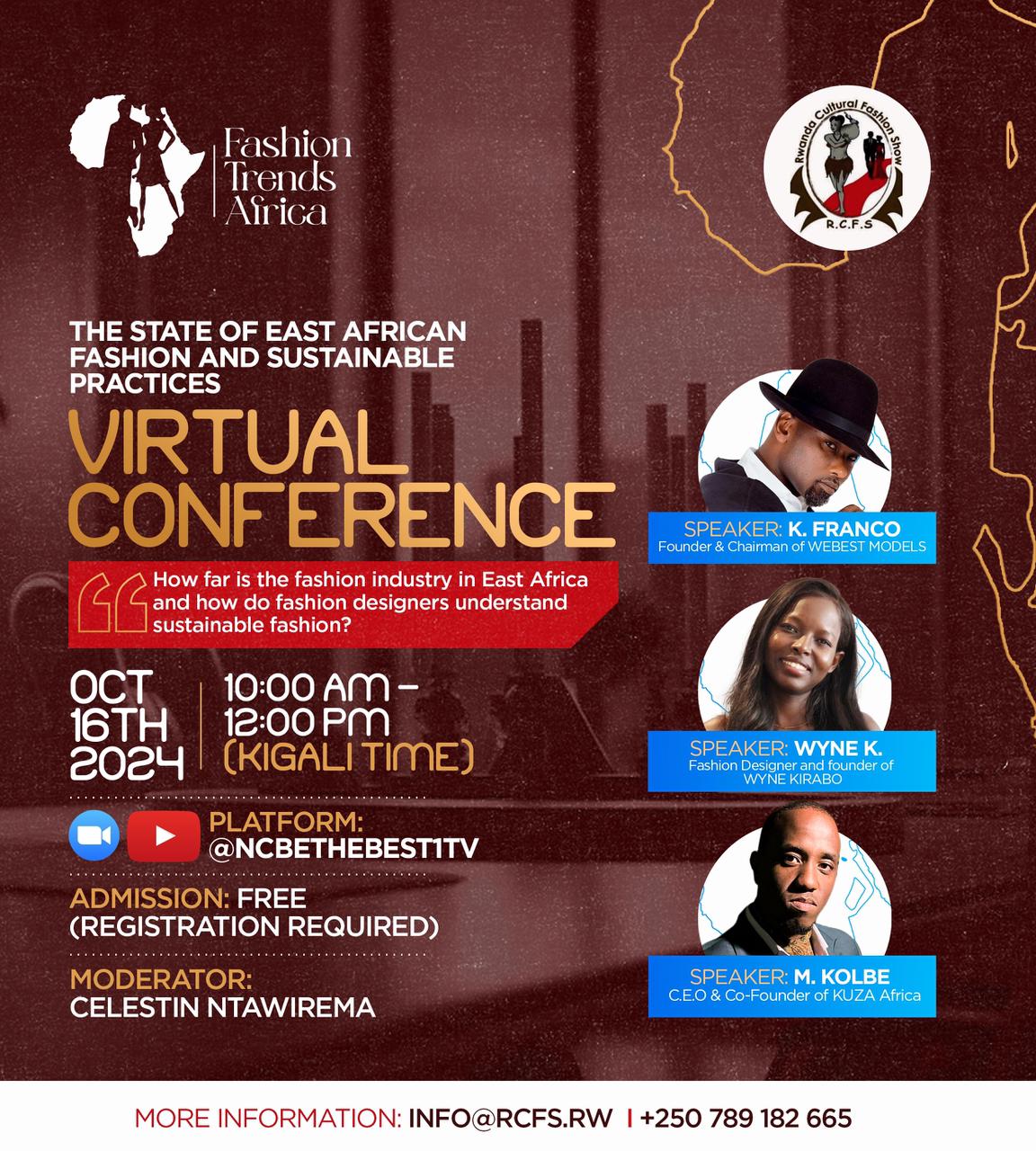



![The President of the Republic of Kenya William Ruto and his wife has officially opened the VIVO shop in the USA [PHOTO IG]](/media/k2/items/cache/4a071c64184f6ed127d1b90fcde1a863_Generic.jpg)
![Meet African Fashion Designers Showcased at the SoCreative Summit 2024, In Johannesburg[PHOTO EAA]](/media/k2/items/cache/6ddb2450462828abf9aabc88d6bfb7fe_Generic.jpg)
![Wandia Gichuru, co-founder and CEO of Vivo Fashion Group [Photo Elena Zhukova]](/media/k2/items/cache/58b053c805beeea9e04dde1724076741_Generic.jpg)
![Wandia Gichuru, co-founder and CEO of Vivo Fashion Group [Photo Elena Zhukova]](/media/k2/items/cache/3b77d3f73b59742412f393cd0d264b14_Generic.jpg)
![8 Fashion Brands Already Confirmed to showcase at the EATLW 2024 [PHOTO RCFS]](/media/k2/items/cache/218fa54275e0e31c37b4e5091d9112ba_Generic.jpg)
![8 Fashion Brands Already Confirmed to showcase at the EATLW 2024 [PHOTO RCFS]](/media/k2/items/cache/edab5e545cc8cf6a49faaa8a9ea6a3d0_Generic.jpg)
![Workers at New Kigali Designers and Outfitters, a garment factory located in Gasabo district, Gisozi sector[PHOTO NT]](/media/k2/items/cache/8462850dbb62c4bd159ee1ad55df6950_Generic.jpg)
![Workers at New Kigali Designers and Outfitters, a garment factory located in Gasabo district, Gisozi sector[PHOTO NT]](/media/k2/items/cache/7081cca2f9cd0c06f2cce9e93d01dda9_Generic.jpg)
![F&M Brand from Kenya will showcase at the East Africa Textile and Leather Week (EATLW) 2024 [POSTER EATLW]](/media/k2/items/cache/7ced67c0d648122bcae10129de981341_Generic.jpg)
